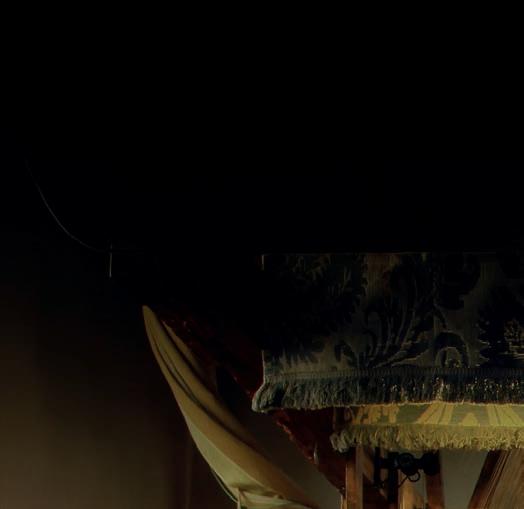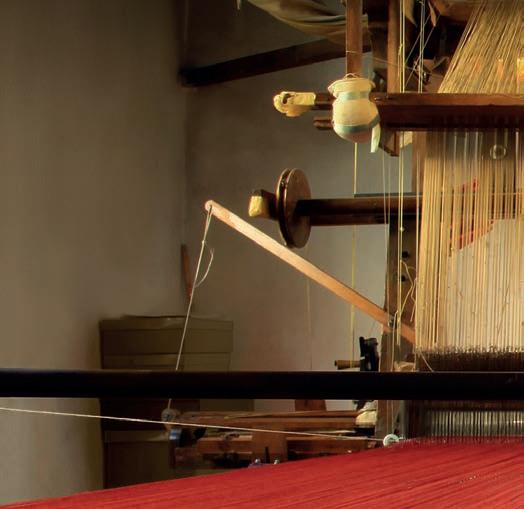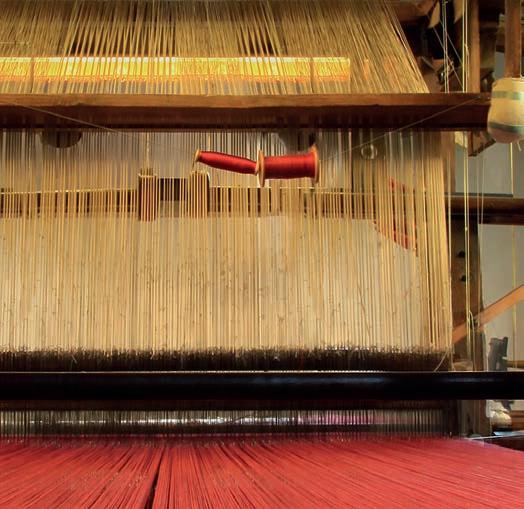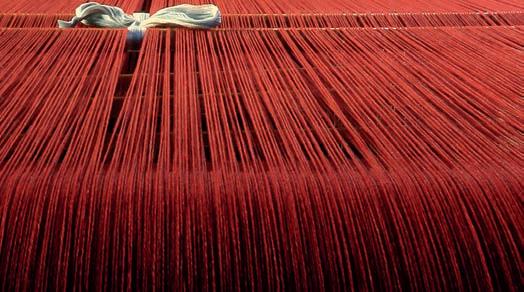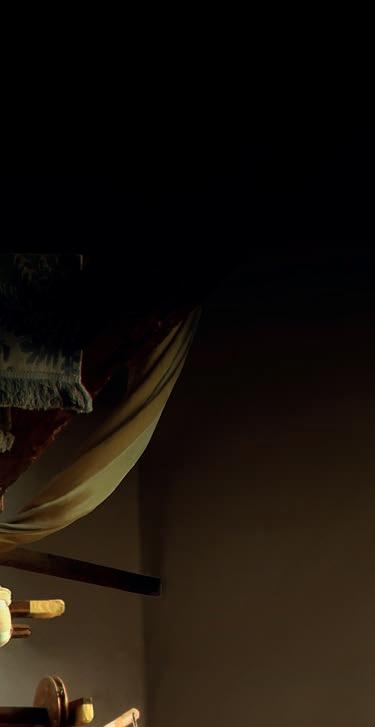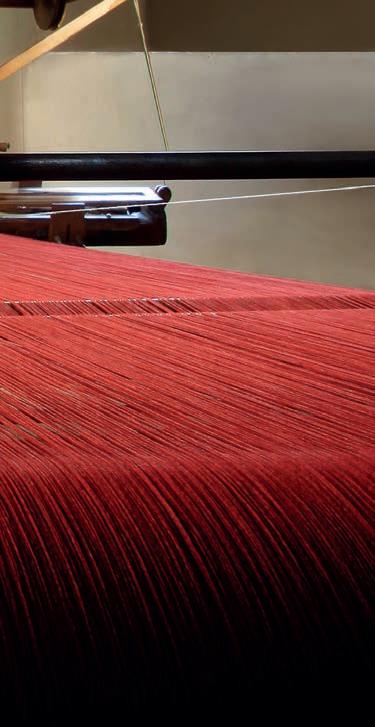
























E DELL’ARTIGIANATO
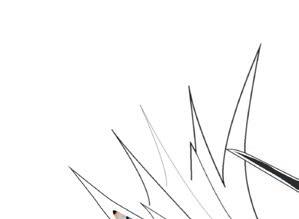
r e s e n c e
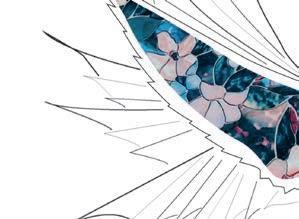

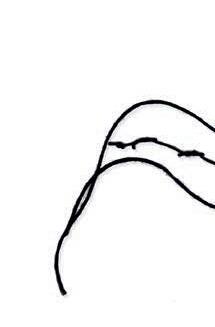
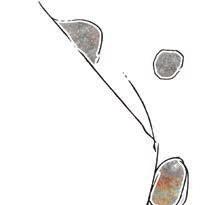
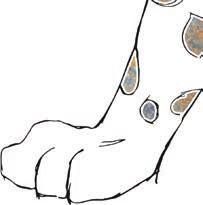



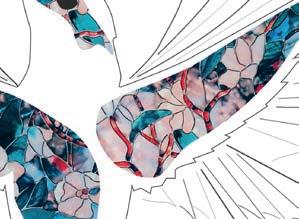




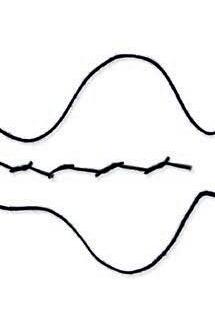
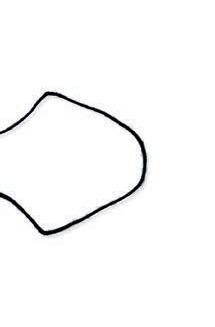
The covers of Associazione OMA newsletters are created by students attending the Communication Graphics course at the IED Firenze (European Design Institute)
Luca Parenti Coordinator
Laura Ottina Basic Design
Marco Innocenti Presentation Techniques
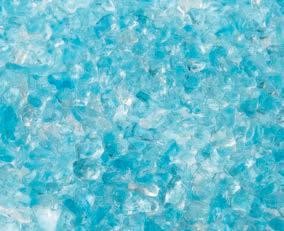
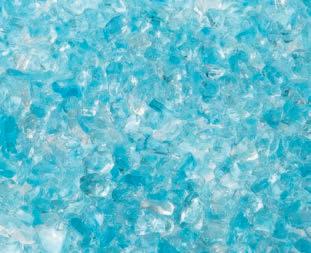

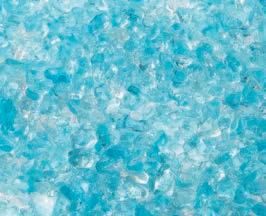
















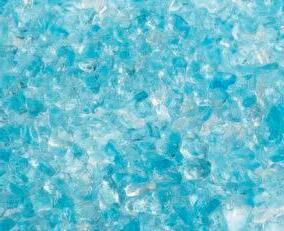

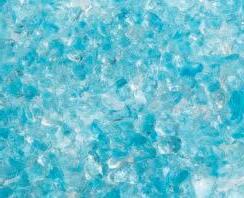
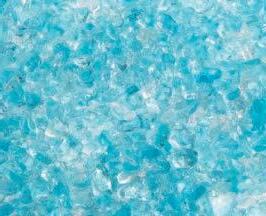




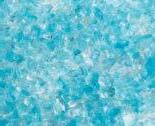

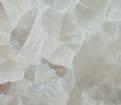

Le copertine delle newsletter di Associazione OMA sono realizzate dagli studenti IED FIRENZE del corso di Grafica per la comunicazione
Luca Parenti Coordinatore
Laura Ottina Basic Design
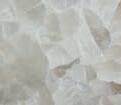
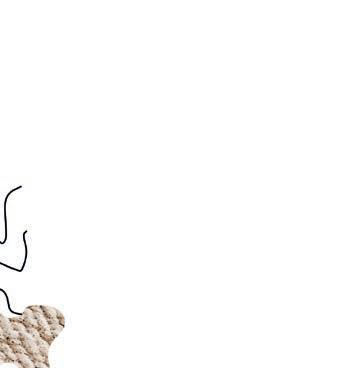

Marco Innocenti Tecniche di presentazione


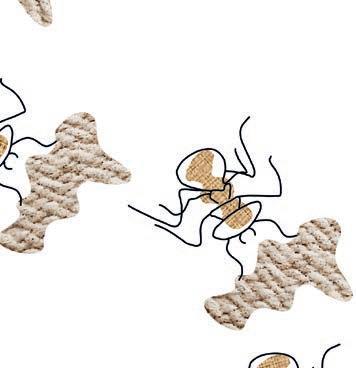



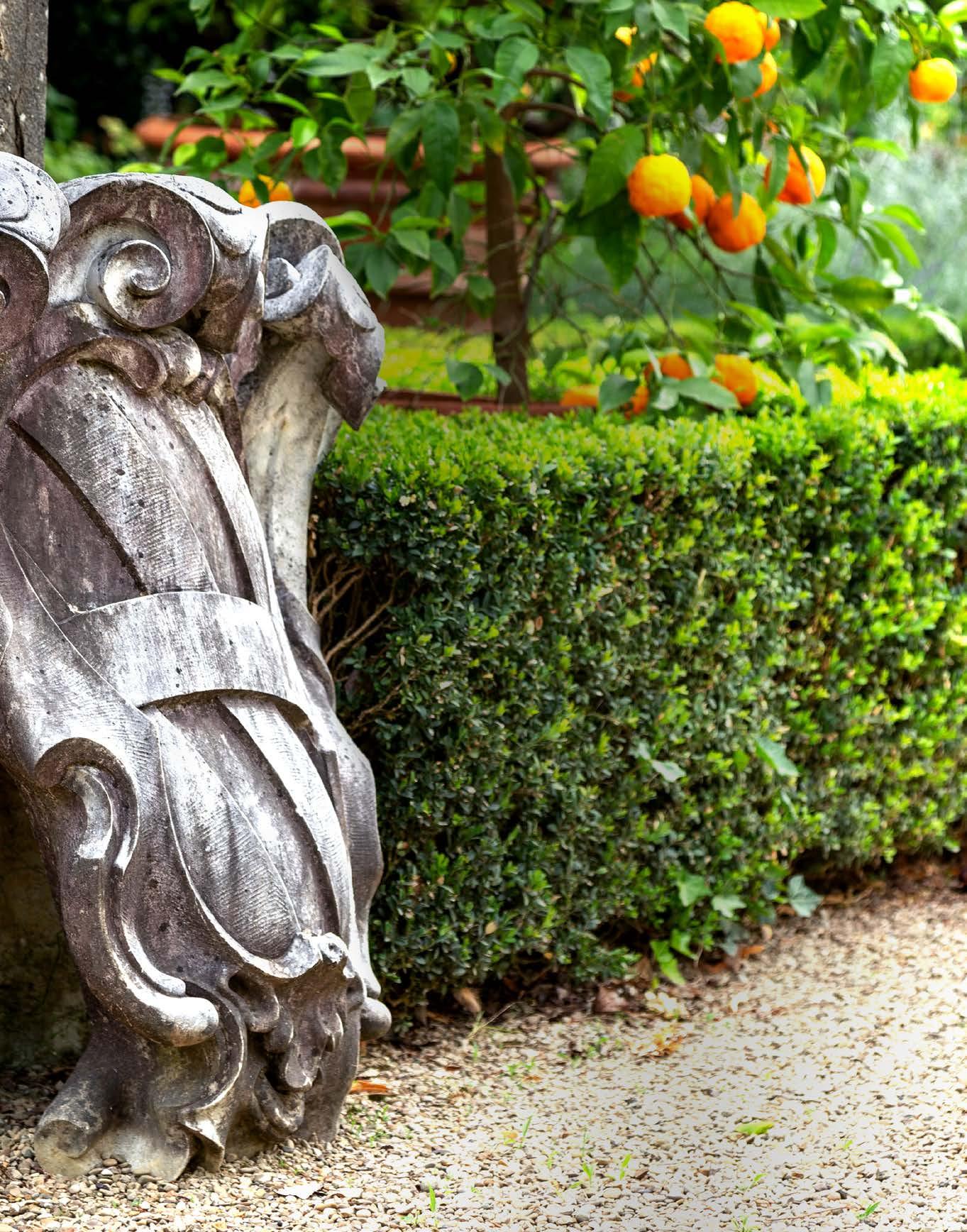
EDITORIAL
Luciano Barsotti
The new issue of our biannual magazine comes at a very special time for events relating to the arts; the Artigianato e Palazzo event of Florence celebrates its thirtieth anniversary this year with an extensive edition. There will be numerous collaborators and special guests, including the exhibition at the Loggia del Buontalenti of the ten works which were the fnalists at the third edition of the Starhotels La Grande Bellezza Award. The theme of this year was ‘Souvenir of the Grand Tour’ and the winner will be announced during the event. We wanted to present number 87 of our biannual magazine Hands to the public and celebrate it with a special toast in the company of all friends and supporters of the OMA who have collaborated with us for this thirtieth anniversary. This special issue, which includes a selection of the best Tuscan producers and the territories of the associated funders, focuses in particular on the theme of the multi-faceted sector of paper processing. At the same time, it offers an in-depth analysis of another interesting bi-yearly event such as the 12th edition of the Lucca Biennale Cartasia International Exhibition that enlivens the historic centre of Lucca with large artworks in paper and cardboard, shows and performances. In Venice, it is this time again for Homo Faber, the important event organised by the Michelangelo Foundation which this year will focus on the theme ‘The Journey of Life’. The event will feature spectacular displays, original artworks, live demonstrations and a particularly rich selection of unique objects made by master craftsmen from all over the world, with an extraordinary variety of innovative techniques and approaches which will highlight their skills - the representation of the creative energy of professionals, capable of transforming matter into unique objects with great expressive value.
Il nuovo numero del nostro semestrale si apre in una stagione di particolare fermento per gli eventi dedicati ai mestieri d’arte; la manifestazione forentina Artigianato e Palazzo compie trent’anni e festeggia con una edizione ricca di collaborazioni e di straordinarie partecipazioni tra cui l’esposizione sotto la Loggia del Buontalenti delle dieci opere fnaliste del Premio La Grande Bellezza di Starhotels, alla sua terza edizione, incentrato sul tema ‘Souvenir del Grand Tour’ con la proclamazione del vincitore. Abbiamo voluto presentare al pubblico il numero 87 del semestrale Hands e onorarlo con un brindisi speciale insieme agli amici e sostenitori di OMA intervenuti in questo Trentennale. Lo speciale del numero che raccoglie una selezione delle migliori realtà produttive toscane e dei territori delle Fondazioni bancarie associate, affronta nello specifco il tema del variegato settore della lavorazione della carta, proponendo un approfondimento su un altro interessante appuntamento biennale come la 12° edizione della Mostra Internazionale Lucca Biennale Cartasia che con le grandi opere in carta e cartone, spettacoli e performance, conquista il centro storico di Lucca. A Venezia, torna Homo Faber, la grande kermesse della Michelangelo Foundation e quest’anno ricorre il tema ‘The Journey of Life’ con allestimenti spettacolari, opere originali e dimostrazioni dal vivo e una ricchissima selezione di oggetti unici realizzati da maestri artigiani provenienti da tutto il mondo, in una sorprendente varietà di tecniche e approcci innovativi per una valorizzazione delle competenze illuminate dalla forza creativa di professionisti capaci di trasformare la materia in ricchezza espressiva e originale.

Bernabò Bocca
Promoting cultural debate and the exchange of ideas about artistic craftsmanship is the primary mission of OMA magazine, which this year comes of age. And it now has a completely new graphic design, which has received high praise from sector experts and others. OMA is the tool that allows Foundations of banking origins to come together and address numerous topics surrounding the artistic professions, materials and artisan art-based activities in our various areas. It is strongly backed by Fondazione CR Firenze as a means to valorise and promote beauty, the expertise of the workforce and Italian know-how. The launch of this issue coincides with the thirtieth anniversary of Artigianato e Palazzo, an exhibition and cultural event that encompasses the very best of Florence: its creative output. On the occasion of this event, which has always been supported by Fondazione CR Firenze, we decided to award a prize which in itself is a tribute to high-quality craftsmanship: a scagliola piece created by the young artist Leonardo Bianchi, a third-generation Florentine scagliolista.
Our choice of recipient was the institution that best represents excellence in the restoration and preservation of artworks both in Italy and abroad: the Opifcio delle Pietre Dure. In a year in which we celebrate the life and work of the multifaceted artist Giorgio Vasari on the 450th anniversary of his death, I’d like to take this opportunity to invite everyone, especially the younger generations, to bring their enthusiasm and passion to the artisan trades, which in recent years have been suffering a truly worrying haemorrhage of talent. I wholeheartedly hope that the attractiveness of the ‘hand-made’ and its associated skills - the loss of which would indeed be a real tragedy - can arouse fresh enthusiasm and restore to the traditional professions the moral and economic dignity merited by the originality and enormous value of our Made in Italy sector.
Promuovere il dibattito culturale e il confronto di idee sul tema dell’artigianato d’arte è la missione primaria del magazine OMA che ha superato quest’anno la maggiore età. E si presenta ora in una veste editoriale completamente rinnovata, assai apprezzata non solo tra gli addetti ai lavori. È lo strumento con cui le Fondazioni di origine bancaria associate si confrontano sulle tante problematiche legate ai mestieri d’arte, alle materie e alle attività di artigianato artistico che si svolgono nei vari territori. È stato fortemente voluto da Fondazione CR Firenze per valorizzare e promuovere la bellezza e la competenza delle maestranze e del saper fare italiano. Il lancio di questo numero coincide con la celebrazione del trentennale di Artigianato e Palazzo, una manifestazione espositiva ed evento culturale simbolo della migliore Firenze, quella creativa e produttiva. Nell’ambito della manifestazione, da sempre supportata da Fondazione CR Firenze, abbiamo voluto consegnare un premio che è esso stesso un tributo all’artigianato di qualità: è infatti una scagliola realizzata dal giovane Leonardo Bianchi, terza generazione di scagliolisti a Firenze. Lo abbiamo voluto attribuire all’Istituzione che meglio rappresenta una assoluta eccellenza nel restauro e nella conservazione delle opere d’arte a livello nazionale e internazionale: l’Opifcio delle Pietre Dure. Nell’anno in cui si celebra la vita e l’operato di un artista poliedrico come Giorgio Vasari, nei 450 anni della scomparsa, colgo l’occasione di questo mio saluto per rivolgere un invito, soprattutto ai giovani, ad avvicinarsi con entusiasmo e passione alle professioni artigiane che in questi ultimi anni stanno subendo un’emorragia davvero preoccupante. Mi auguro vivamente che il fascino del ‘fatto a mano’ e le competenze, che sarebbe davvero grave venissero perdute, possano suscitare nuovi entusiasmi e possano restituire alle lavorazioni tradizionali quella dignità morale ed economica proprie dell’originalità e del grande valore del nostro Made in Italy.

PRESIDENT FONDAZIONE CR FIRENZE
CONTENTS
COMA MAG NUM 87
P.12
MARIALAURA ROSSIELLO IRVINE DESIGNER
To design is to love Progettare è amare
P.16
BOOK
Read, browse, love Leggi, sfoglia, ama
P.28
PAPER
The shape of paper La forma della carta
P.40
EXHIBITION
Reflection on time Riflessioni sul tempo
P.50
DOLCE&GABBANA FASHION
Hands and heart Le mani e il cuore
P.14
AROUND THE WORLD
GEORGETTE JUPE
My City
P.18 HISTORY
Wind from the East Vento d’Oriente
P.36 TRADITION
Sacred art and folklore Arte sacra e folklore
P.46
NEW TECH
3D REVOLUTION
Memory and future Memoria e futuro
P.56
NEW GENERATION
ROBERTO LUCCHI
A touch of style! Tocco di stile!
P.58
ARTIGIANATO E PALAZZO
NERI TORRIGIANI AND SABRINA CORSINI
Between the past and the future Tra passato e futuro
P.72
VASARI ANNIVERSARY
The best among the best Eccellente tra gli eccellenti
P.82
CULT OBJECTS
I want it
P.96
FOOD
PIER PAOLO PAGNERI A virtuous cycle Circolo virtuoso
P.66 HOMO FABER
ALBERTO CAVALLI Deep gestures Gesti profondi
SP.80
LA GRANDE BELLEZZA
THE THIRD EDITION OF THE BI-ANNUAL AWARD Small treasures Piccoli gioielli
P.92 ITALIA SU MISURA
P.98 CURIOSITY
DID YOU KNOW...
Associazione Osservatorio dei Mestieri d’Arte The six-monthly magazine of Fondazione CR Firenze
EDITOR IN CHIEF
Maria Pilar Lebole
EDITED BY Matteo Parigi Bini
EDITORS
Teresa Favi, Francesca Lombardi
Virginia Mammoli, Martina Olivieri
CONTRIBUTORS
Sabrina Bozzoni, Davide Paolini
Carlo Sisi, Grazia Tucci
PHOTOGRAPHERS
Romig Ciccarelli, Matteo De Fina, Chiara Fioravanti
Alex Dobe, Natalia Garcia, Dario Garofalo, Giulio Ghirardi
Federico Minelli, Irene Nucci, Ottavia Poli, Laila Pozzo
Alessandro Sansoni, Susanna Stigler
COVER Panta Rhei by Daniele Papuli
GRAPHIC DESIGNERS
Melania Branca, Clelia Giardina
TRANSLATIONS
Tessa Conticelli, Centotraduzioni, Landoor
ADVERTISING AND MARKETING DIRECTOR
Alex Vittorio Lana
ADVERTISING
Nicola Brigandì, Gianni Consorti Alessandra Nardelli, Monica Ofdani
PUBLISHER
Matteo Parigi Bini & Alex Lana via Cristoforo Landino, 2 - 50129 Firenze - Italy ph +39 055 0498097 | www.gruppoeditoriale.com redazione@gruppoeditoriale.com
PRINT September 2024 (Baroni & Gori)
copyright © Gruppo Editoriale srl
Via Bufalini, 6 - 50122 Firenze Tel. 055.5384951 redazione@osservatoriomestieridarte.it www.osservatoriomestieridarte.it
ASSOCIAZIONE OMA President: Luciano Barsotti
ORDINARY MEMBERS






























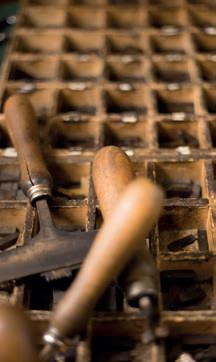
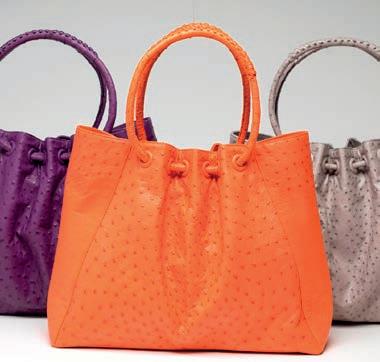

MARIALAURA ROSSIELLO IRVINE TELLS US
ABOUT HER ARTISAN DESIGN, CREATED TO BE ‘GOOD’
PROGETTARE È AMARE.
MARIALAURA ROSSIELLO IRVINE CI RACCONTA DEL SUO
DESIGN ARTIGIANALE, CREATO PER ESSERE ‘BUONO’
by Sabrina Bozzoni
Tell us about your approach to projects. It’s about whispering rather than shouting. A dialogue between objects, surfaces, space and light. Form is a consequence of this process of designing and producing.
What’s your frst design-related memory?
The Spyros ashtray by Eleonore Peduzzi Riva for Artemide in 1969, with a spiral and black sphere that put the cigarette out. Thought, playfulness, action. Then I came across Munari’s Cubo. I don’t smoke, but these are architectural pieces. Form and material in the service of function.
Which of your designs are you most fond of?
The P-saico mosaic for M+, which combines artisanship with industrial production. Small rectangles of porcelain gres are fxed on a mesh backing, giving the idea of a surface made by scattering the pieces.
For you, design and ethics go hand in hand…
Ci parli del suo approccio progettuale. Sussurrare e non urlare. Un dialogo tra oggetti, superfci, spazio e luce. La forma è una conseguenza di questo processo progettuale e produttivo.
Il suo primo ricordo ‘design’ dell’infanzia?
Il posacenere Spyros di Eleonore Peduzzi Riva per Artemide nel 1969, con una spirale e una sfera nera che spegneva la sigaretta. Pensiero, gioco, gesto. Poi ho incontrato il cubo di Munari. Non fumo, ma sono opere architettoniche. Forma e materia al servizio della funzione. La sua creazione a cui è più legata?

ph. Natalia Garcia
We have to design responsibly: respect the transformation of the materials, avoid creating the same thing for different companies, lengthen the lifetime of products…
A dream waiting to be fulflled?
To start with a lamp in which light speaks of substance, and then create my perfect ideal of a house by the sea with a Pompeian layout.
Il mosaico P-saico per M+, che unisce artigianato e produzione industriale. Piccoli rettangoli di gres porcellanato fssati su rete, che danno l’idea di una superfcie realizzata con la tecnica del seminato.
Per lei design ed etica vanno di pari passo...
Bisogna progettare con responsabilità: rispettare la trasformazione della materia, non disegnare le stesse cose per diverse aziende, allungare la vita dei progetti… Un sogno da realizzare?
Iniziare con una lampada dove la luce racconta la materia e poi realizzare la mia idea perfetta di casa al mare in pianta pompeiana.
METHOD
Paints According to Irvine
‘I don’t defne a style, but a personality which expresses its own value. Value that lies in conveying culture and stimulating ideas in the end user’.
(ph. Delfno Sisto Legnani )
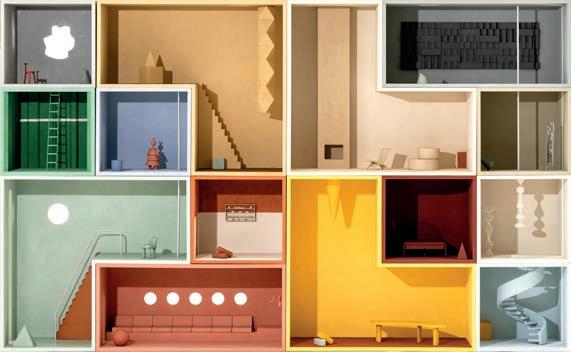

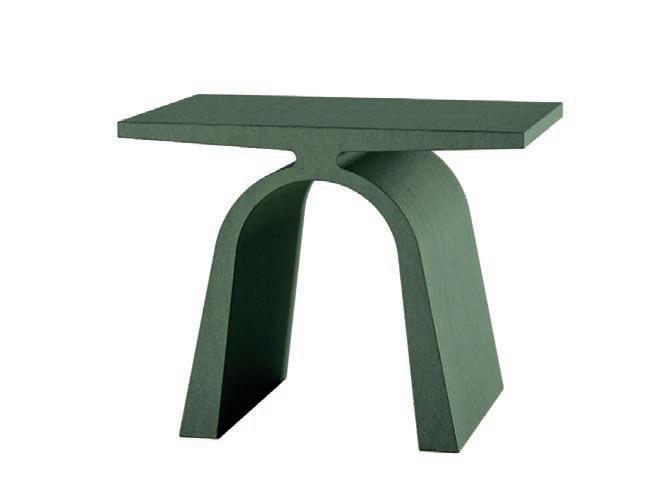
AESTHETICS
Forma&Cemento
‘I try and create objects that don’t go out of fashion but are constantly evolving’.
3
PHILOSOPHY
P-saico
Today, with Studio Irvine, industrial products are viewed with an interdisciplinary approach and always with a focus on ethics, the human factor and sustainability.
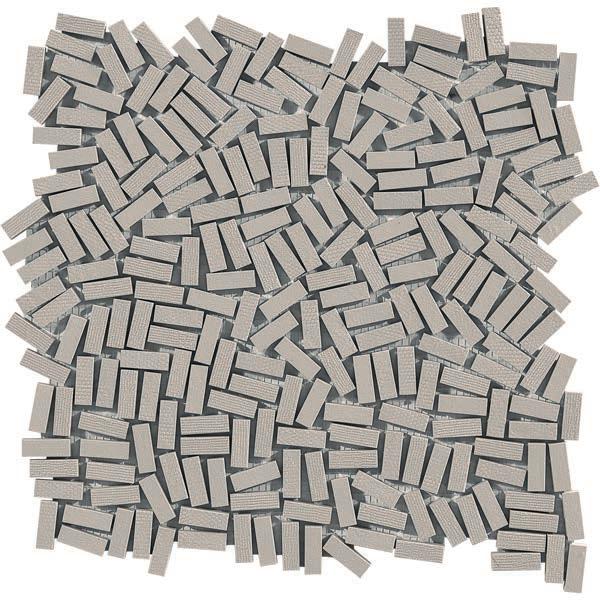
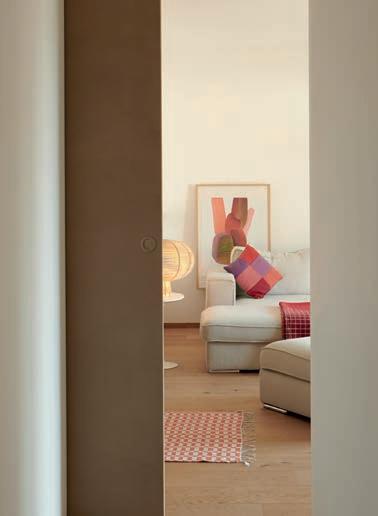
MISSION
Casa Mazzali
‘The designer’s task should be to add something to what already exists. A touch of quality, function, relation and beauty to objects’.
2 4
GEORGETTE JUPE: A ‘GIRL IN FLORENCE’
WHO CAPTURES THE CITY’S MOST CHERISHED ASPECTS
GEORGETTE
by Sabrina Bozzoni
Your tips about visiting Florence have become a must. What are your top places when it comes to handicrafts?
I would start from two cornerstones such as the Scuola del Cuoio (Leather School) in Santa Croce and the artisan workshops of Conventino, near Piazza Tasso. Staying in Oltrarno, Eric Ciulla’s bookbindery, Il Torchio , jewelry designer Marina Calamai and the coworking spaces of Creative People in Florence and Ofcine Nora. In Sant’Ambrogio, MudMoiselle ceramics and Cecilia Falciai’s workshop. Near Piazza dei Ciompi, Sara Amrhein’s jewellery shop. Why did you choose this city as your home?
I was born in Texas and I’ve lived in Los Angeles, but when I arrived in Florence, I felt truly free. How? I let the city show me how it really is, both the good and the ugly. What do you think is the value of fne craftsmanship?
Italian craftsmanship is a unique cultural heritage in the world. To keep it alive and ensure that future generations embrace it, it is important to celebrate it, promote it and give them the space and the ability to do what they love. An example of Florentine craftsmanship that you have or would like to have in your home?
I have a lot. From a Benheart leather jacket to jewellery created by Joy Franklin, Sara Amrhein and Marina Calamai. From Ippogrifo’s etchings to Cosimo De Vita’s truly wonderful carved chairs.
I suoi consigli su Firenze sono ormai un must. I suoi top place in materia di artigianato?
Inizierei da due pilastri come la Scuola del Cuoio in Santa Croce e le botteghe artigiane del Conventino, vicino a piazza Tasso. Restando in Oltrarno, la legatoria Il Torchio di Erin Ciulla, la designer di gioielli Marina Calamai e gli spazi di coworking di Creative People in Florence e Ofcine Nora. In Sant’Ambrogio MudMoiselle ceramica e il laboratorio di Cecilia Falciai. Vicino piazza dei Ciompi la gioielleria di Sara Amrhein.
Perché ha scelto questa città come ‘casa’?
Sono nata in Texas e ho vissuto a Los Angeles, ma è quando sono arrivata a Firenze che mi sono sentita veramente libera. Come? Lasciavo che questa città mi mostrasse com’era realmente, con il suo bello e il suo brutto.
Qual è, per lei, il valore dell’alto artigianato?
L’artigianato italiano rappresenta un patrimonio culturale unico al mondo. Per mantenerlo vivo e per far sì che le generazioni future lo abbraccino, è importante celebrarlo, promuoverlo e dare loro spazio e la capacità di fare ciò che amano.
Un manufatto artigianale forentino che ha o che vorrebbe nella sua casa.
Ne ho molti. Dalla giacca di Benheart ai gioielli realizzati da Joy Franklin, Sara Amrhein e Marina Calamai. Dalle incisioni dell’Ippogrifo alle sedie intagliate da Cosimo De Vita, davvero meravigliose.

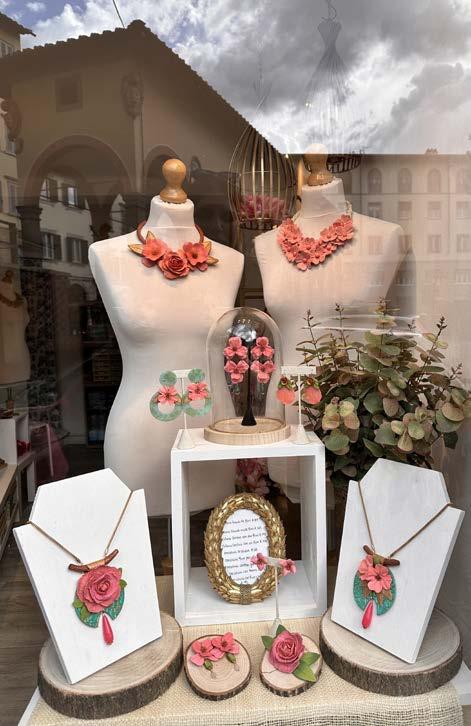
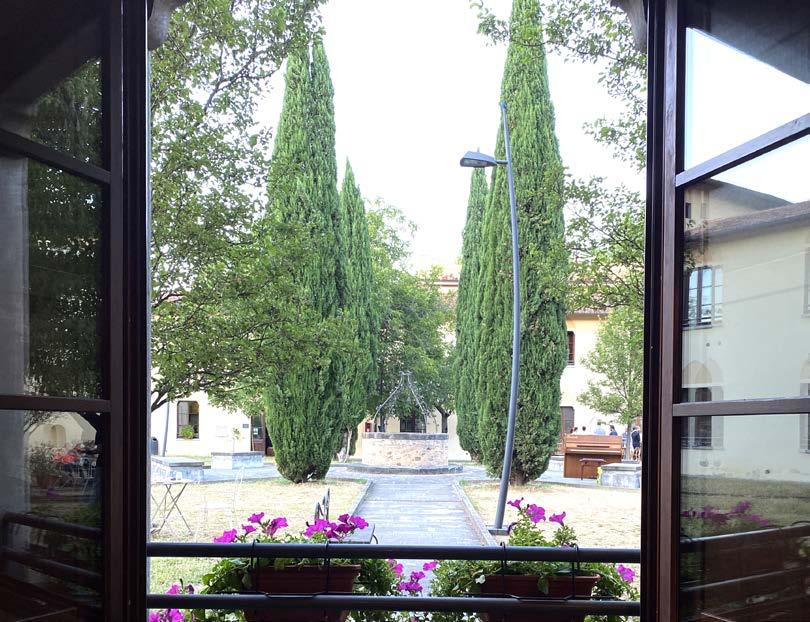
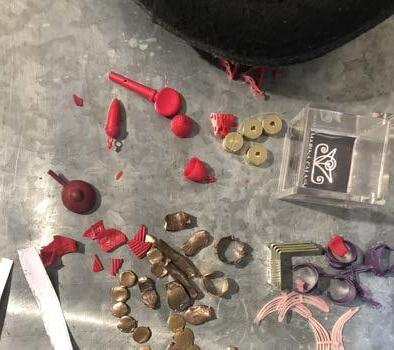
LEGGI, SFOGLIA, AMA.
CUORE, MUSICA, VIAGGIO, ABBRACCI...
LETTURE CHE FANNO EMOZIONARE
As the two designers tell us in the exclusive interview published in this number, the From the Heart to the Hands (2) exhibition, like the book of the same name, is a felicitous tribute to the values of handcrafted excellence, the signature theme of the Dolce & Gabbana fashion house. Musica senza Suono (3) is an expression coined by Japanese writer, Hiroyuki Itsuki, which defnes the art of glass-making. Jean Blanchaert chose it as the title of his latest book, where he explores the microcosm of Murano glass - from storied glassmakers such as Venini and Barovier & Toso, to today’s master craftsmen like Lino Tagliapietra, Simone Cenedese and Cesare Toffolo. The book Lino Tagliapietra. L’origine del viaggio (The Origin of a Journey) (4) is dedicated to the frst of the latter three, with magnifcent shots of his most recent works by photographer Roberta Orio. A minima ad maxima. La raccolta di impronte e matrici di gemme incise e medaglie Museo dell’antica zecca di Lucca (1), tells the story of a recently discovered Lucca factory, specialized in the art of making impressions taken from engraved gems, cameos, medals and small bas-reliefs. Works where you can admire illustrious characters, mythological scenes and gestures, such as that of the embrace, protagonist of the fresco as depicted in Un Medioevo di abbracci. Non solo d’amore, non solo umani. (5) A gesture that welcomes, dismisses, protects, consoles, attacks, and which is investigated here with an excursus into the art and literature of the Middle Ages.
Come ci raccontano i due stilisti nell’’intervista esclusiva pubblicata in questo numero, la mostra - come anche l’omonimo libro - Dal Cuore alle Mani (2) è un felice omaggio ai valori del Fatto a Mano, tema chiave della casa di moda Dolce&Gabbana.
Musica senza suono (3) è invece un’espressione dello scrittore giapponese Hiroyuki Itsuki, che defnisce il fascino dell’arte del vetro. Jean Blanchaert la sceglie come titolo per il suo nuovo libro, dove esplora il microcosmo del vetro di Murano: dalle storiche vetrerie come Venini e Barovier & Toso ai maestri di oggi come Lino Tagliapietra, Simone Cenedese e Cesare Toffolo. Al primo di questi è dedicato il volume Lino Tagliapietra. L’origine del viaggio (4), con magnifci scatti delle sue opere più recenti realizzati dalla fotografa Roberta Orio. A minima ad maxima. La raccolta di impronte e matrici di gemme incise e medaglie Museo dell’antica zecca di Lucca (1) racconta invece la vicenda di una manifattura lucchese recentemente scoperta, specializzata nell’arte di fare le impronte tratte da gemme incise, cammei, medaglie e piccoli bassorilievi. Opere dove si possono ammirare personaggi illustri e scene mitologiche, storie e gesti, come quello dell’abbraccio, protagonista dell’inconsueto affresco dipinto da Un Medioevo di abbracci. Non solo d’amore, non solo umani (5). Un gesto che accoglie, congeda, protegge, consola, aggredisce, e che qui viene indagato con un excursus nell’arte e nella letteratura del Medioevo.
5 boks not to be mised!
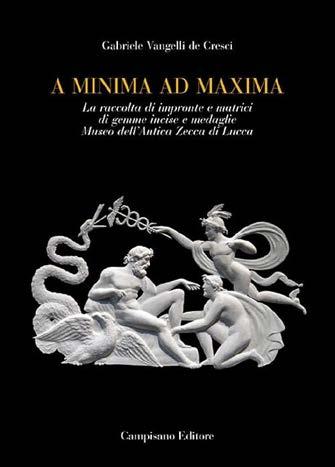
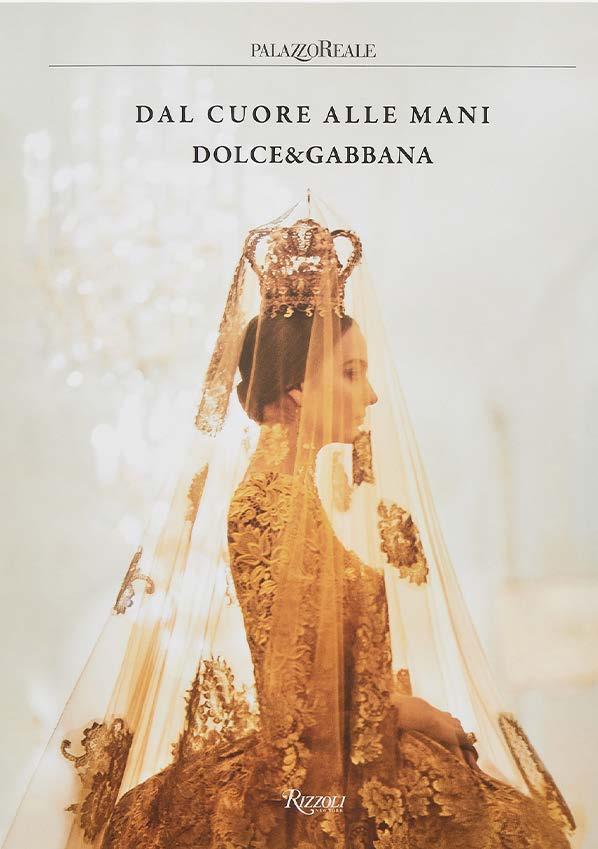
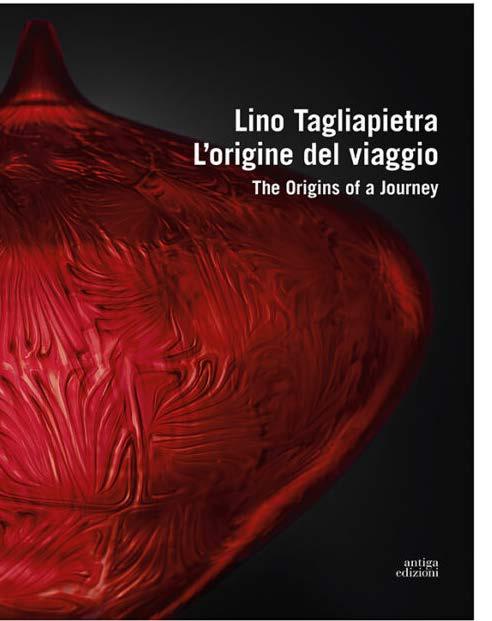
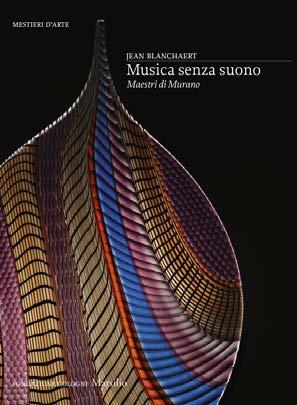
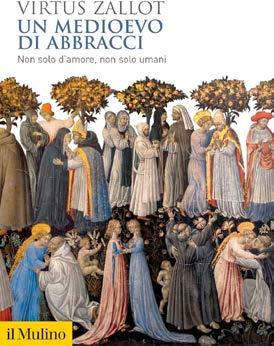
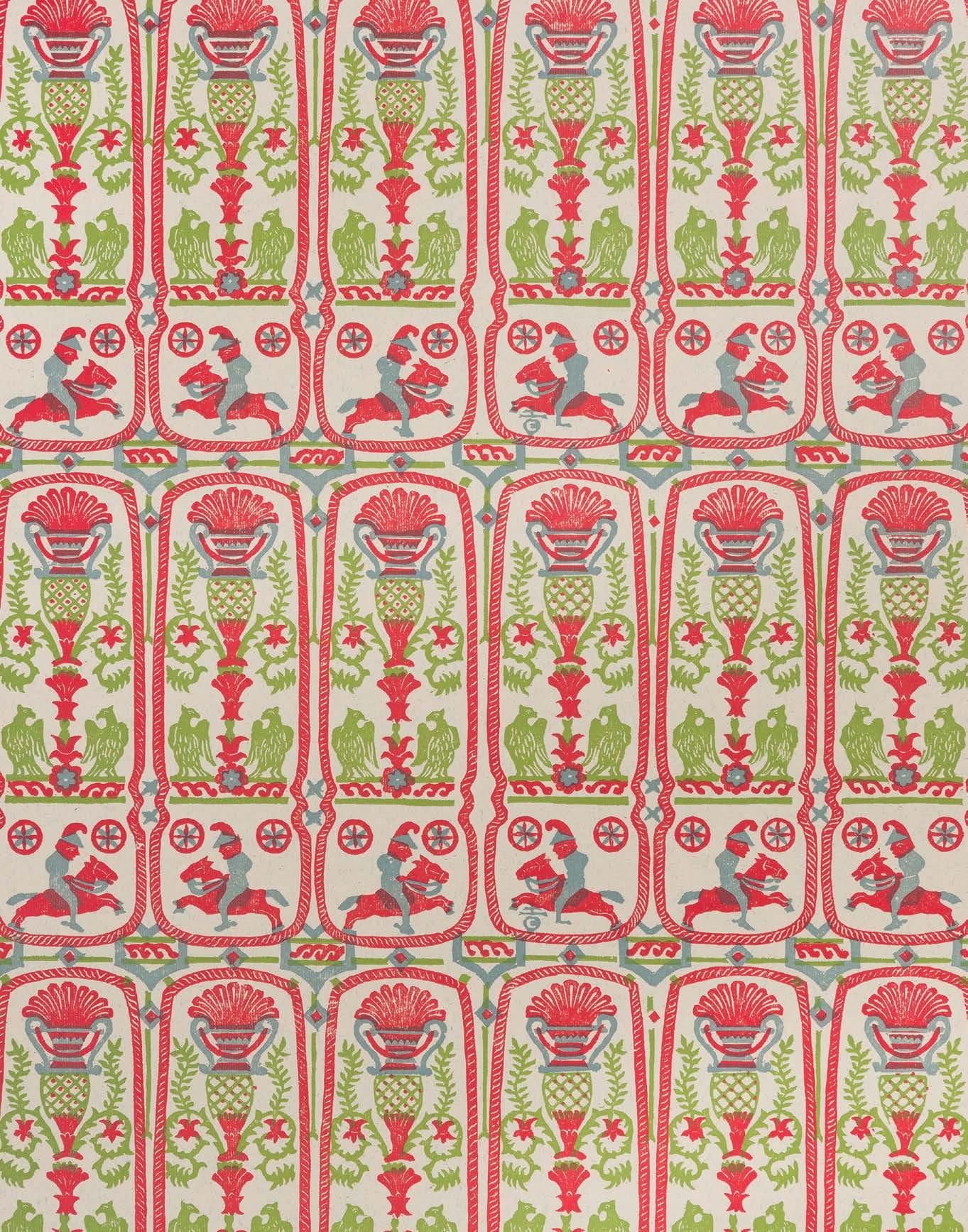
by Maria Pilar Lebole
Arte Rustica Italiana, Piemonte is a pattern from the beautiful decorative papers of the historic forentine workshop
©Giulio Giannini e Figlio
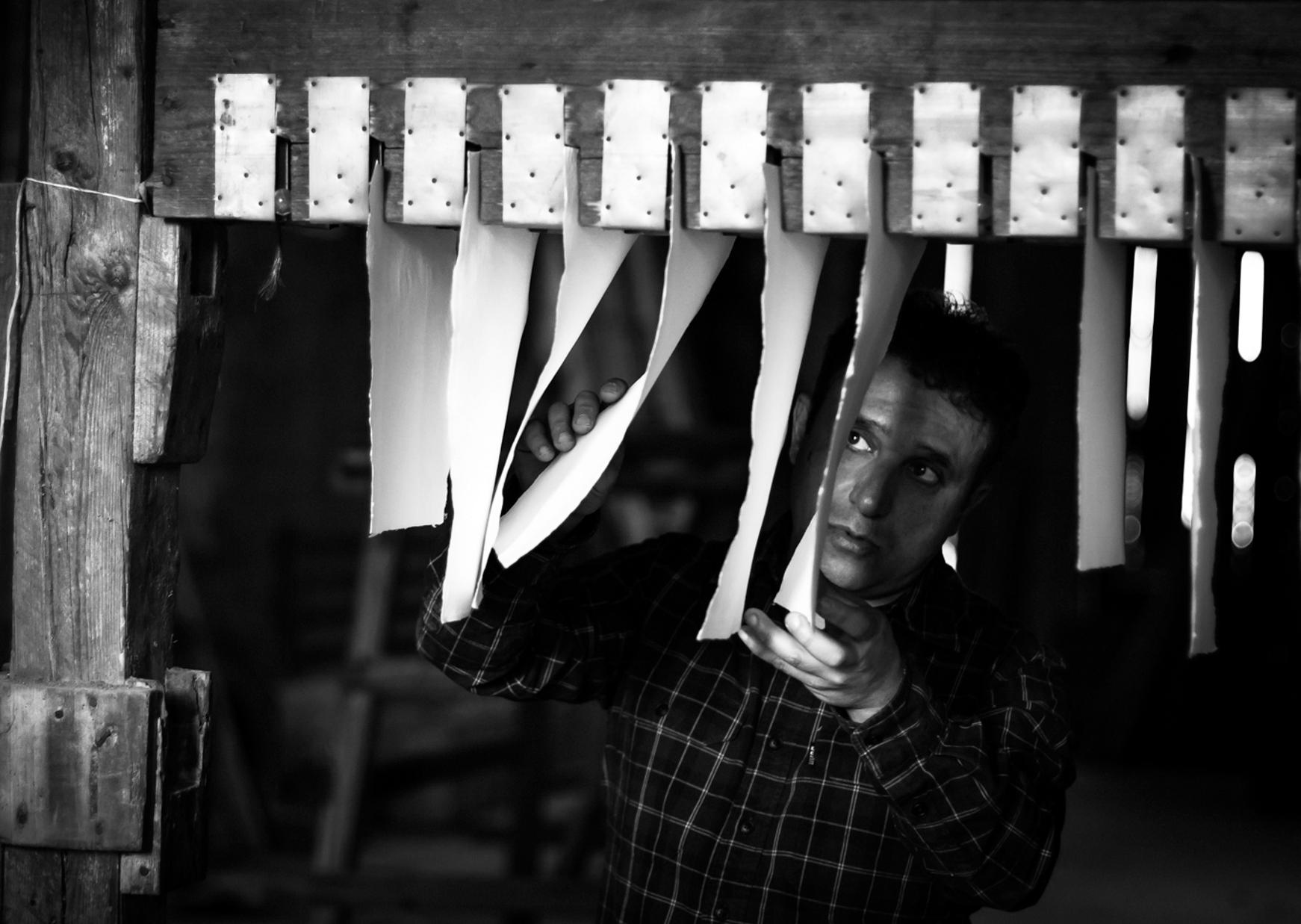
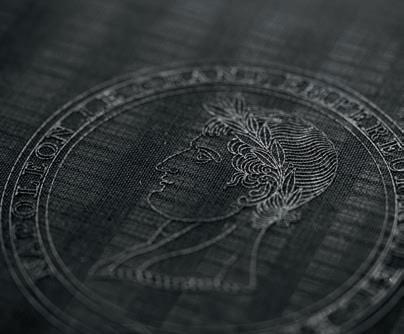

Paper, that versatile and irreplaceable material, along with its many processes and decorations, has a history that goes back thousands of years. There are reports of its use since the very early years of the Common Era, initially thanks to the ingenious idea of a Chinese court ofcial, Cai Lun by name, who frst manufactured paper as a medium for writing. It was originally made from rags, hemp, tree bark and cord from old fshing nets, which were steeped and then woven into fne but resistant sheets; the method soon spread throughout China and into the Middle East. The Arabs replaced bamboo with cotton fbre and fne-tuned the production process. From Arabia to Egypt and Morocco, in the 12th century paper reached Spain: the frst paper mill was built in Jativa, near Valencia. The arrival of paper in Europe marked the beginning of a period of enormous cultural and scientifc activity: manuscripts were being produced, and paper became the essential material for the new printing presses, enabling the publication of books. In the 13th century paper came to Italy; the most infuential places were the Marche town of Fabriano, which from 1264 records the manufacture of paper from cotton fbre, a tradition that even today is skilfully continued by artisans such as Sandro Tiberi, a paper expert and teacher at the Accademia delle Belle Arti di Roma; Amalf, where the production of paper from cotton waste developed strongly in the course of the 15th century in the Valle dei Mulini, and is still present today in the form of the historic Cartiera Amatruda; 1481 saw the frst documented paper mills in Pescia, in the province of Pistoia, which rapidly gained a reputation for expertise and high-quality production, valued throughout the continent. A heritage that’s recorded and continued by the Museo della carta di Pescia, part of the Association of the same name. Based in the 18th-century Le Carte, paper mill once owned by the Magnani family, today the museum is a valuable reference point for restorers, academics and book lovers from all over the world.
By the late 15th century, numerous paper makers were building factories in many Italian regions,
La carta, elemento versatile e insostituibile con la sua lavorazione e decorazione vanta una storia millenaria. Fin dai primissimi anni dopo Cristo si hanno notizie del suo impiego, per l’idea illuminata di un funzionario di corte, tale Tsai Lun che in Cina fabbricò questo supporto per la scrittura. Dapprima realizzata con stracci, canapa, cortecce d’albero e vecchi cordami di reti da pesca che venivano macerate e intrecciate dando vita a fogli sottili e resistenti; presto la lavorazione si estese in tutta la Cina fno al Medio Oriente. Gli Arabi sostituirono alle canne di bambù i fli di cotone rafnandone la lavorazione. Dall’Arabia fno all’Egitto e al Marocco, nel XII secolo la carta giunse in Spagna, a Jativa, vicino a Valencia fu costruita la prima cartiera. L’arrivo della carta in Europa segnò il grande fermento culturale e scientifco: si produssero manoscritti e la carta divenne elemento essenziale per la stampa favorendo la produzione di libri. Con l’arrivo in Italia nel XIII secolo i centri più infuenti furono il comune marchigiano di Fabriano che testimonia già a partire dal 1264 la produzione di carta composta da fli di cotone, tradizione portata avanti oggi sapientemente da maestri come Sandro Tiberi, artigiano della carta e docente all’Accademia delle Belle Arti di Roma; Amalf, con la produzione di carta bambagina poi sviluppatesi moltissimo nel corso del XV secolo lungo la valle dei mulini e di cui ancora oggi è testimonianza diretta la storica Cartiera Amatruda, mentre del 1481 sono le prime cartiere documentate a Pescia in provincia di Pistoia che si distinsero presto per la maestria e l’alta qualità della produzione apprezzata in tutto il continente. Un heritage documentato e protratto dal Museo della carta di Pescia che fa capo alla omonima Associazione, con sede nella settecentesca cartiera Le Carte, appartenuta alla famiglia Magnani, diventata punto di riferimento prezioso per restauratori, studiosi e bibliofli di tutto il mondo.
Alla fne del ‘400 tanti cartai costruirono fabbriche in molte regioni italiane, nell’area del Garda, a Salò, Toscolano (dove oggi a tramandare questa storicità è il maestro cartaio Marco Castellini),
THE ARRIVAL OF PAPER IN EUROPE MARKED THE BEGINNING OF A PERIOD OF ENORMOUS CULTURAL AND SCIENTIFIC ACTIVITY: MANUSCRIPTS WERE BEING PRODUCED, AND PAPER BECAME THE ESSENTIAL MATERIAL FOR THE NEW PRINTING PRESSES, ENABLING THE PUBLICATION OF BOOKS
notably in the Lake Garda area in Salò, Toscolano (where master paper maker Marco Castellini continues the historic tradition), Campione and Riva. In 1782 alone, the Miliani mill in Fabriano took on large numbers of skilled paper workers, founding Cartiere Pietro Miliani Fabriano and introducing new production methods to perfect the processes and improve the technical characteristics of the product.
The late 19th century was a time of great ferment and innovation for the Italian paper industry, with two companies emerging as leaders in the sector: Cartiere del Garda and Cartiera Fedrigoni
Today Italy is one of Europe’s four top paper producers. Some 200 factories in 15 Italian regions manufacture more than 11 million tonnes of paper and cardboard every year.
Tissue paper also accounts for a considerable proportion of European paper production, as do corrugated cardboard, converting and paper goods. The main paper-manufacturing areas are found in the province of Verona, the Fabriano area (Marche), the Piana di Lucca and Valdinievole. In particular, the Lucca paper-making district is one of the most active in Italy’s production of tissue paper and corrugated cardboard. Recently, the production, processing and decoration of paper have become highly attractive among certain audiences, who are keen and able to sign up for educational workshops focused on the manual techniques used in the sector. These include dynamic centres such as the Atelier degli Artigianelli in Florence’s Oltrarno, which runs courses and workshops in order to share the culture and traditions of hand-made paper; and new ventures like Crisa. La carta a mano, a start-up in Leonfonte, in the Sicilian
Campione e Riva. Solo nel 1782 Miliani a Fabriano accorpò numerosi artigiani della carta sotto il proprio nome fondando le Cartiere Pietro Miliani Fabriano e introducendo nuove tecniche di produzione, perfezionando i processi e migliorando le caratteristiche tecniche del prodotto.
La fne del XIX secolo segna un periodo di grande fermento e innovazione per l’industria cartaria italiana, due stabilimenti emergono come leader nella produzione nazionale: la Cartiere del Garda e la Cartiera Fedrigoni Oggi l’Italia è tra i primi quattro Paesi europei produttori di carta. Sono attive 200 cartiere in quindici regioni italiane che producono ogni anno oltre 11 milioni di tonnellate di carta e cartone.
Anche la carta tissue rappresenta una percentuale molto signifcativa della produzione europea così come la produzione di cartone ondulato, il converting e la cartotecnica. I principali distretti cartari si trovano in provincia di Verona, nella zona di Fabriano (Marche), nella Piana di Lucca e nella Valdinievole. In particolare il distretto cartario di Lucca è fra i più attivi nella produzione nazionale di carta tissue e del cartone ondulato.
Recentemente la produzione, lavorazione e decorazione della carta sono attività divenute attrattive per un certo pubblico, attento e disponibile a frequentare esperienze didattiche incentrate sulla lavorazione manuale. Tra questi vivaci luoghi didattici l’Atelier degli Artigianelli nell’Oltrarno forentino, organizza corsi di formazione e workshop per diffondere la cultura e le tradizioni della carta fatta a mano, e giovani realtà come Crisa. La carta a mano, start up nel cuore della Sicilia, a Leonforte, in provincia di Enna, nata dall’impegno dei gemelli Francesco e Giuseppe
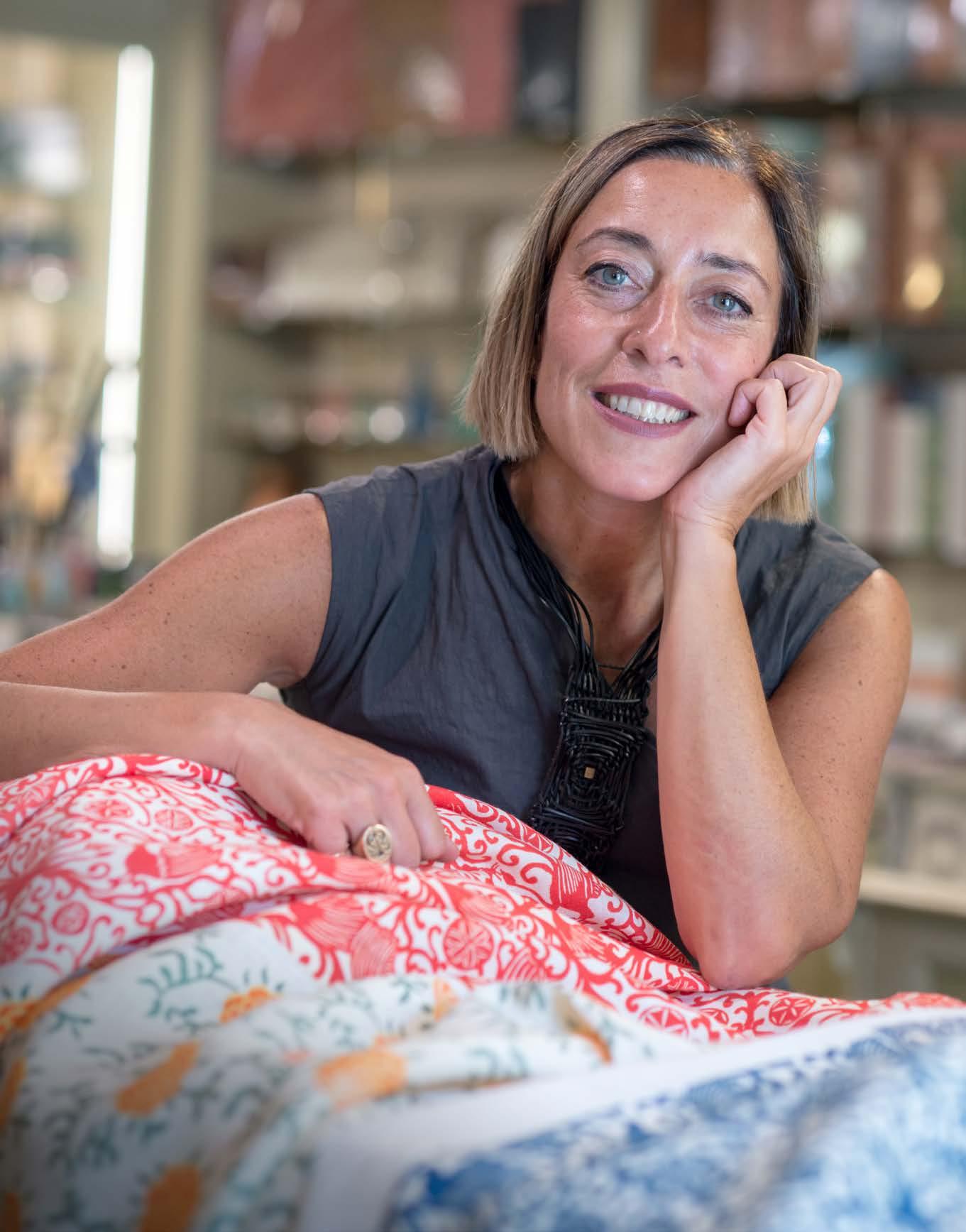
province of Enna. Here, twins Francesco and Giuseppe Lo Gioco, who learned their trade in Florence and Fabriano, decided to go back to their roots and set up a company to showcase the ancient story of paper and produce limited series of high-quality bespoke papers. Going back to the history, the art of decoration grew up almost simultaneously with the manufacture of paper itself. Artisan skill combined with artistic sensibility have produced numerous extraordinary and important examples. In Europe, xylography or woodcut is the oldest technique used on textiles and paper. Using an engraved wooden block, it was possible to print text and images and produce prints, prayer cards, lunar calendars and playing cards for popular use, but also wedding chests and cases for musical instruments.
The mid-16th century saw the growth of dominoterie, the art of dominotiers, literally makers of playing cards, who now produced papers decorated with woodcut engravings. In 18th-century Italy, the woodcut technique was at its best in the covers and end papers of books, until the spread of indiennes, textiles decorated with woodcut blocks, imported from India and extremely costly in France. Their importation was soon banned by Louis XIV, because it seriously damaged local silk production, and French printers began to produce them domestically, becoming dominotiers and using woodcut engravings for textiles on paper too: the frst wallpapers. In Italy, wallpaper, also known as ‘French paper”, was gaining popularity, produced among others by Remondini of Bassano del Grappa (1657), which was a leading publisher and maker of decorated paper until 1861.
One of the decorated papers competing with woodcut printing from the 17th century onwards was marbled paper. This technique probably originated in the Japanese discipline of suminagashi, literally ‘foating ink’, in which ink and water were used to create stunning abstract patterns. The technique quickly spread all over Europe, developing particular distinctive motifs depending on the country of production.
Lo Gioco, che, appresa l’arte tra Firenze e Fabriano, hanno deciso di tornare alle origini e avviare l’impresa per divulgare la storia millenaria della carta e produrre piccole serie personalizzate di carte di alta qualità.
Tornando alla storia, quasi in contemporanea alla lavorazione della carta stessa nacque anche l’arte della decorazione. La maestria artigianale unite alla sensibilità artistica hanno prodotto esempi di grande importanza. In Europa la xilografa è la più antica tecnica utilizzata praticata sui tessuti e sulla carta. Con la matrice lignea era possibile stampare testo e immagine e produrre ad uso popolare, stampe, santini, calendari lunari e carte da gioco, ma anche cassoni nuziali, custodie per strumenti musicali.
A metà Cinquecento nasceva la dominoterie, l’arte praticata dai dominotier, letteralmente coloro che producevano carte da gioco, che realizzavano carte decorate xilografate. In Italia, nel Settecento, le xilografe raggiunsero la più alta qualità per le sguardie dei volumi e le copertine fno a quando non si diffuse l’uso delle Indiennes, stoffe decorate con matrici xilografche provenienti dall’India e molto costose in Francia. Presto da parte di Luigi XIV ne fu vietata l’importazione perché metteva in crisi le produzioni locali di seta e i francesi iniziarono a produrre internamente convertendosi in dominotiers e utilizzando le matrici xilografche per le stoffe su carta, iniziando a produrre carta da parati. In Italia la carta da parati anche detta ‘Carta di Francia’ vide la sua diffusione tra i produttori i Remondini di Bassano del Grappa (1657) che si imposero nel campo dell’editoria e nel mercato della carta decorata fno al 1861. Tra le carte decorate che fecero concorrenza alla carta xilografata dal Seicento in poi ci fu la carta marmorizzata. Probabilmente all’origine di questa disciplina vi era la tecnica giapponese del suminagashi letteralmente ‘inchiostro futtuante’, in cui si utilizzavano l’inchiostro e l’acqua per creare disegni astratti suggestivi. Questa pratica si diffuse presto in tutta Europa caratterizzandosi con particolari motivi a seconda del Paese in cui veniva prodotta.

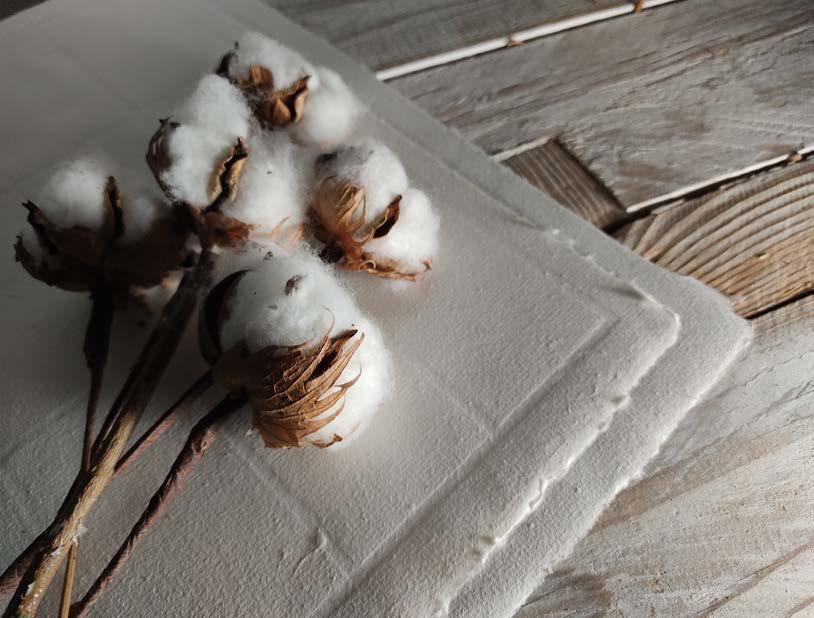

Lo
set up a company to showcase the ancient story of paper and produce limited series of high-quality bespoke papers On the next page: Siena and Venezia patterns. Arte Rustica
from historic forentine


At the beginning of the 20th century, decorative paper production was fourishing, particularly in Florence, thanks to Giulio Giannini and his descendants, who established the Florentine paper business in 1856, when the head of the family, Pietro Giannini (1811-1882), opened a shop in Piazza Pitti selling paper goods, and also binding books and accounts for prestigious customers, including Leopold II, Grand Duke of Tuscany.
In the decorative paper sector, by the late 18th century woodcut printing was overtaken by industrially produced papers with decorations that were becoming repetitive and monotonous. And against this backdrop, William Morris was the bringer of real renewal. In 1861 Morris, together with several artist and designer friends, established Morris & Co. with the aim of revolutionising the decorative arts; of these, wallpapers made the biggest impact, with their sumptuous designs of natural motifs, fowers and leaves, bright colours and gorgeous sophisticated patterns. The beauty and originality of these wallpapers offered a valid alternative to the monotonous products of the age, and helped to rekindle a widespread appreciation for craftsmanship and quality materials.
In the 20th century, the Art Nouveau movement aroused a new interest in Europe for woodcut-decorated paper. In 1920 Guido Giannini Senior embarked on a collaboration with Eleonora Gallo to create new woodcuts based on iconographic popular traditions of Italy, and when leather goods became too expensive for an increasingly impoverished clientele, he began producing a series of items covered with the printed papers, and published the book Arte Rustica Italiana (1929). Woodcut engravings still appear in Giannini publications, which is now expertly managed by Maria, the sixth generation of the family, who continues the business along with Guido Junior (ffth generation). Together they preserve and share the company’s historical heritage, which can be explored in a digital archive that includes documents, decorative papers, book binding, ancient stamps and events organised by the company over the years.
All’inizio del XX secolo, la carta decorata ha vissuto un momento di particolare fermento produttivo a Firenze grazie all’azienda Giulio Giannini e ai suoi eredi che hanno affermato nel mercato la carta forentina sin dal 1856 quando il capostipite Pietro Giannini (18111882) aprì la bottega in Piazza Pitti come cartolaio e rilegatore di libri e registri di conti anche per il Granduca Leopoldo II di Lorena. Nel settore delle carte decorate, la xilografa a fne Settecento venne soppiantata dalle carte di produzione industriale con decori che divennero monotoni e ripetitivi. In questo panorama, William Morris è stato l’artefce del reale rinnovamento. Nel 1861, Morris, insieme ad alcuni amici artisti e designer, fondò la Morris & Co., una ditta che aveva come obiettivo quello di rivoluzionare le arti decorative tra le quali la carta da parati ebbe un impatto maggiore per il design ricco di motivi naturali, foreali, foglie, colori vivaci, motivi ricchi e rafnati. La loro bellezza e originalità offrirono un’alternativa valida ai prodotti monotoni e ripetitivi dell’epoca, contribuendo a riportare in auge l’apprezzamento per l’artigianato e la qualità dei materiali.
Nel ‘900 con l’Art nouveau si risvegliò in Europa l’interesse per la carta decorata xilografata.
Nel 1920 Guido Giannini senior, avviò una collaborazione con Eleonora Gallo per la creazione di nuove xilografe basate sulla tradizione iconografca popolare italiana e quando gli oggetti in pelle erano divenuti troppo cari per una clientela sempre meno facoltosa, iniziò la produzione di una serie di oggetti ricoperti con queste carte e pubblicò il volume Arte Rustica Italiana (1929). Queste xilografe sono ancora presenti nella produzione Giannini, oggi sapientemente diretta da Maria, sesta generazione della famiglia che insieme a Guido Junior (quinta generazione) portano avanti la Bottega d’Arte. Abilissimi promotori del patrimonio storico dell’azienda, lo si scopre nell’archivio storico digitale costituito da documenti, carte decorate, legature, antichi punzoni ed eventi che l’azienda ha realizzato nel corso del tempo.
FROM BINDING TO WALL DECOR RIGHT UP TO FABRIC SCULPTURE
LA FORMA DELLA CARTA. DALLA LEGATORIA ALLA SCULTURA, PASSANDO PER GLI ABITI E LE PARETI DECORATE
by Virginia Mammoli
The paper. Custodian of words, art and colour. Paper as light as a feather and as durable as rock.
Paper with countless shapes and a long history, it comes from faraway lands and retains its Eastern charm. It is Italy’s artisanal tradition and here we reveal some invaluable workshops that turn paper into small and large works of art.
La carta. Custode di parole, di arte e colore. Carta leggera come piuma e resistente come la roccia. Carta dalle infnite forme e dalla lunga storia, che arriva da lontano, portando con sé il fascino dell’Oriente. Una tradizione artigiana ancora forente in Italia, di cui vi sveliamo alcuni preziosi laboratori, che con la carta danno vita a piccole e grandi opere d’arte.

Grafche Tassotti
Grafche Tassotti has been in the decorative paper industry for more than 60 years, and is considered the successor of the ancient Remondini printing house which made Bassano del Grappa (province of Vicenza) one of the most important Italian printers starting from the second half of the seventeenth century.
A real “creative printing workshop” which continues this tradition of high craftsmanship, offering a wide choice of diaries and notebooks, greeting cards, labels, shopping bags, home decor, DIY, origami and much more. Among the many motifs that make these creations, the “remondiniani” are very popular, or rather, the new modern versions of the eighteenth century drawings of the Remondini. Some of those are exhibited in the Carteria Tassotti, just steps away from the historic bridge designed by Andrea Palladio (the so-called “Ponte Vecchio” of Bassano del Grappa).
Grafche Tassotti
Da oltre 60 anni punto di riferimento nel settore delle carte decorative, Grafche Tassotti è considerata l’erede dell’antica stamperia Remondini, che dalla seconda metà del Seicento fece di Bassano del Grappa (provincia di Vicenza) uno dei più importanti poli dell’editoria italiana.
Un vero e proprio ‘laboratorio di stamperia creativa’, che porta avanti questa tradizione all’insegna dell’alto artigianato, offrendo un’ampia proposta di diari e quaderni, biglietti di auguri, etichette, shopper, oggettistica per l’home decor, il fai da te, l’origami e non solo. Tra i tantissimi motivi che caratterizzano queste creazioni, i più celebri sono i ‘remondiniani’, ovvero le rivisitazioni in chiave contemporanea dei disegni settecenteschi dei Remondini, alcuni dei quali sono esposti nella Carteria Tassotti, a pochi passi dallo storico ponte progettato da Andrea Palladio (il cosiddetto ‘Ponte Vecchio’ di Bassano del Grappa).
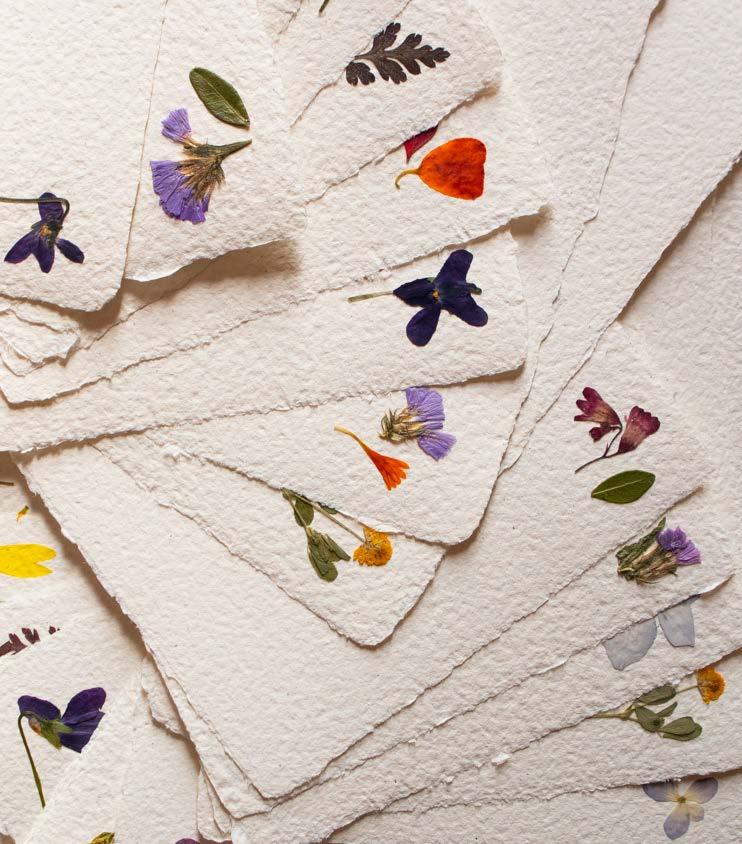
Carta Muriel
The hands, the head and the heart of this lively home-shop located in a small village near Verona, near the Lessinia Regional Nature Park is the friendly Sonia. This fascination with the world of paper made by hand happened by chance in Boston where she used to live. Once back in Italy, she combined this passion with her passion for nature. So, she started designing wedding linen - of which she manages the graphic design, paper production and printing - and what she calls ‘botanical paintings’, made with fower arrangements and leaves that she personally collects.
Carta Muriel
L’anima, la mente e le mani di questa vivace casa-bottega in un piccolo paese vicino Verona, a pochi passi dal Parco Naturale Regionale della Lessinia, è la sorridente Sonia. L’incontro con il mondo della carta a mano è avvenuto un po’ per caso, nel periodo in cui viveva a Boston. Tornata in Italia, a questa passione ha unito quella per la natura. Nascono così corredi per i matrimoni - di cui cura progettazione grafca, produzione della carta e stampa - e quelli che lei chiama ‘quadri botanici’, con composizioni di fori o foglie che raccoglie personalmente.
Paperoowl
At the workshop in Rio Marin 821 in Venice, located in the historic headquarters of the Osteria ai Postali, Stefania Giannici with her extensive professional and personal experience creates jewellery, artistic miniatures in boxes decorated with Venetian landscapes, binding, cardboard products and objects for the house, bringing the colour and the lightness of the paper into everyone’s home.
Paperoowl
In un laboratorio al numero 821 di Rio Marin a Venezia, nella storica sede dell’Osteria ai Postali, Stefania Giannici, attingendo al caleidoscopio di esperienze professionali e personali vissute, realizza gioielli, miniature artistiche in scatola di scorci veneziani, prodotti di legatoria e cartonaggio e oggetti d’arredo, che portano nelle case i colori e la leggerezza della carta.
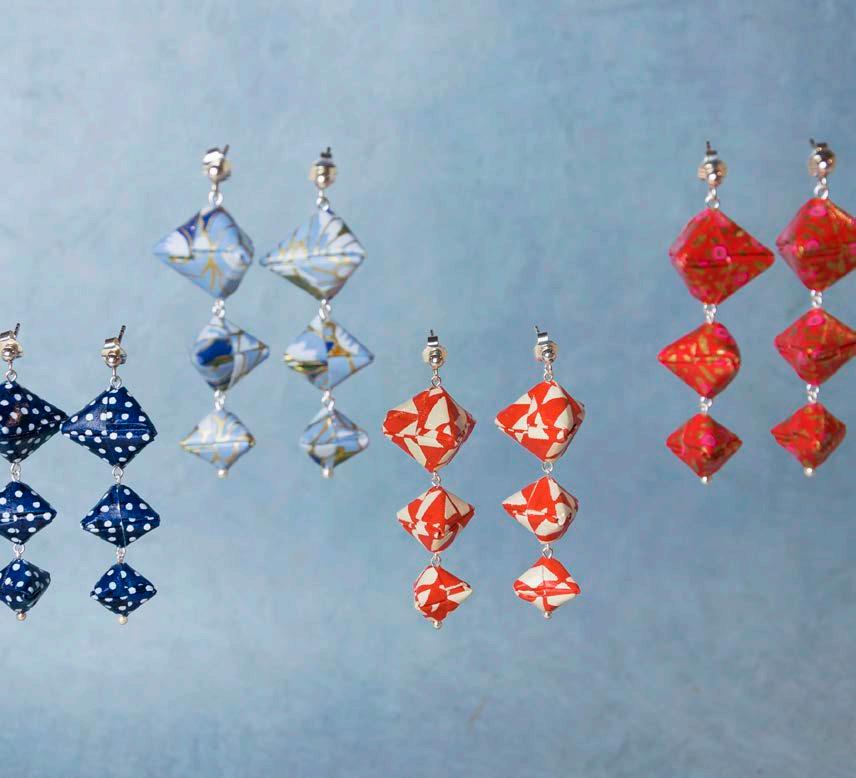
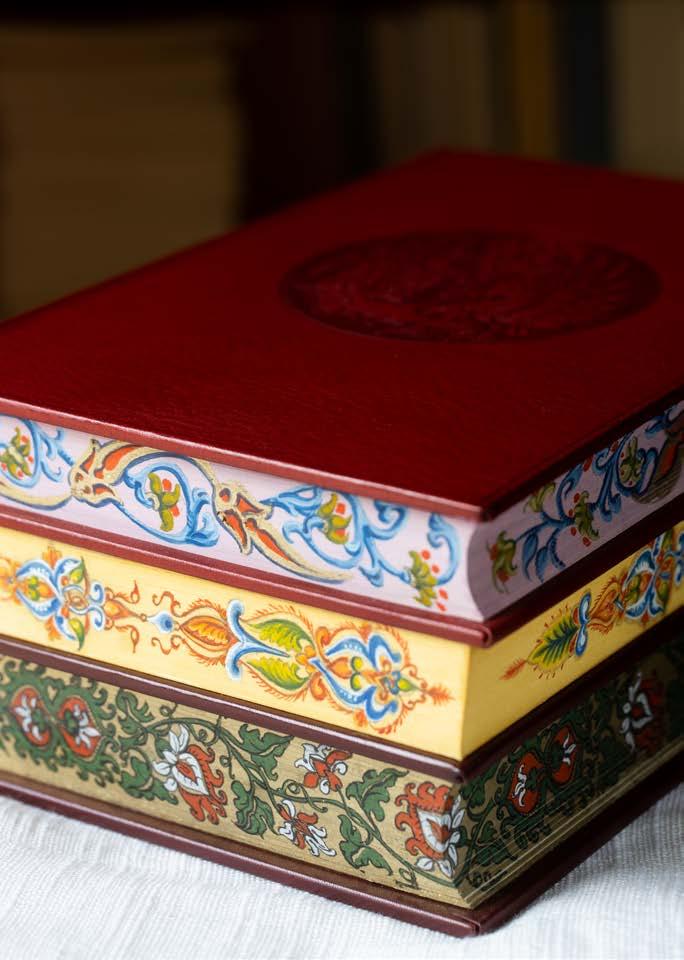
Caterina Crepax
Interior designer and daughter of the well-known cartoonist Guido Crepax, Caterina is gifted in ‘sculpting’ paper and transforming it into precious fabrics. She then uses them to make elegant and sophisticated garments with incredible detail. They are worn during fashion shows, theatre performances or displayed at exhibitions and events. Beauty and elegance without ever compromising on sustainability and contact with nature, these carefully recycled paper-based materials are combined with artisanal oriental papers.
Caterina Crepax
Architetto d’interni e figlia del noto fumettista Guido Crepax, Caterina ha la capacità di ‘scolpire’ la carta e trasformarla in preziosi tessuti, con cui confeziona abiti sontuosi e raffinati dai dettagli sorprendenti, indossati in sfilate e spettacoli teatrali, oppure protagonisti di allestimenti scenografici per mostre ed eventi. Bellezza, eleganza, senza mai dimenticare la sostenibilità e il legame con la natura attraverso un riuso sapiente di materiali cartacei di utilizzo comune che si uniscono a carte orientali artigianali.
Paolo Olbi
A pioneer of marbled paper. His experience in artistic bookbinding started in the early 1960s in a workshop before specialising in France. He creates artistic products in his workshop such as leather and faux leather items, hot foil printing with gold or dry stamping, diaries, indexes and photo albums made with traditional hand-printed paper and a printing press. The paper comes in different sizes and varies for special objects used in artisanal bookbinding.
Paolo Olbi
Un pioniere della carta marmorizzata. La sua propria esperienza nella legatoria artistica inizia nei primi anni ’60, in bottega, per poi specializzarsi in Francia. Nel suo laboratorio a Venezia realizza prodotti artistici come articoli in pelle ed ecopelle stampata a caldo con oro o a secco, diari, rubriche e album fotografci caratterizzati dalla tradizionale carta stampata a mano con torchio tipografco. Le carte utilizzate sono in varie e selezionate misure ad hoc, per oggetti unici nel panorama della legatoria artigianale.

Fabscarte
It is inevitable that the art of paper is used in design and furniture in Milan. Also the Fabscarte workshop does it, creating hand-painted wallpaper that revisits centuries of Italian decorative art combined with contemporary techniques and images. The collection stimulates the senses of sight and touch. Material wallpaper designed to be admired and touched, but also attractive wall lamps that captivate you with their play of light.
FabScarte
A Milano l’arte della carta non poteva che incontrare il design e l’arredo. Nel laboratorio Fabscarte, lo fa grazie a carte da parati dipinte e lavorate interamente a mano, che reinterpretano secoli di arte decorativa italiana con tecniche e immagini contemporanee. La collezione parla ai sensi, illumina gli occhi, stimola il tatto. Carte da parati materiche concepite per essere ammirate e toccate, ma anche affascinati lampade da parete che conquistano con scenografici giochi di luce.
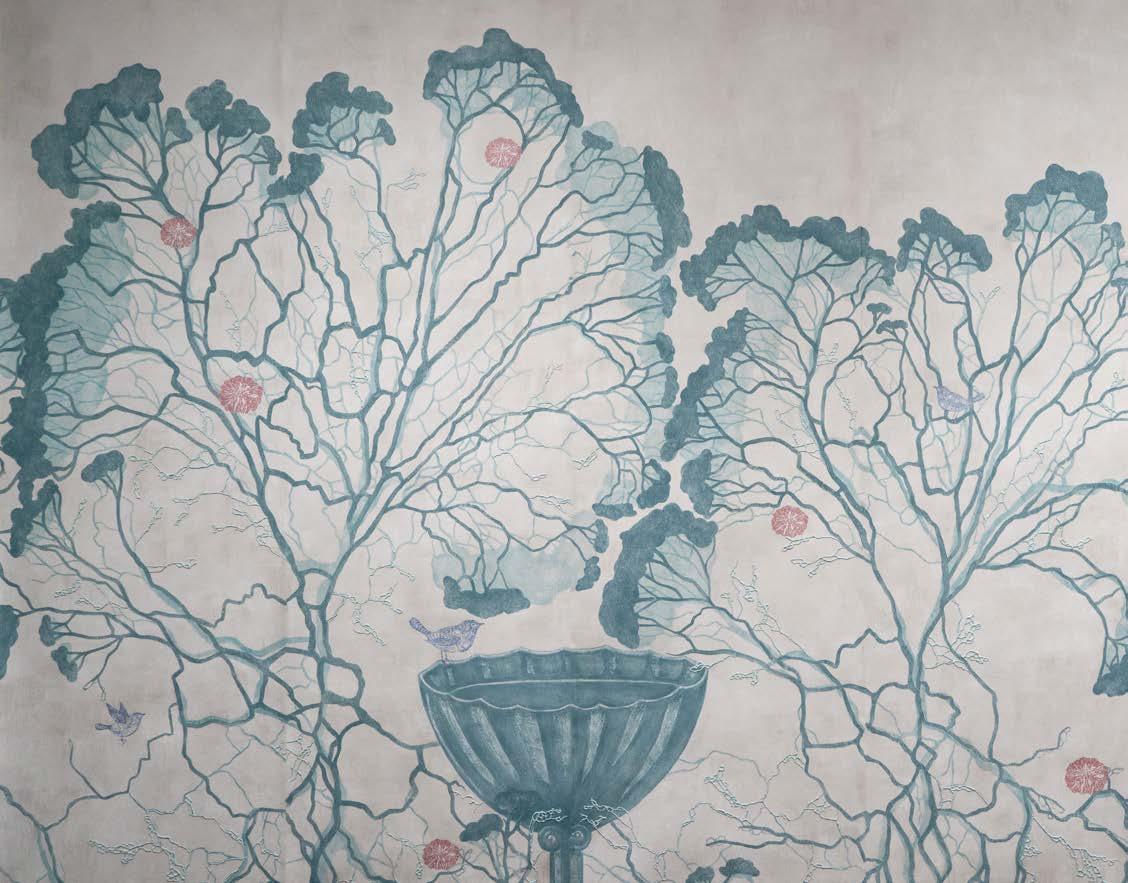

Uroš Mihić
Serbian-born designer and origami master. Thanks to his architectural studies at the Politecnico of Milan, Uroš Mihić reinvents the ancient art of folding paper by transforming it into design objects which appear to follow a logical system of simple beauty. Finished creations where each fold plays a functional role in the existence of the other. Perfect geometric forms are the result of meticulous work, appreciated by brands such as Armani, Cassina and Pomellato.
Uroš Mihić
Designer di origine serba e Maestro di origami. Grazie ai suoi studi di architettura presso il Politecnico di Milano, Uroš Mihić ridefnisce l’antica arte del piegare la carta trasformandola in oggetti di design che appaiono come sistemi logici di una bellezza minimale. Dei microcosmi compiuti, dove ogni piega ha un ruolo funzionale all’esistenza del tutto. Geometrie perfette frutto di un lavoro minuzioso, apprezzate da frme come Armani, Cassina e Pomellato.
Pictalab
Also in Milan is the atelier of Orsola Clerici and Chiara Troglio where you can discover new walls that recount stories, places and emotions. The techniques used are trompe l’oeil, marmorino plaster, lacquering, metallic leaf, stucco and fake marble experimenting with tradition and creating something new. High-end collaboration includes Acqua di Parma, Loro Piana, Serapian and Bulgari.
Pictalab
Restiamo a Milano e andiamo nell’atelier di Orsola Clerici e Chiara Troglio per scoprire nuove pareti che raccontano storie, luoghi e emozioni. Tra le tecniche utilizzate, trompe l’oeil, marmorino, laccatura, foglia metallica, stucco e fnto marmo, sperimentando tra tradizione e contemporaneità. Molte le collaborazioni prestigiose, tra cui Acqua di Parma, Loro Piana, Serapian e Bulgari.

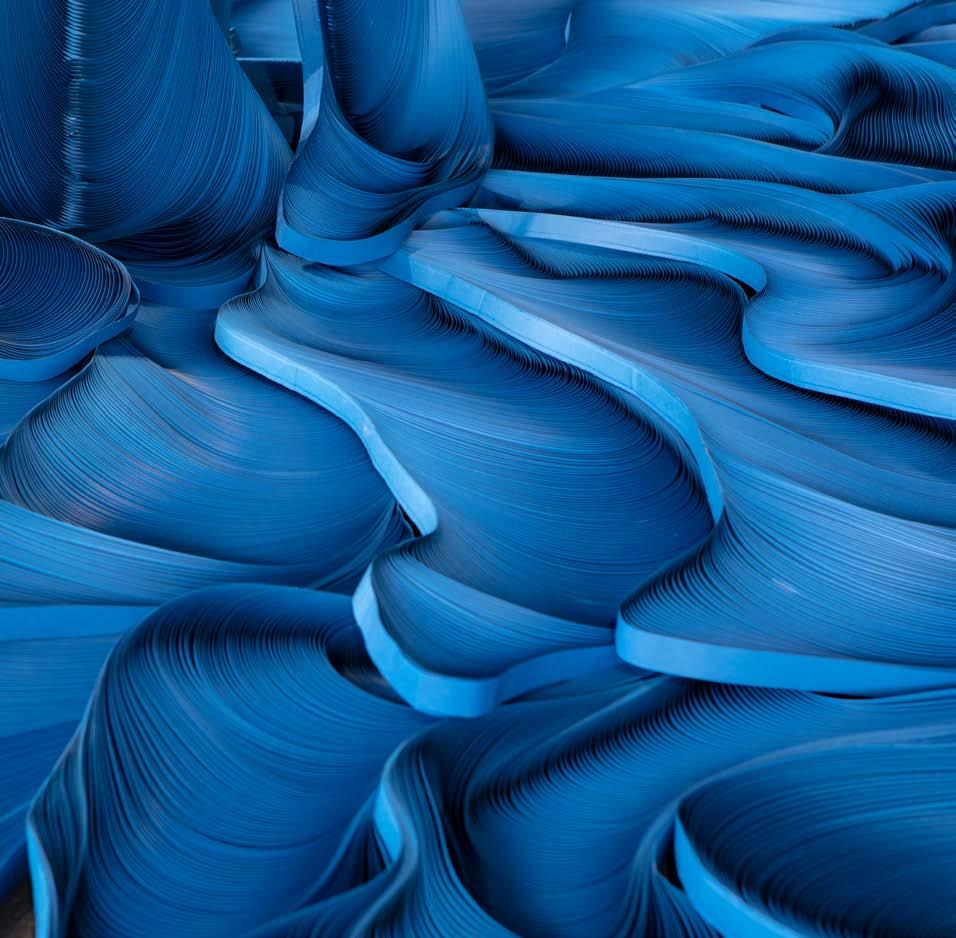
Daniele Papuli
We now move to Vimercate (MB).
Daniele Papuli defnes himself as a ‘sculptographer’ in continuous dialogue with materials, space and places. His approach to sculpture dates back to the early 1990s with artifacts in stone, wood and plaster. Then the discovery for the love of paper “simple and powerful, ephemeral and feeting, bestowed with a strong DNA, alive, vibrant, forever changing”, in his own words. After a few years, the publisher Vanni Scheiwiller appointed him the extraordinary production of handmade sheets for the graphic supports of an art book in 300 copies. Thus, he started his artistic career with exhibitions and high-end collaboration showing his works all over the world.
Daniele Papuli
Ci spostiamo a Vimercate (MB).
Daniele Papuli si definisce uno ‘scultografo’ in continuo dialogo con le materie, lo spazio e i luoghi. Risale ai primi anni ’90 l’approccio alla scultura, con manufatti in pietra, legno, gesso. Poi, la scoperta dell’amore per la carta, “povera e possente, effimera e fugace, dotata di un forte Dna, viva, vibrante, mutevole”, per usare le sue parole. Dopo pochi anni, l’editore Vanni Scheiwiller gli affida la produzione straordinaria di fogli realizzati a mano per i supporti grafici di un libro d’arte in 300 esemplari. È l’inizio di una carriera artistica fatta di mostre e importanti collaborazioni, che hanno portato le sue opere in tutto il mondo.

Atelier GK
We are now in Florence in the workshop of Lapo Giannini and Michiko Kuwata. Six generations of history with over twenty years of experience in the felds of art binding, objects and restoration. Traditional Florentine techniques are used in their works with simplicity and practicality, typical of Japanese culture, creating small and large pieces of luxury stationary and furniture. Besides these, other objects are made using the paper and glue technique invented in Europe between the sixteenth and seventeenth centuries.
Atelier GK
Siamo a Firenze, nel laboratorio di Lapo Giannini e Michiko Kuwata. Sei generazioni di storia e oltre venti anni di esperienza nei settori di legatura d’arte, oggettistica e restauro. Nei loro lavori si uniscono le tecniche tradizionali fiorentine e la semplicità ed essenzialità tipiche della cultura giapponese, dando vita a piccoli e grandi gioielli di cancelleria e arredamento. Tra questi, creazioni realizzate utilizzando la tecnica ‘carta e colla’, ideata in Europa tra il Cinque e Seicento.
Atelier Verdero
Atelier Verdeoro was founded in Camaiore (province of Lucca) thanks to the initiative of Florence Derwa, an Italian-Belgian designer. Gold leaf gilding, fresco, trompe l’oeil, fake marble or fake wood, painting on canvas but also hand-painted wallpaper which is also used as a material for lamps, vases and other furnishings. Decoration in classic or modern style, foral patterns, bucolic, geometric or vintage to create the right environment for each room.
Atelier Verdeoro
Atelier Verdeoro nasce a Camaiore (provincia di Lucca) dall’iniziativa di Florence Derwa, decoratrice italo-belga. Doratura in foglia oro, affresco e trompe l’oeil, finto marmo o finto legno, pittura su tela, ma anche carta da parati dipinta a mano, usata persino come materiale per lampade, vasi e altri oggetti d’arredo. Decorazioni in stile classico o moderno, motivi floreali, bucolici, geometrici o invecchiati, per rendere ogni ambiente un piccolo mondo a sé.
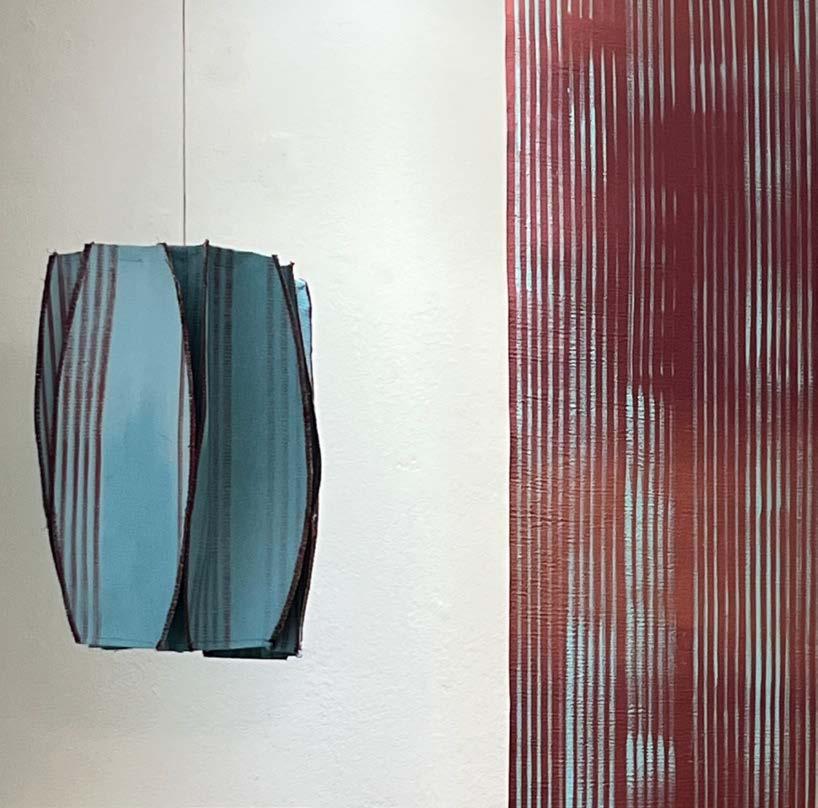
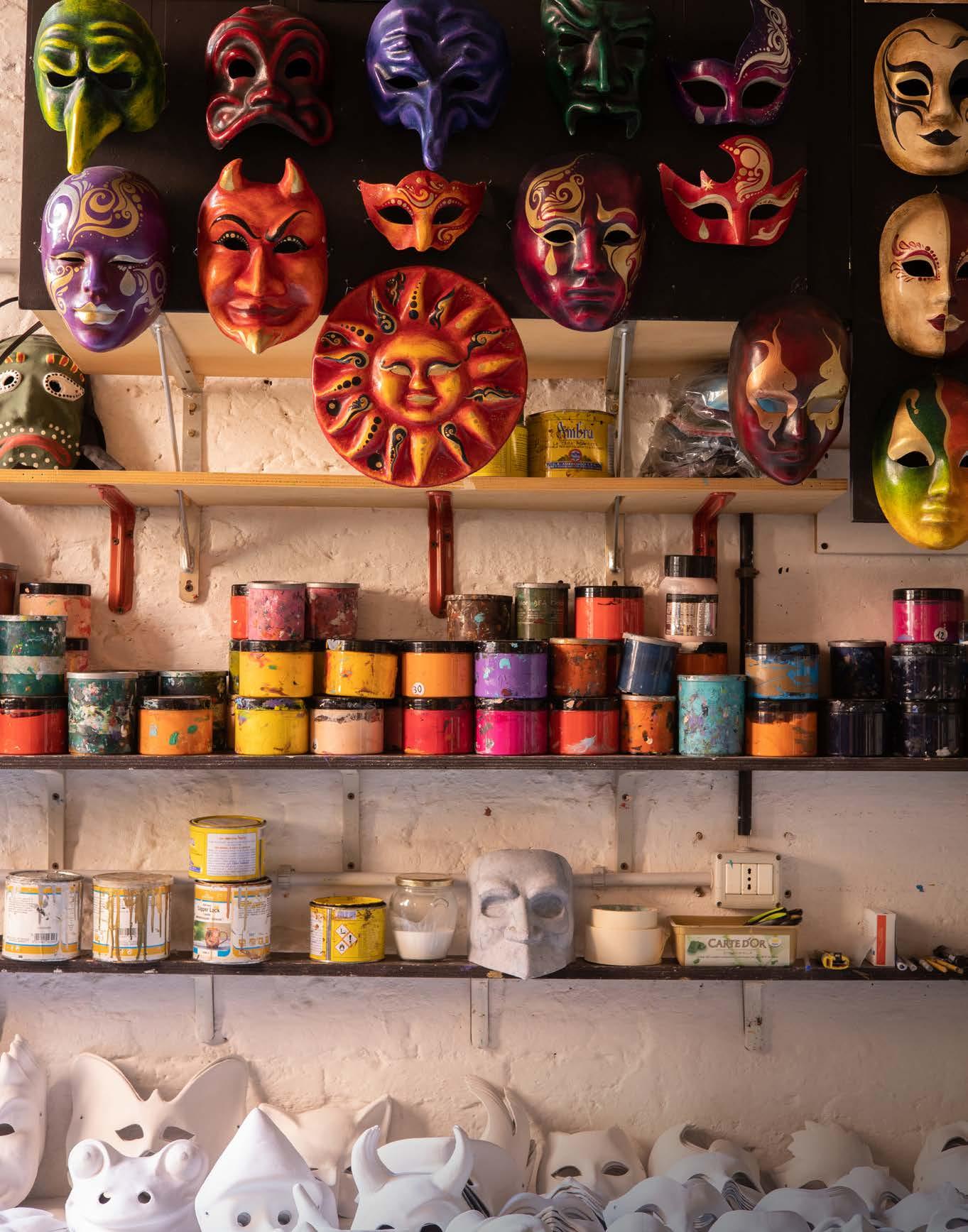
by Virginia Mammoli ph. Dario Garofalo
Art, craftsmanship and folklore come together in papier-mâché. The origins of this technique may be found in China, where the material was originally used to make household goods before it came into use in artworks. As early as the fourth century before Christ, the Greeks used a mixture similar to papier-mâché to produce comic masks for the theatre. Here in Italy, according to Vasari’s Lives, Jacopo della Quercia turned to papier-mâché when the city of Siena asked him to create a funeral monument in a hurry for soldier of fortune Giovanni d’Azzo Ubaldini at the end of the fourteenth century; even Donatello used the medium in some of his works in Florence. In Italy, this noble yet poor material is primarily used in folk traditions, sacred art and folklore. The bestknown traditions defnitely include 17th and 18th century church decorations in Lecce; still today, master papier-mâché artists like Marco Epicochi make magnifcent statues featuring a surprising degree of detail. Specialising in religious sculptures both large and small, the great master produced the majestic statue of Saint Catherine of Alexandria in Bethlehem in his little workshop in Piazza del Duomo.
Further up the boot in Nola, in the province of Naples, the Festa dei Gigli is an ancient tradition celebrating the return from prison of Bishop Ponzio Meropio Paolino, whom the townspeople welcomed home with lilies. In the folk version of this festival, these became gigantic wooden towers covered with papier-mâché decorations; by the nineteenth century the ‘lilies’ had reached a
Arte, artigianato e folklore si incontrano con la tecnica della cartapesta. Le origini vanno cercate in Cina, dove veniva utilizzata in principio per produrre oggetti di uso domestico, in seguito per creare opere d’arte. In Grecia, già nel secolo IV a.C., un impasto simile a quello della cartapesta veniva usato per le maschere comiche della Commedia.
In Italia, secondo le Vite del Vasari, Jacopo della Quercia scelse la cartapesta quando venne chiamato dal Comune senese a realizzare in tempi brevi il monumento funebre del capitano di ventura Giovanni d’Azzo Ubaldini, sulla fne del XIV secolo. Persino Donatello, a Firenze, la utilizzò per alcune opere.
Nobile e povera allo stesso tempo, la cartapesta in Italia è però soprattutto tradizione popolare, arte sacra e folklore. Tra le più rinomate tradizioni c’è sicuramente quella nata tra il 1600 e 1700 a Lecce per adornare le numerose chiese. Ancora oggi, maestri cartapestai come Marco Epicochi realizzano magnifche statue dai dettagli sorprendenti. Specializzato in sculture religiose di piccole e grandi dimensioni, nel suo laboratorio in piazza del Duomo, ha realizzato anche la maestosa statua di Santa Caterina d’Alessandria a Betlemme. Risalendo lungo lo stivale, a Nola, in provincia di Napoli, troviamo la Festa dei Gigli, un’antica ricorrenza che celebra il ritorno dalla prigionia del vescovo Ponzio Meropio Paolino, accolto dai cittadini con dei gigli, che nella festa popolare sono diventati gigantesche torri lignee
IN ITALY, THIS NOBLE YET POOR MATERIAL IS PRIMARILY USED IN FOLK TRADITIONS, SACRED ART AND FOLKLORE. FROM THE RELIGIOUS SCULPTURES OF LECCE TO THE FLOATS AND MASKS OF THE TWO MOST FAMOUS ITALIAN CARNIVALS IN THE WORLD
height of 25 metres! This festival is linked with the history of the Antica Bottega d’Arte Tudisco, now run by Salvatore and Giuseppe Tudisco, the fourth and ffth generations to operate the workshop. In addition to the lilies, their workshop produces stage sets, allegorical foats, Christmas crèche scenes and artworks for contemporary artists such as Mimmo Paladino or the duo Perino & Vele. No discussion of papier-mâché could be complete without a note on the spectacular foats of the Carnival of Viareggio, made by ingenious craftspeople who work on them for months and months in the city’s famous Citadel. Papier-mâché became a part of the town’s 150-year-old carnival tradition in 1925, when foat builder Antonio D’Arliano had a stroke of genius and frst used it in place of the much heavier plaster, permitting creation of bigger foats and inclusion of the moving mechanisms for which they are renowned the world over. From the carnival of Viareggio to the carnival of Venice: the craft of the mascareri or mask-makers earned offcial recognition in the ffteenth century, though it would appear that the frst carnival costumes appeared in the 13th century, when the women of Constantinople walked the city streets with a mask covering their faces. To penetrate this magical world of elegant masks, jugglers, sprites and fantastic shapes, simply visit the workshop known as La Bottega dei Mascareri, with its historic boutique on Rialto Bridge and workshop in the nearby Calle dei Saoneri, or Ca’ Macana, in Dorsoduro: true landmarks for anyone curious about authentic Venetian papier-mâché carnival masks, also worn in the worlds of fashion, theatre and flm, as in Stanley Kubrick’s famous flm Eyes Wide Shut
rivestite di decorazioni in cartapesta. Nell’Ottocento gli otto ‘gigli’ hanno raggiunto l’altezza di 25 metri. A questa festa si lega la storia dell’Antica Bottega d’Arte Tudisco, oggi nelle mani di Salvatore e Giuseppe Tudisco, quarta e quinta generazione. Oltre ai gigli, il laboratorio realizza anche scenografe teatrali, carri allegorici, presepi e opere d’arte per artisti contemporanei come Mimmo Paladino e il duo Perino & Vele.
Non si può parlare di cartapesta senza pensare agli spettacolari carri del Carnevale di Viareggio, realizzati da ingegnose maestranze che lavorano per mesi interi nella famosa Cittadella La cartapesta entra nella tradizione dello storico carnevale, lunga più di 150 anni, nel 1925. Un colpo di genio del costruttore Antonio D’Arliano, che la sostituì al ben più pesante gesso, consentendo la creazione di carri più grandi e l’inserimento dei meccanismi di movimento che li rendono famosi in tutto il mondo.
Dal Carnevale di Viareggio a quello di Venezia
Il mestiere dei mascareri venne ufcialmente riconosciuto nel XV secolo, ma pare che i primi costumi comparvero nel 1200, con le dame di Costantinopoli che si vedevano in città con il viso coperto da una maschera. Per entrare in questo magico mondo fatto di eleganti maschere, giullari, folletti e forme fantastiche, basta entrare nei laboratori di La Bottega dei Mascareri, sede storica sul Ponte di Rialto e atelier nella vicina Calle dei Saoneri, e di Ca’ Macana, in Dorsoduro. Punti di riferimento per chi cerca le autentiche maschere veneziane in cartapesta, usate anche per la moda, il teatro e il cinema, come ad esempio nel famoso Eyes Wide Shut di Stanley Kubrick.
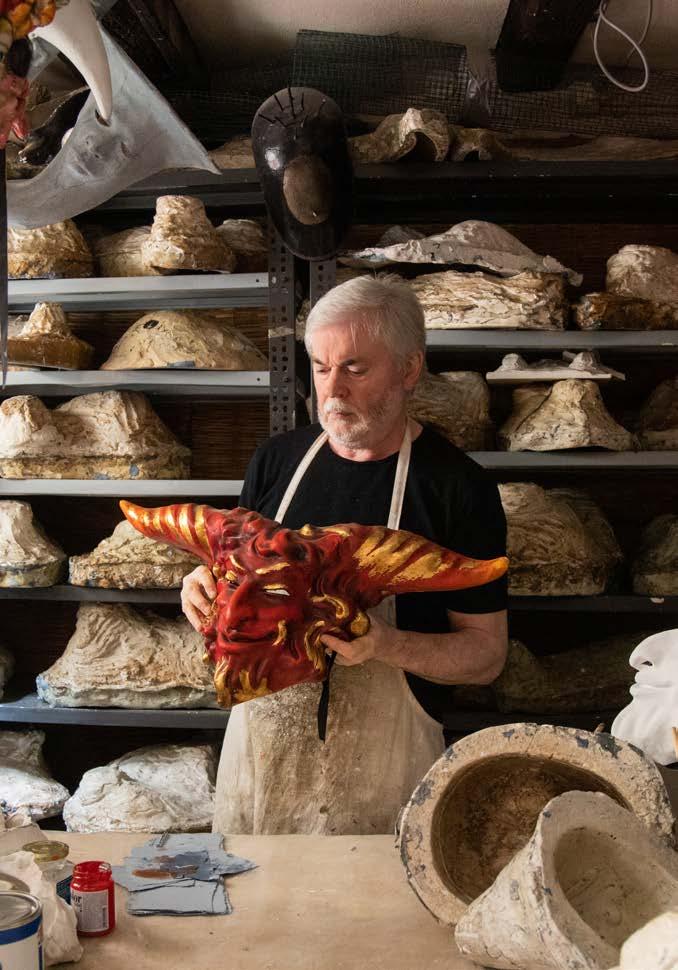
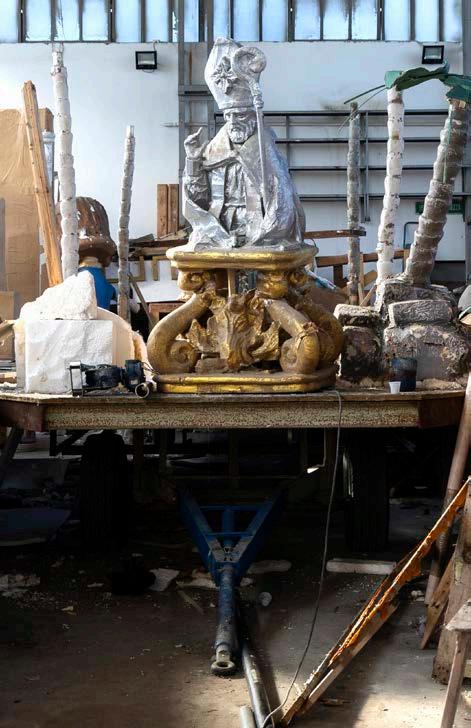
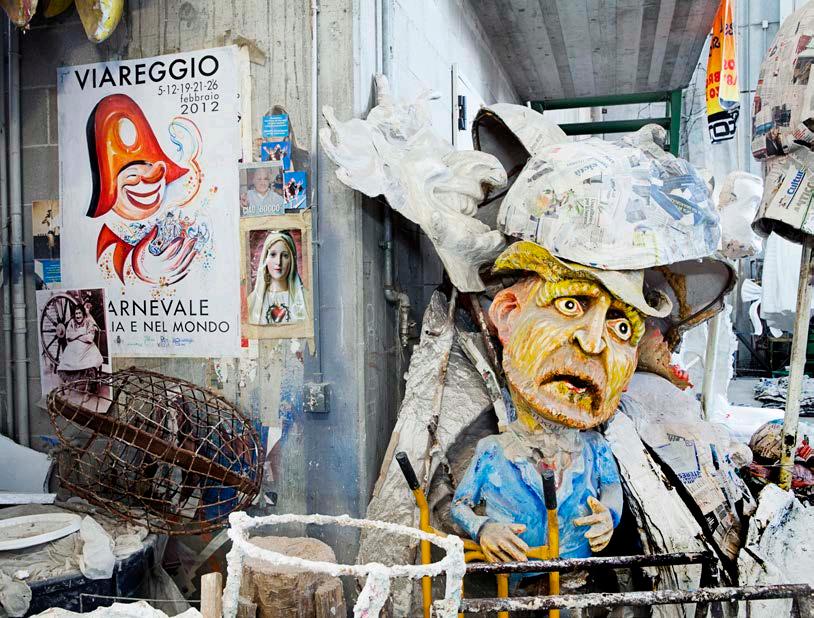

by Maria Pilar Lebole

these pages:
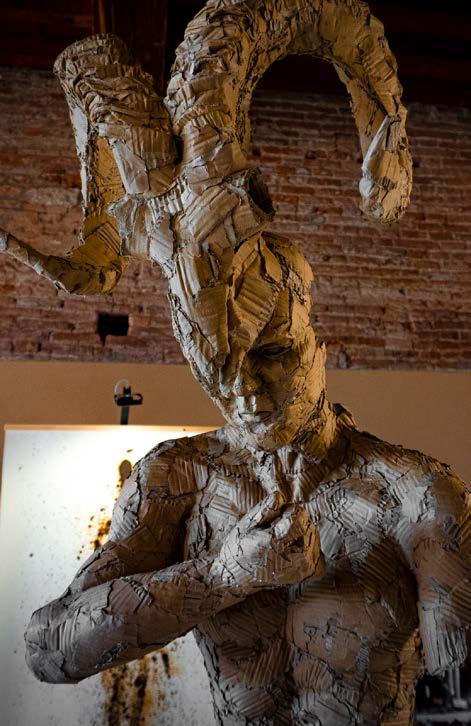

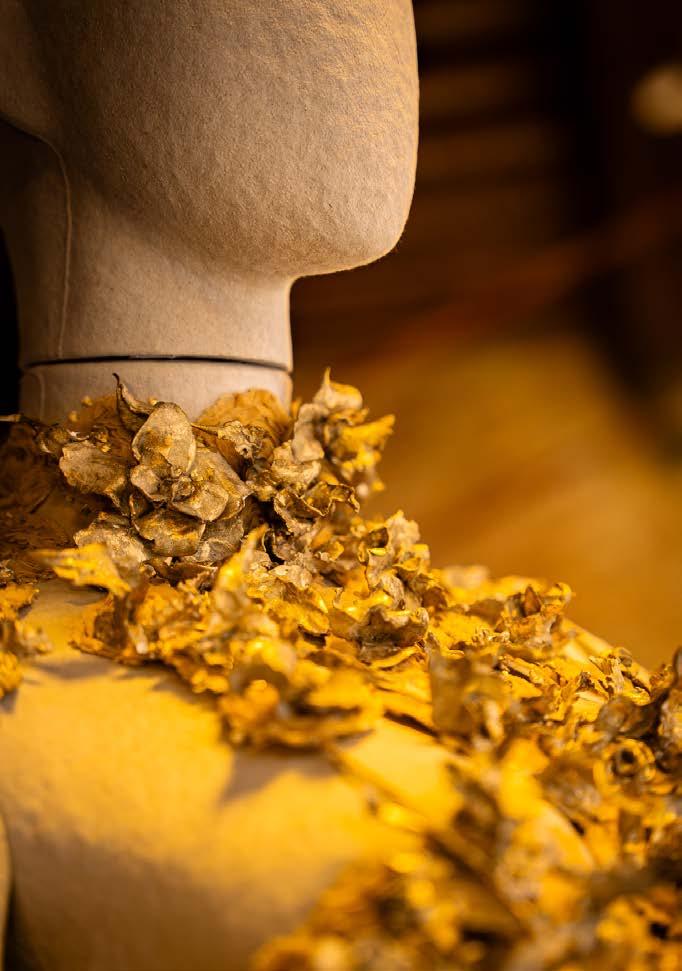
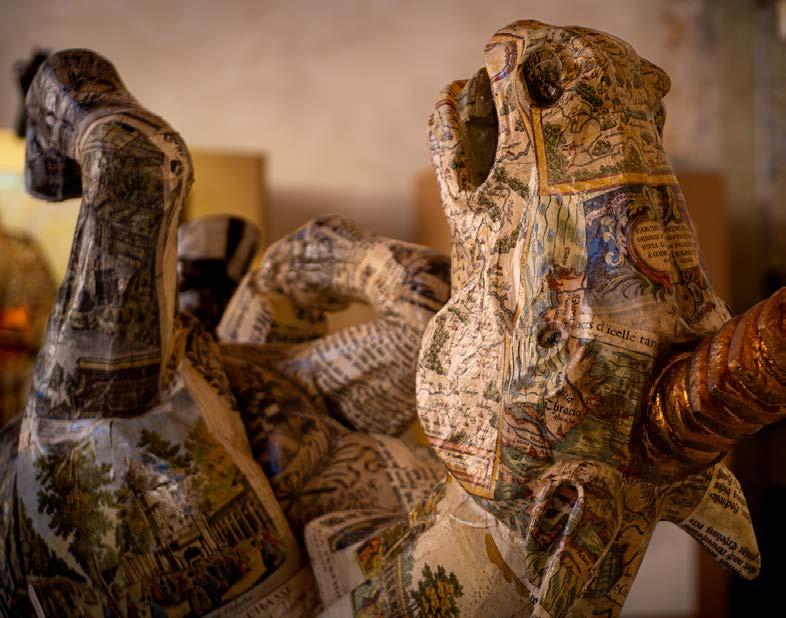
Until 29 September, like a scattered museum within the magnifcent Renaissance-era city walls, in the streets of Lucca both outside and inside Palazzo Guinigi, there’s a packed programme of events and special guests for Lucca Biennale Cartasia, the two-yearly paper exhibition that was launched twenty years ago and is today the most important event of its kind in the world. The monumental sculptures withstand the wind and rain, standing like great celestial beings made of innovative design and architecture. Two hundred works on display, by over ffty artists from all over the world; three months of exhibitions, workshops, talks, tastings, team-building sessions, book presentations, children’s workshops and board games. A team of sixty people spent many days setting up in the 12,000 square metres of Palazzo Guinigi, which hosts the paper-centred event. The artists invited to Lucca created their pieces live on site, at Palazzo Guinigi and the Mercato del Carmine. The theme of this edition of LuBiCa is Here and now: tomorrow. The programme involves collaboration with local and national schools and associations, writers, infuencers, businesses, universities and centres of research and culture. In the space of three months, this network will bring huge numbers of visitors to Lucca, with the shared aim of promoting art and culture as an approach to life. The artists explore the fckleness of time and its ephemeral nature. Can something transitory affect our future? Here and now: tomorrow asks visitors this question, opening up a broad horizon of striking interpretations. In this way the 2024 event becomes a platform for analysis of the contemporary world in all its transitory glory. Through their extraordinary one-off pieces, the artists explore the mutability and feeting nature of time. Sustainability is at the heart of the event, with a focus on recycled materials and partnerships with environmental organisations. LuBiCa also embraces cultural diversity, encouraging dialogue between different artistic traditions and creating a vibrant, cosmopolitan atmosphere.
Fino al 29 settembre all’interno delle splendide mura rinascimentali, come in un museo diffuso tra le strade di Lucca si svolge all’aperto e all’interno di Palazzo Guinigi un ricchissimo calendario di eventi e ospiti per Lucca Biennale Cartasia, la biennale della carta che è nata vent’anni orsono e ad oggi rappresenta la più importante rassegna tematica a livello mondiale. Le sue sculture monumentali sfdano la pioggia e il vento e si mostrano come giganti ultraterreni a comporre architetture e design innovativi. Duecento opere in esposizione, oltre cinquanta artisti da tutto il mondo, tre mesi di mostre, workshop, incontri, degustazioni, sessioni di team building, presentazioni di libri, laboratori per i più piccoli, giochi da tavolo. Un team di sessanta persone che per molti giorni ha allestito i 12.000 metri quadrati di Palazzo Guinigi, che ospita l’evento il cui fl rouge è sempre la carta. Gli artisti arrivati a Lucca hanno dato vita alle loro creazioni live direttamente a Palazzo Guinigi e al Mercato del Carmine. Il tema di questa edizione di LuBiCa è Qui e ora: domani. Il programma vede la collaborazione di scuole e associazioni locali e nazionali, scrittori, infuencer, imprenditori, università, centri di ricerca e di cultura. Un network che in tre mesi porta a Lucca moltissimi ospiti con l’obiettivo condiviso di promuovere arte e cultura come flosofa di vita. Gli artisti esplorano la mutevolezza del tempo e la sua natura efmera. Ciò che è transitorio può infuenzare il nostro futuro?
‘Qui e Ora’ e Domani pongono al visitatore questo interrogativo aprendo un orizzonte di interpretazioni suggestive. La manifestazione del 2024 offre così una piattaforma per analizzare il contemporaneo nella sua transitorietà. Attraverso forme d’arte irripetibili e incredibili gli artisti esplorano la mutevolezza del tempo e la sua natura efmera. La sostenibilità è al centro dell’evento, con l’uso di materiali riciclati e sostenibili e collaborazioni con organizzazioni ambientali. La manifestazione abbraccia anche la diversità culturale, favorendo il dialogo tra tradizioni artistiche diverse e creando un’atmosfera vibrante e cosmopolita.
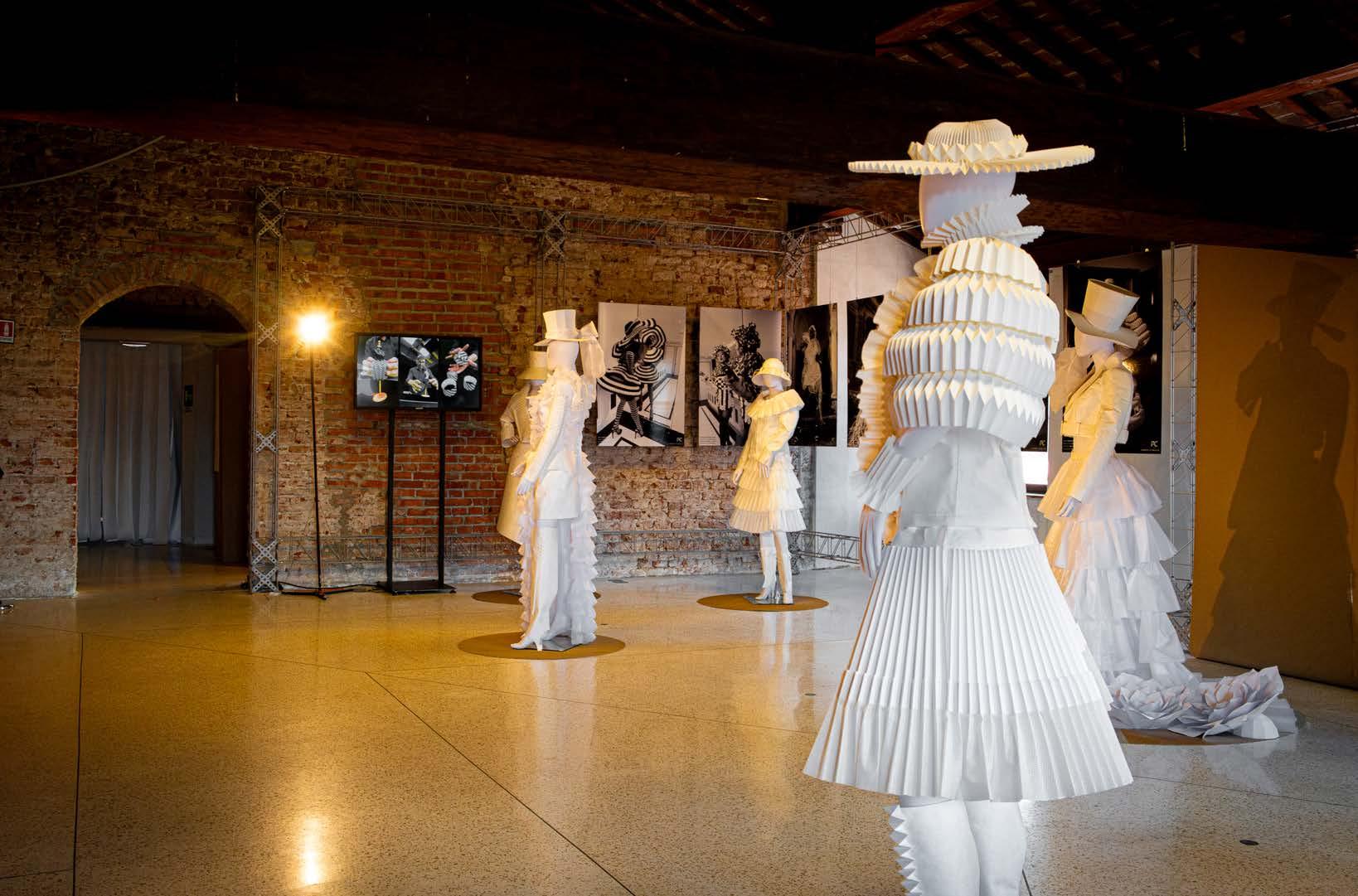

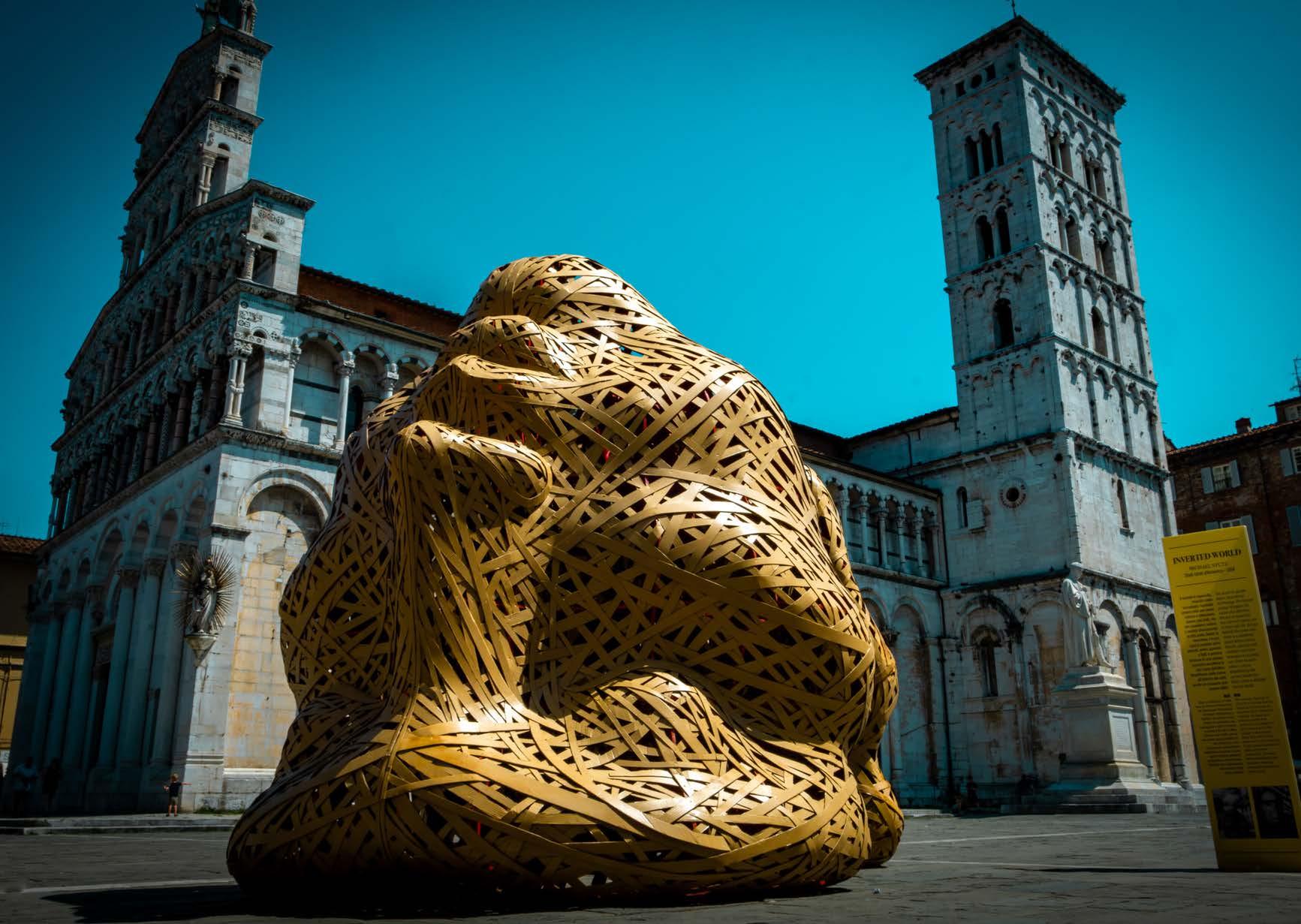

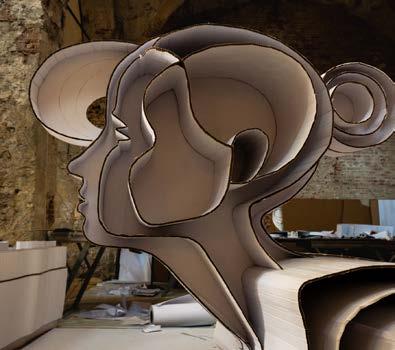
Like a scattered museum within the magnifcent Renaissance-era city walls, LuBiCa pervades also the streets of
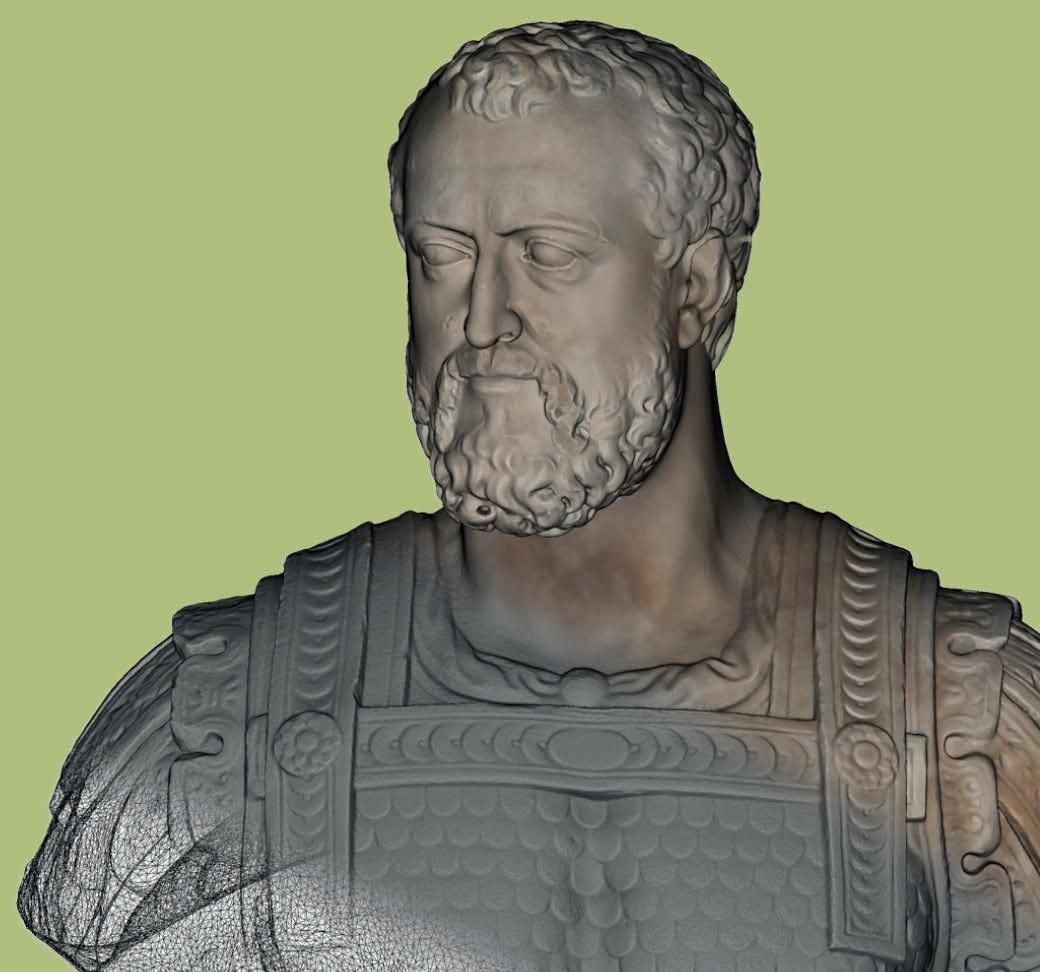
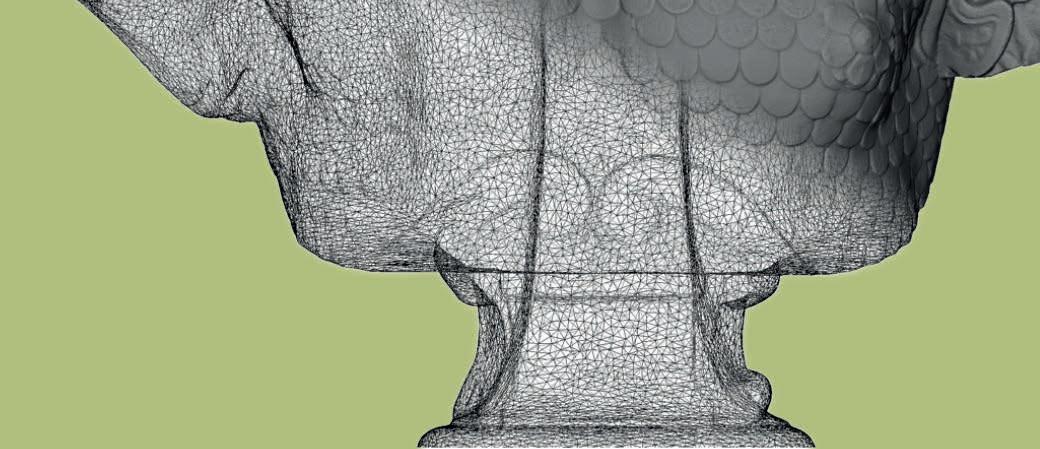
Reality-based techniques (photogrammetry or 3D scanning) with the three modes of viewing the model for the bust of Cosimo: wireframe, shaded and texture
by Grazia Tucci
Art “has always been reproducible, but […] the technical reproduction of a work of art is something new”, claimed Walter Benjamin in 1935. Following the invention of photography and film, we are now faced with the creation of physical and digital ‘twins’. We’re contemplating a different perceptual register than that of the past and - to paraphrase Salvatore Settis, the curator of two major exhibitions on the subject - the loss of the original piece’s individual aura and sense of ritual. This loss is counterbalanced by ‘technological exuberance’ with all its innovations, which alter traditional approaches to the concepts of ownership, sharing, value and the circulation of artistic output. In recent years, the two decades-plus experience in digitalisation of cultural assets amassed by GeCo (Laboratorio di Geomatica per l’Ambiente e la Conservazione dei Beni Culturali) at the University of Florence has been accompanied by a tried and tested process of reproduction, in digital and print form, of sculptures for a variety of purposes. For example, research and support in the planning and execution of 3D prints to enhance accessibility and inclusion in museums, promoted by the MUS.E Association, has led to the reproduction of nine works to be placed in the Museo del Novecento, the Museo di Palazzo Vecchio and the Museo delle Terre Nuove in San Giovanni Valdarno. These include a reduced-scale Michelangelo’s Genius of Victory, to be located in the Salone dei Cinquecento
L’opera d’arte “è stata sempre riproducibile, ma […] la riproduzione tecnica dell’opera d’arte è invece qualcosa di nuovo”, affermava W. Benjamin già nel 1935. Superata l’invenzione della fotografia e del cinema, oggi ci confrontiamo con la creazione di ‘gemelli’ digitali e fisici. Siamo di fronte a un diverso registro percettivo rispetto al passato e per dirla con Salvatore Settis, curatore di due importanti mostre sul tema, alla perdita dell’aura e della ritualità proprie dell’originale. A questa perdita fa da contraltare ‘l’esuberanza tecnologica’ con i suoi strumenti innovativi che modificano i tradizionali approcci ai concetti di proprietà, condivisione, valorizzazione e comunicazione dei manufatti artistici. La più che ventennale esperienza sulla digitalizzazione dei Beni Culturali del laboratorio GeCo (Laboratorio di Geomatica per l’Ambiente e la Conservazione dei Beni Culturali) dell’Università degli Studi di Firenze è stata negli ultimi anni affiancata da un percorso ormai maturo di riproduzione, attraverso digitalizzazione e stampa, di opere scultoree per finalità differenti. Nello Studio e supporto alla progettazione e realizzazione di stampe tridimensionali per l’accessibilità e l’inclusione dei percorsi museali, promosso dall’associazione MUS.E, ad esempio, sono state riprodotte nove opere da collocare al Museo del Novecento, al Museo di Palazzo Vecchio e al Museo delle Terre Nuove di San Giovanni Valdarno. Tra queste anche il Genio della Vittoria, di Michelangelo, in scala ridotta, da collocare nel Salone dei Cinquecen-
for tactile exploration. But one of the reasons that motivate the production of copies is the replacement of original works to prevent their exposure to natural and man-made agents of deterioration; this is the case with the marble bust of Cosimo I dei Medici by Baccio Bandinelli above the main entrance to Palazzo Inghirami, formerly Bandinelli, in Florence’s Piazza San Lorenzo
During extensive conservation work on the building’s facade, the bust was removed and restored in 2014 by the established Florentine studio Fedeli Restauri; it has now been replaced by a copy of the original. The creation of the copy provided an opportunity to produce a kind of digital mould to facilitate the study and valorisation of the original work. The use of digital photogrammetry allows an extremely detailed picture of the item’s morphology to be produced, and the resulting model, in addition to being an enormously important document for conservation purposes, allowed the creation of a replica through FDM (fused deposition modelling) printing, using a specially-designed filament that guarantees maximum resistance to atmospheric agents. The bust was then coated with a mixture of pigments and acrylic binder in order to perfectly match the colouring of the original.
The bust of Cosimo is thus a collective creation in which all procedures (digitisation, printing, assembly and finishing) become the mechanism for a broader process. The copy not only fulfils its task of protecting the original, but also becomes an opportunity for new storytelling, technological innovation and exchange among professionals whose work combines innovation and tradition. GeCo studio also supervised the process in the enormously challenging case of the reproduction of Michelangelo’s David for Expo 2020 in Dubai: digitisation using systems borrowed from the world of industry, printing using a polymerising gel activated by UV light, and coating with marble powder produced by specialist restorers. Installed in the Italian Pavilion’s Theatre of Memory at the Expo, David’s replica underlines its role, seemingly telling the world that it is not brute strength that will defeat Goliath, but human intelligence.
to per una esplorazione tattile. Ma una delle motivazioni che spingono a confrontarsi con la produzione di copie è quella della sostituzione di opere originali per sottrarle all’esposizione di fattori di degrado antropici e naturali, come nel caso del busto marmoreo di Cosimo I dei Medici di Clemente e Baccio Bandinelli sopra la porta principale di palazzo Inghirami, già Bandinelli, in piazza San Lorenzo a Firenze
In occasione dei lavori di conservazione della facciata, il busto è stato rimosso e restaurato nel 2014 dallo storico laboratorio fiorentino Fedeli Restauri ed è ora sostituito da una copia. La realizzazione della copia ha fornito l’occasione per produrre una sorta di calco digitale finalizzato allo studio e alla valorizzazione dell’originale. L’uso della fotogrammetria digitale consente infatti di ottenere un elevato dettaglio della morfologia, e il modello che ne è derivato, oltre a costituire un documento di riferimento di grande importanza per la conservazione dell’opera ha permesso la realizzazione di una replica attraverso la stampa FDM (modellazione a deposizione fusa) con un filamento realizzato per l’occasione che garantisce la massima resistenza all’aperto. Il tutto patinato con colori miscelati con legante acrilico per ottenere la maggiore corrispondenza cromatica all’originale.
Il busto di Cosimo è quindi una creazione collettiva in cui tutte le competenze coinvolte (digitalizzazione, stampa, assemblaggio e finitura) diventano l’ingranaggio di un processo più ampio. La ‘copia’ non solo assolve al suo compito di proteggere l’originale ma diventa occasione per una nuova narrazione, una palestra di invenzioni tecnologiche e di confronto tra professionalità che devono muoversi tra innovazione e tradizione. Questo percorso è stato seguito dal laboratorio GeCo anche in occasione della grande sfida dalla riproduzione del David di Michelangelo per l’Expo 2020 a Dubai: la digitalizzazione con sistemi provenienti dal mondo industriale, la stampa con un gel che polimerizza con luce ultravioletta e la finitura con polvere di marmo realizzata da laboratori di restauro specializzati. Collocata all’interno del Teatro della Memoria del Padiglione e visibile direttamente negli occhi, ha rafforzato il suo ruolo per il quale sembra dire al mondo che non sarà la forza a sconfiggere Golia ma l’intelligenza dell’uomo.

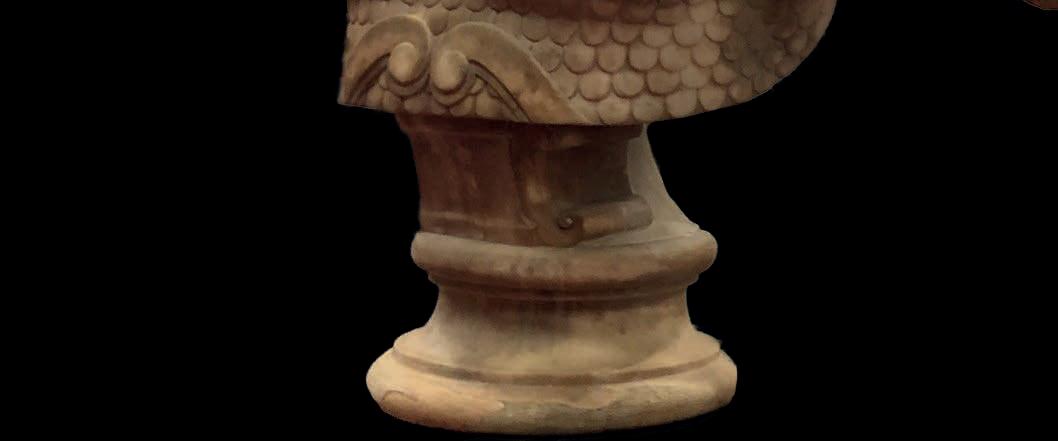
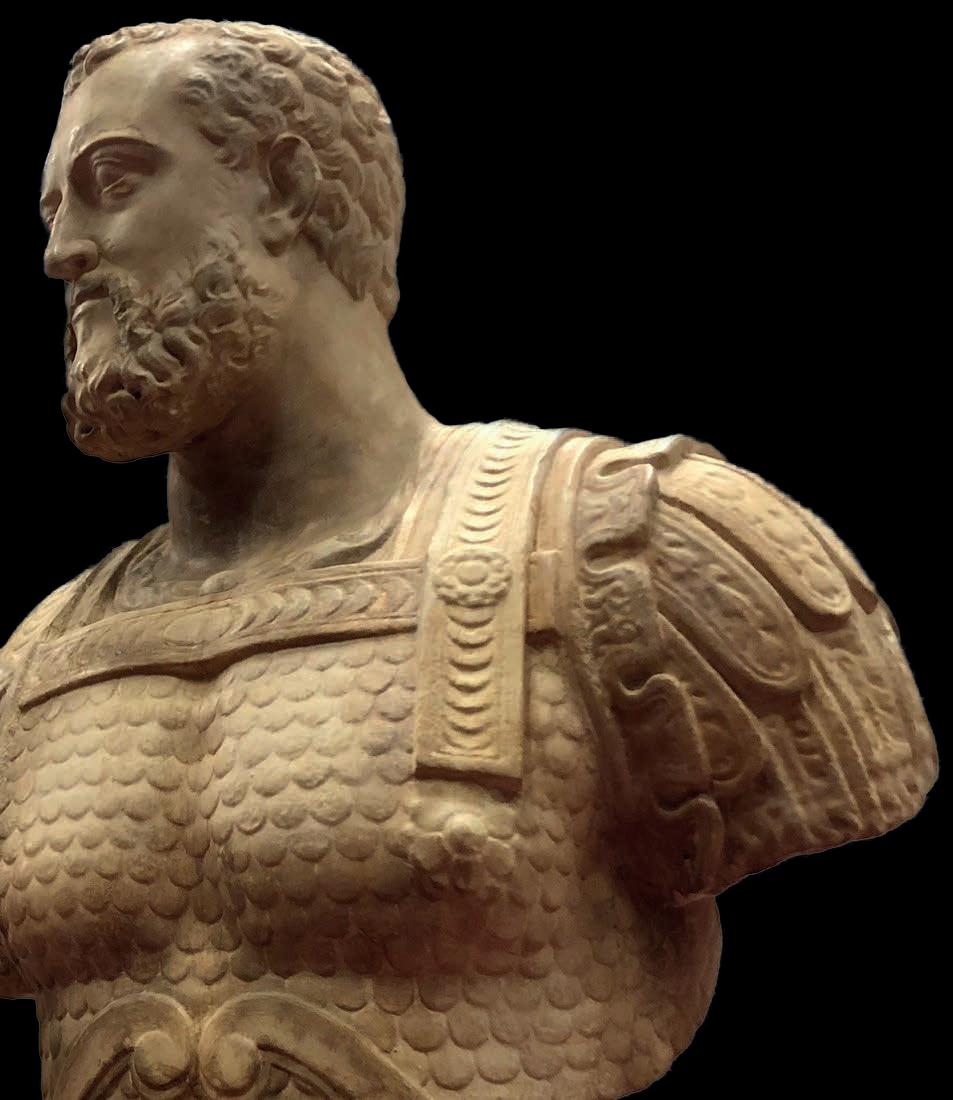

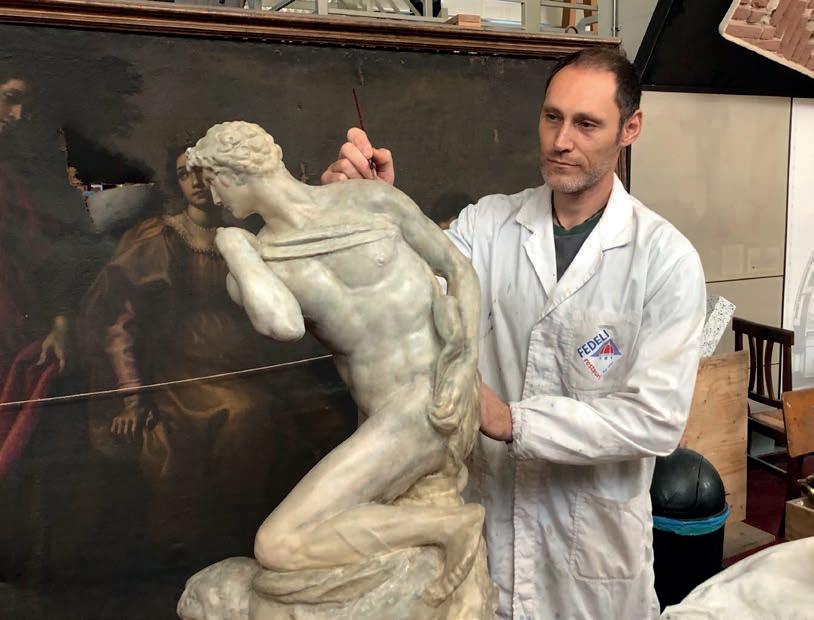
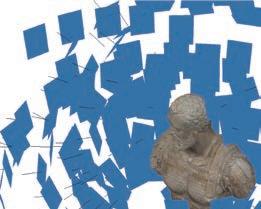
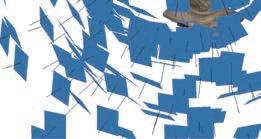
1. Original (left) and 3D print (right) of the bust of Cosimo 2. Tommaso Fedeli and the reproduction of Michelangelo’s Genius of Victory
3. Screenshot of the photogrammetric model with camera position at the moment of the shot

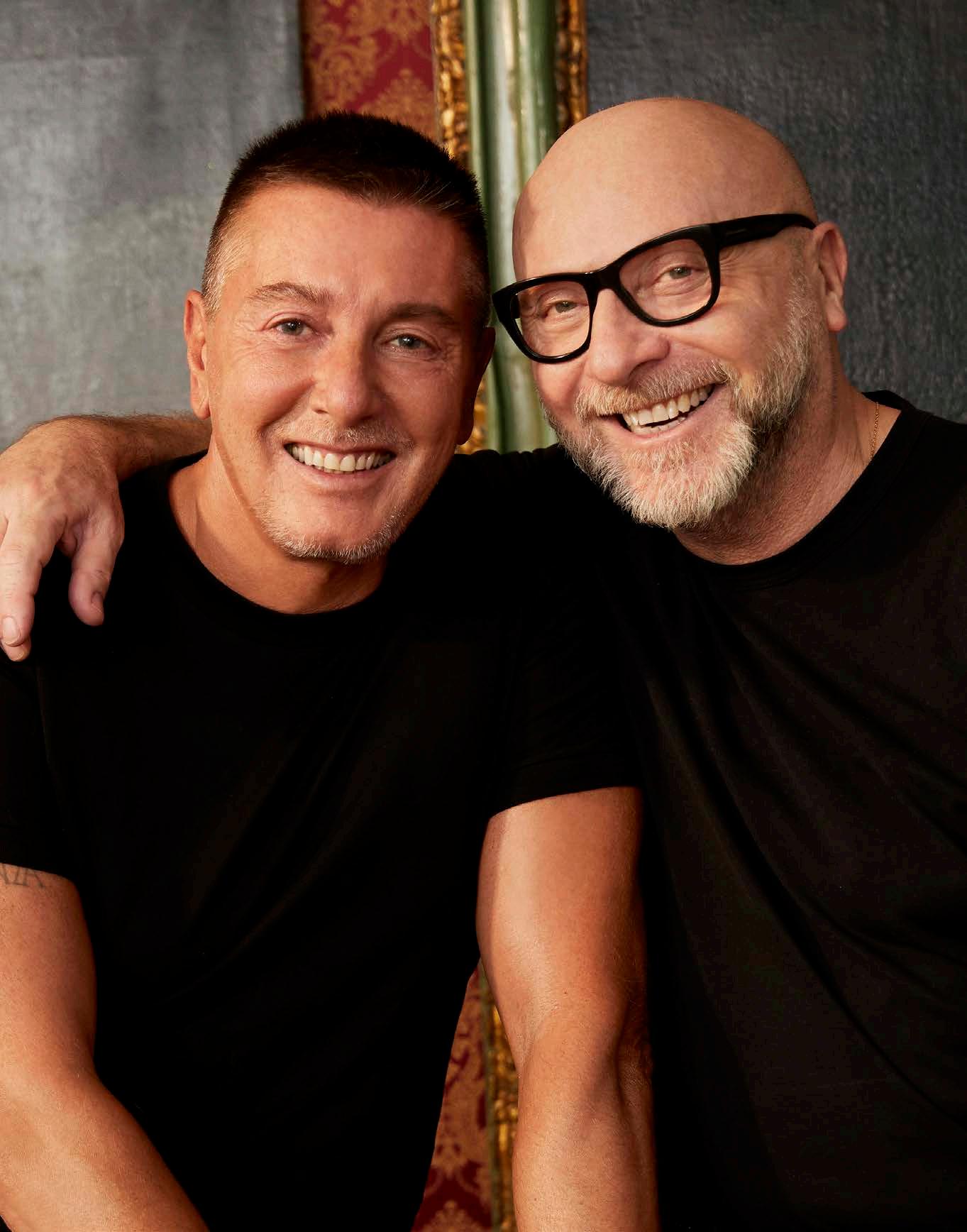
are the most successful
partnership in
THE CULT OF QUALITY CRAFTSMANSHIP, IN WORD AND IN DEED. THE CASE OF DOLCE&GABBANA, IN AN INTERVIEW
LE MANI E IL CUORE.
IL CULTO DELL’ALTO ARTIGIANATO
NELLE PAROLE E NEI FATTI. IL CASO DOLCE&GABBANA IN UNA INTERVISTA
by
Oscar Wilde may have been right when he said “there are moments when Art almost attains to the dignity of manual labour”. Especially if everything is made by skilled hands; and no other fashion brand has made the tradition of Italian hand craftsmanship such an essential part of its vocabulary as Dolce&Gabbana. The culmination of this liaison and witness to its achievements is a major exhibition held in Milan’s Palazzo Reale this year under the title Dal Cuore alle Mani: Dolce&Gabbana (From the Heart to the Hands: Dolce&Gabbana), where, for the frst time since it was established in the city forty years ago, the fashion maison’s unique creations are on display to tell the extraordinary story of the creative process of Domenico Dolce and Stefano Gabbana, from the heart, where ideas arise, to the hands, the tool that gives them form. But this exhibition destined to tour the world is only the tip of the iceberg, as Domenico Dolce and Stefano Gabbana reveal in this interview.
Meticulous attention to detail, a desire to preserve the talents of tailors, weavers and embroiderers, as well as local Italian traditions: are these the keys to your way of working?
Stefano Gabbana The hands keep secrets that cannot be expressed in words, secrets we reveal in our exhibition Dal Cuore alle Mani: Dolce&Gabbana. Our goal has always been to represent Italy, making the most not only of the land itself, but of its culture and traditions. Domenico Dolce It’s important for us to make sure that our work draws attention to the craftsmanship that still represents the country’s excellence today, and to support these little-known enterprises. Every year we choose a new destination for our High Fashion Grand Tour, and that is the starting point for all the rest. For example, when we held the events in Florence in 2020, we worked side by side with forty or so local craftspeople, involving them in all aspects of the creative process.
Forse aveva ragione Oscar Wilde quando diceva che “Ci sono momenti nei quali l’arte raggiunge quasi la dignità del lavoro manuale”. Se tutto nasce dalle mani di chi le cose le sa fare e nessun altro brand di moda ha mai innalzato a fondamento del proprio lessico le tradizioni artigianali italiane come Dolce&Gabbana. Culmine e testimonianza di questa liaison è stata la grande mostra allestita quest’anno a Palazzo Reale a Milano intitolata Dal Cuore alle Mani: Dolce&Gabbana dove, per la prima volta, le creazioni uniche della casa di moda nata quarant’anni fa nel capoluogo lombardo, hanno ripercorso lo straordinario processo creativo di Domenico Dolce e Stefano Gabbana: dal cuore, da cui scaturiscono le idee, alle mani, strumento attraverso cui prendono forma. Ma questa mostra destinata a fare il giro del mondo è solo la punta di iceberg, come rivelano Domenico Dolce e Stefano Gabbana in questa intervista.
Cura meticolosa per i dettagli, desiderio di preservare il talento di sarti, ricamatori e tessitori, ma anche le tradizioni locali italiane, è questo il cuore del vostro sistema?
Stefano Gabbana Le mani custodiscono segreti che non possono essere raccontati a parole, segreti che abbiamo voluto svelare con la nostra mostra Dal Cuore alle Mani: Dolce&Gabbana. Il nostro obiettivo è sempre stato quello di raccontare l’Italia, valorizzarne non solo il territorio, ma anche la cultura e le tradizioni.
Domenico Dolce Per noi è importante poter dare luce, con il nostro lavoro, all’artigianato che ancora oggi rappresenta l’eccellenza, ma anche aiutare e valorizzare quelle realtà poco conosciute nel mondo. Ogni anno scegliamo una nuova meta per il nostro Gran Tour dell’Alta Moda. Da lì parte tutto. Ad esempio, quando abbiamo realizzato gli eventi a Firenze nel 2020, abbiamo lavorato fanco a fanco con circa quaranta artigiani locali, coinvolgendoli in tutto il processo creativo.

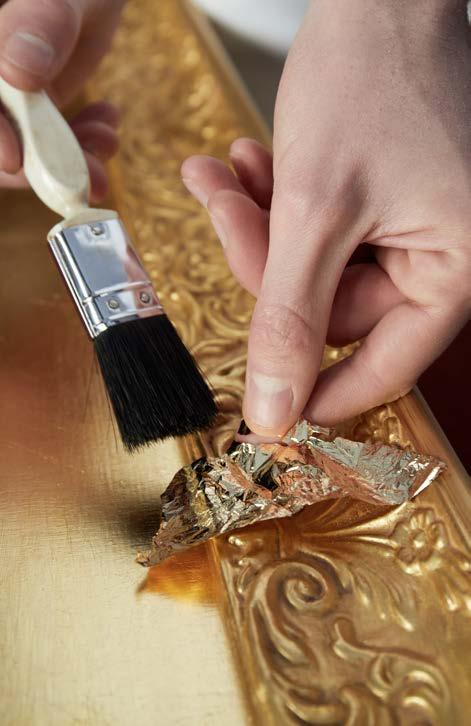
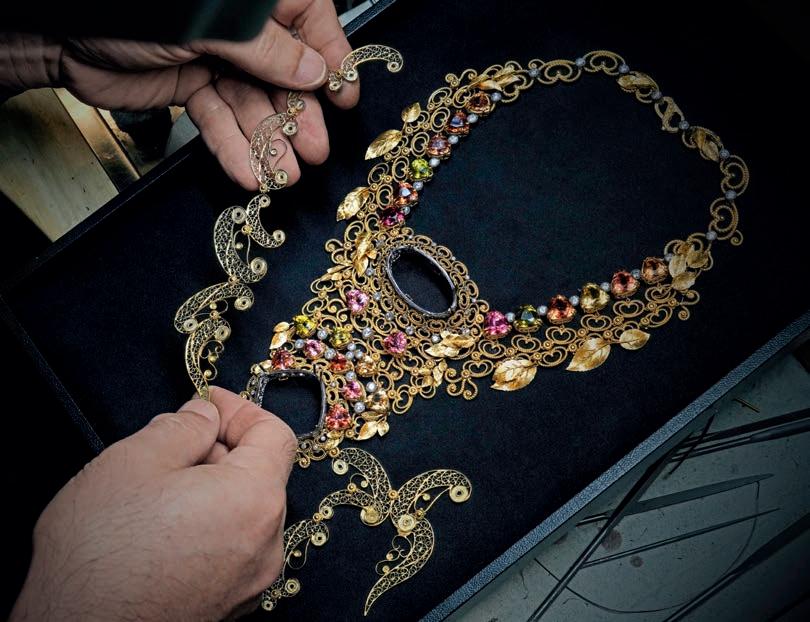
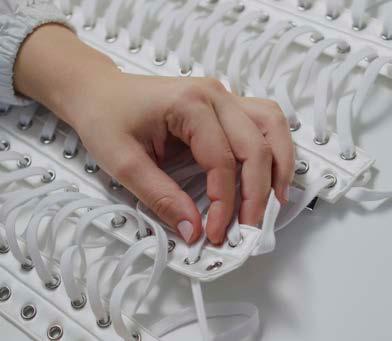
From above clockwise: Nora, Dolce&Gabbana Alta Moda, Nora, Sardegna 2024 (ph. Alex Dobe); craftsman’s hands from the exhibition From the Heart to the Hands: Dolce&Gabbana; White dress, Fatto a Mano 2024; Dolce&Gabbana Alta Gioielleria, making of, Nora, Sardegna 2024
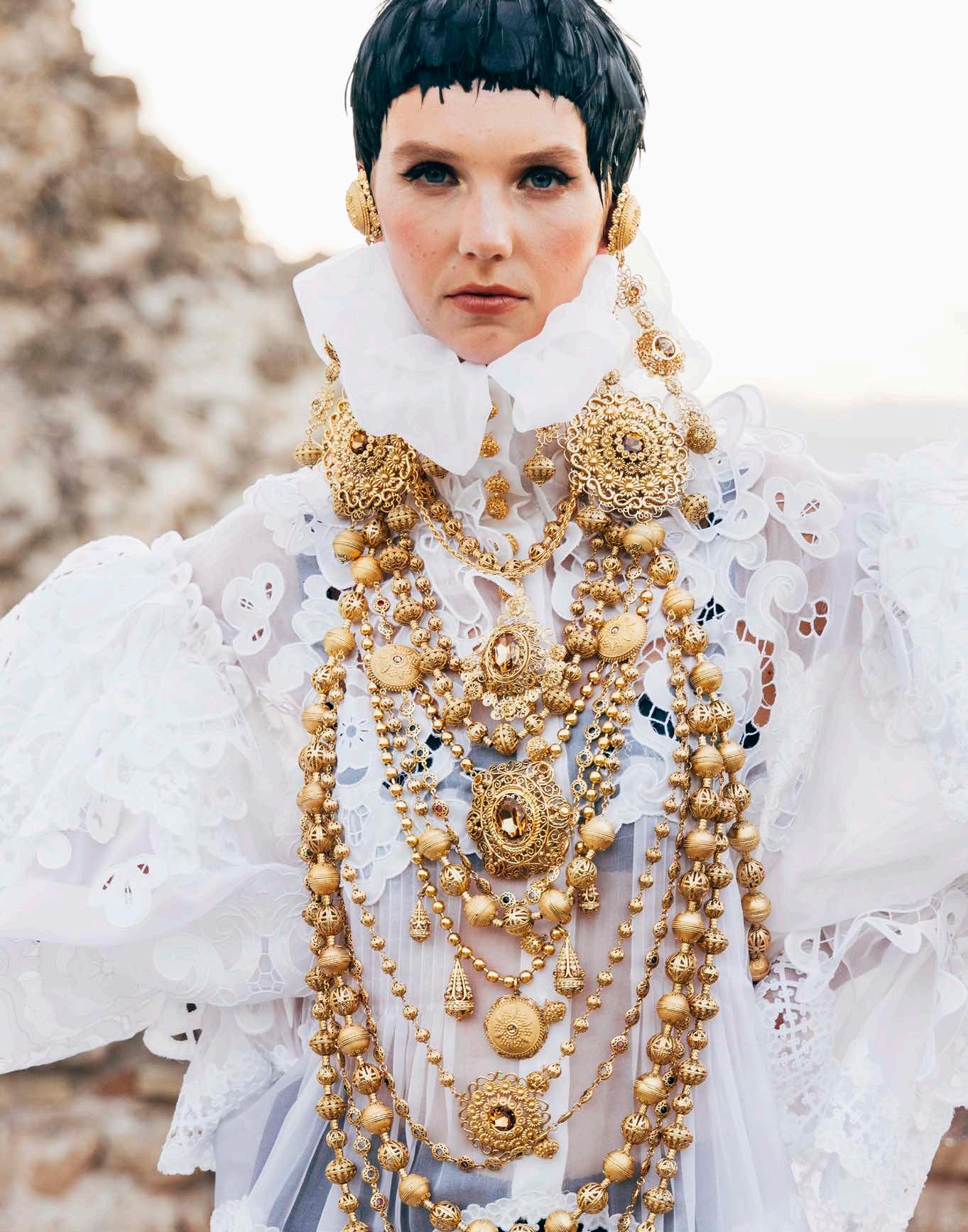
‘THE HANDMADE IS OUR MOST IMPORTANT VALUE. THE HUMAN TOUCH, OF OUR OWN HANDS AND THOSE OF THE TAILORS AND SEAMSTRESSES WHO WORK WITH US, IS AN EXPRESSION OF OUR LOVE OF WHAT WE DO’
Craftsmanship, young people and education: where do these ft into the world of Dolce&Gabbana?
Domenico Dolce The Handmade is our most important value. The human touch, of our own hands and those of the tailors and seamstresses who work with us, is an expression of our love of what we do, which we have attempted to pass on to young people over the years. This is why, in 2012, we started working on a project we really believe in, the Botteghe di Mestiere. The name is a reference to ‘La Bottega’, the workshop in which I began learning the art of tailoring at the age of six.
Stefano Gabbana In 2022 we created the Gen D – Generazione Designer project. The talented young people involved in the project are offered an opportunity to visit different parts of Italy and discover traditional local crafts: historic yarn mills, glass blowing workshops, enamelling on metal, ceramic or glass mosaics. Working in an artisan’s workshop allows these young people to build a bridge between this all-Italian heritage of craftsmanship and their own cultural heritage
A model of quality craftsmanship and industry that has combined tradition with innovation ever since your very frst collection. What is the secret to this combination?
Domenico Dolce and Stefano Gabbana Being able to maintain a constant balance between innovation and tradition, as our collections demonstrate. We have attempted to express our world, our heritage, the values that have always represented us, with one eye on the future. We are proud of our roots, but also aware of the reality in which we live.
Artigianato, giovani e formazione nell’universo Dolce&Gabbana?
Domenico Dolce Il Fatto a Mano è il nostro valore più importante. Il tocco umano, quello delle nostre mani, dei sarti e delle sarte che collaborano con noi, traduce l’amore che abbiamo per il nostro lavoro e che da anni cerchiamo di trasferire anche ai giovani.
Per questo motivo, nel 2012 abbiamo dato vita ad un progetto in cui crediamo molto, Botteghe di Mestiere. Il nome non è casuale… ‘La Bottega’ è proprio il luogo in cui, all’età di sei anni, ho imparato il mestiere del sarto.
Stefano Gabbana Nel 2022 abbiamo creato anche il progetto Gen D – Generazione Designer. I giovani talenti coinvolti hanno l’opportunità di visitare diverse zone d’Italia alla scoperta delle lavorazioni locali più rappresentative: le storiche flature artigianali, il vetro sofato, la smaltatura su metallo, il mosaico in ceramica oppure quello in vetro. Lavorare nelle botteghe degli artigiani permette loro di creare un ponte tra questa ricchezza
Made in Italy e il loro bagaglio culturale
Un modello di alto artigianato e industria che fn dalla vostra prima collezione cuce assieme tradizione e innovazione, il segreto di questa alchimia?
Domenico Dolce e Stefano Gabbana Saper mantenere un costante equilibrio tra innovazione e tradizione e le nostre collezioni ne sono la dimostrazione. Abbiamo provato a raccontare il nostro mondo, il nostro DNA, i valori che ci rappresentano da sempre con uno sguardo rivolto al futuro. Siamo orgogliosi delle nostre radici, ma siamo coscienti della realtà in cui viviamo.
ROBERTO LUCCHI IS A YOUNG CRAFTSMAN AND DESIGNER WHO CREATES UNIQUE HANDMADE HATS
TOCCO DI STILE!
ROBERTO LUCCHI, GIOVANE ARTIGIANO-DESIGNER
by Martina Olivieri
How did you become interested in hats?
I’ve always seen the hat as an accessory that allows artistic souls to reveal themselves. About 7 years ago, as a young musician, I wanted a hat of my own, but I couldn’t fnd anyone who would make me a custom hat. So I decided to make it myself, and started studying and collecting information, travelling to Tuscany to search for the right tools and talk to craftspeople who could give me with some tips. And this gradually evolved into a career. How much time does it take you to make a hat?
An average of about 4 days, because there are many stages in the process, and waiting times, too.
Famous people who wear your hats?
From singers and musicians like Andrea Bocelli, Negramaro and Joe Bastianich to great world-famous performers such as Tim Burton and Johnny Depp.
Well-known people you’d like to make a hat for?
Dua Lipa and Bruno Mars!
How to choose the perfect hat?
On the basis of your personality, choosing the hat that best suits your spirit with the aid of a talented hatmaker.
What are your sources of inspiration?
Nature, with its natural hues and wooden materials, and people.
How do you see the future of the handmade?
I think we are seeing a major return to the handmade. We have held a number of masterclasses in which we attempt to promote the value of “Made in Italy” and help people understand what makes a truly good quality product.
Come si è avvicinato al mondo dei cappelli?
Il cappello l’ho sempre visto come un accessorio che permette agli animi artisti di venire allo scoperto. Circa 7 anni fa, anche io come piccolo musicista volevo il mio, ma non trovavo nessuno che lo realizzasse su misura. Da lì è nata l’idea di crearmelo da solo, ho iniziato a studiare, informarmi e sono partito la Toscana alla ricerca della strumentazione giusta e per confrontarmi con artigiani che potevano darmi qualche dritta. Piano piano è diventato il mio lavoro.
Quanto tempo ci vuole per realizzarne uno?
Il tempo medio è di circa 4 giorni, perché ci sono tante fasi di lavorazione ma anche di riposo.
Volti noti che sfoggiano i suoi cappelli?
Da cantanti e musicisti come Andrea Bocelli, i Negramaro e Joe Bastianich a grandi artisti internazionali come Tim Burton e Johnny Depp. Personaggi noti a cui vorrebbe farne uno?
Dua Lipa e Bruno Mars!
Come scegliere il cappello perfetto?
Basandosi sulla propria personalità e scegliendo, insieme all’aiuto di un bravo artigiano cappellaio, quello più adatto al proprio estro.
Quali sono le sue fonti di ispirazione?
La natura con le sue le tinte naturali e i suoi materiali in legno, e le persone.
Come vede il futuro del fatto a mano?
Penso che ci sia un grande ritorno del fatto a mano. Noi facciamo diverse masterclass durante le quali cerco di riportare in alto il valore del Made in Italy e di fare capire cosa è di qualità e cosa non lo è.



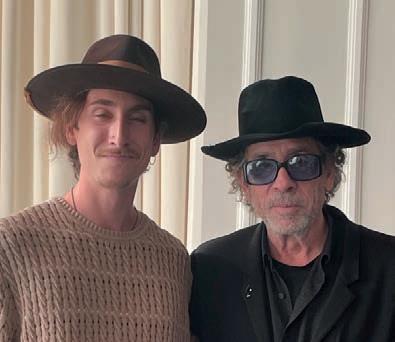
Many
and celebrities like to
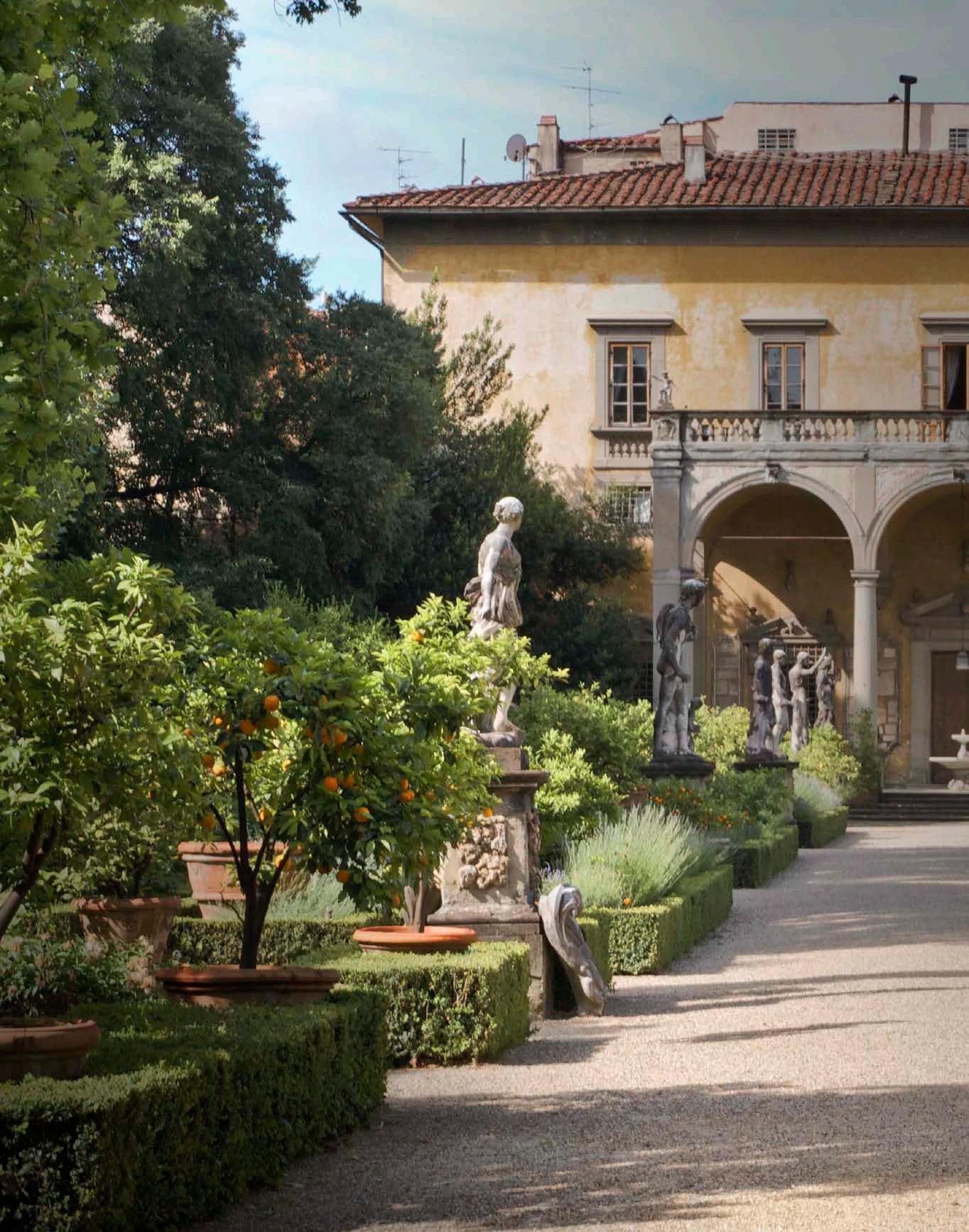
ARTIGIANATO E PALAZZO: THREE DAYS IN FLORENCE TO ( RE ) DISCOVER CRAFTSMANSHIP

TRA PASSATO E FUTURO.
ARTIGIANATO E PALAZZO: A FIRENZE, TRE GIORNI ALLA ( RI ) SCOPERTA
DEL FATTO A MANO
by Virginia Mammoli
Artigianato e Palazzo, the brainchild of Neri Torrigiani, enthusiastically welcomed with the patronage of Giorgiana Crosini, was created in 1995. Today it is one of the biggest events devoted to fne craftsmanship, promoted by the Giardino Corsini Association chaired by Sabina Corsini (Giorgiana’s daughter).
Almost 1,000 Italian and foreign exhibitors will take part in this Thirty-Year Anniversary edition, celebrated from 13 to 15 September in the beautiful setting of the Palazzo Corsini Garden in Florence, with a programme featuring past, present, future and 100 new examples of the fnest Italian and European artisan tradition, from jewellery to millinery, glass, embroidery and original creations in paper and metal. The central theme of this 30th edition is restoration. The programme includes exhibitions, awards - including the Fondazione CR Firenze Award assigned to the most signifcant contribution to making Florence a centre of excellence for the restoration of artistic artefacts -, guided tours, workshops, meetings, debates and a mouth-watering food area. We asked Neri Torrigiani and Sabina Corsini, the two souls and minds behind the event, to tell us more.
Mr. Torrigiani, it all started from an idea of yours, which along with Giorgiana Corsini’s patronage, changed the way of talking about artisan culture beyond tradition. Today, 30 years after the frst edition, what does ‘craftsmanship’ mean to you?
I’ve always considered craftsmanship as a unique heritage of know-how and values, crucial for our culture, capable of renewing itself from generation to generation by drawing on tradition but at the same time able to enrich itself with contemporary stylistic elements, as it is by nature.
Era il 1995 quando - da un’idea di Neri Torrigiani, subito accolta con entusiasmo e spirito mecenatistico da Giorgiana Corsininacque Artigianato e Palazzo, oggi una delle più importanti manifestazioni dedicate all’alto artigianato, promossa dall’Associazione Giardino Corsini presieduta da Sabina Corsini (fglia di Giorgiana).
Quasi 1.000 gli espositori italiani e stranieri protagonisti in questi 30 anni di storia, celebrati dal 13 al 15 settembre nella meravigliosa cornice del Giardino di Palazzo Corsini di Firenze, con un programma tra passato, presente, futuro e 100 nuovi testimoni della più preziosa tradizione artigiana italiana ed europea, dalla gioielleria alla modisteria, passando per il vetro, i ricami e originali creazioni in carta e metallo. Tema centrale di questa 30esima edizione, il restauro. In programma, mostre, premiazioni - tra cui quella del Premio Fondazione CR Firenze assegnato al soggetto che più ha contribuito a rendere Firenze al centro del restauro d’eccellenza per i manufatti artistici -, visite guidate, workshop, incontri, dibattiti e una gustosa area food.
Ma ci siamo fatti raccontare di più proprio da Neri Torrigiani e Sabina Corsini, le due anime e menti della manifestazione.
Signor Torrigiani, tutto è nato da una sua intuizione, che, grazie al contributo di Giorgiana Corsini, ha cambiato il modo di raccontare la cultura artigiana oltre la tradizione.
Oggi, a 30 anni dalla prima edizione, cosa signifca per lei ‘artigianato’?
Ho sempre considerato l’artigianato un patrimonio di saperi e valori unico, determinante per la nostra cultura, capace di rinnovarsi nel passaggio generazionale attingendo alla tradizione ma al contempo in grado di arricchirsi di stilemi contemporanei, come lo è per sua natura.
Quali sono le novità di Artigianato e Palazzo 2024?
Neri Torrigiani Abbiamo cercato e trovato nel
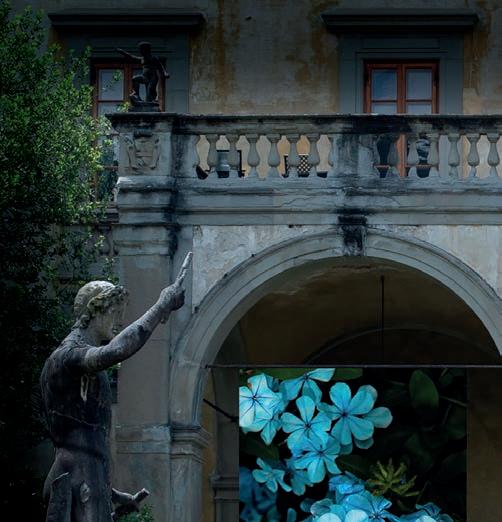
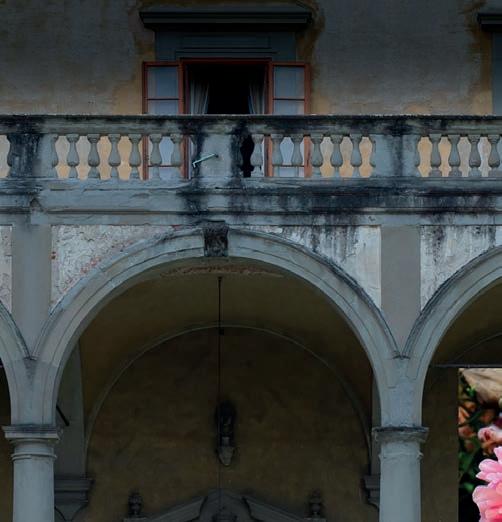
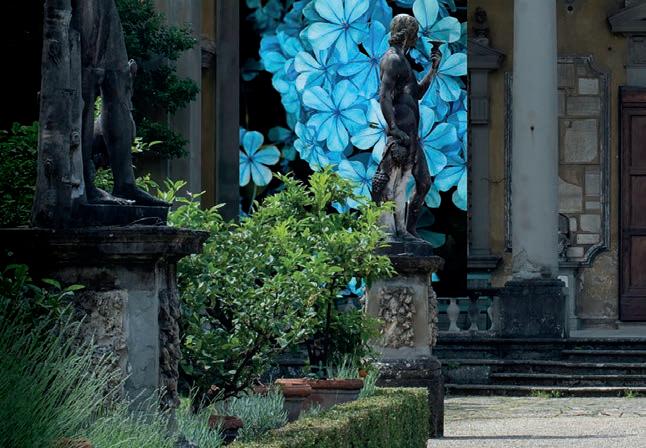

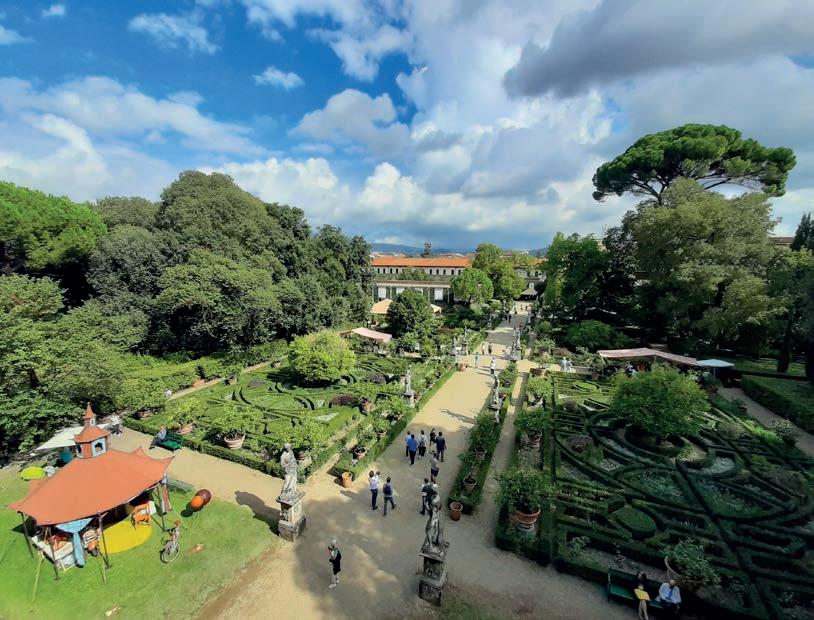

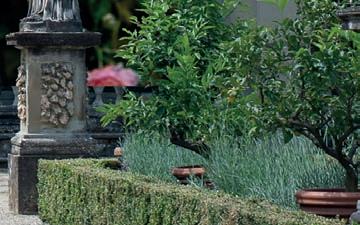
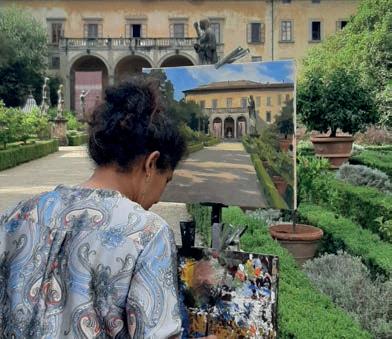
celebrates its frst 30 years this year with a special edition held from 13 to 15 September

‘I’VE ALWAYS CONSIDERED CRAFTSMANSHIP AS A UNIQUE HERITAGE OF KNOW - HOW AND VALUES, CRUCIAL FOR OUR CULTURE, CAPABLE OF RENEWING ITSELF FROM GENERATION TO GENERATION’
What is new for Artigianato e Palazzo 2024?
Neri Torrigiani We looked for, and found in restoration a theme that could condense many traditional and innovative aspects of manual work. So in addition to a new selection of artisans from Italy and abroad, the public will be able to broaden their knowledge of a variety of restoration techniques applied to different objects and materials.
Sabina Corsini Artigianato e Palazzo, botteghe artigiane e loro committenze 2024 aims to put tradition and modernity - two only apparently directly opposed concepts - on the same level. This is the new development for the thirtieth edition. A special edition with the awareness of having pioneered a format, which others have since replicated, centred on the idea of ‘doing’, ‘making’, before an audience that is changing, from the simply curious to attentive observers and fnally, passionate, knowledgeable ‘modern clients’. Which experiences in the history of the event deserve a special mention?
NT Certainly, having succeeded, with tenacity and obstinacy, in crossing the borders of our country to make great Italian craftsmanship known to the public in Paris, Tokyo, Osaka, Moscow and Los Angeles. For 30 years the event has taken place in your historic family palazzo and in the monumental garden. How much work does the residence require?
SC The Palazzo Corsini al Prato Garden is our green lung, that place where our family life continues even outside the walls of the
restauro un tema che riuscisse a condensare tanti aspetti del lavoro manuale tra tradizione e innovazione. In mostra quindi il pubblico - oltre ad una nuova selezione di artigiani provenienti dall’Italia e dall’esteropotrà approfondire la conoscenza delle più disparate tecniche di restauro applicate a differenti manufatti e materiali.
Sabina Corsini L’edizione 2024 di Artigianato e Palazzo, botteghe artigiane e loro committenze vuole mettere sullo stesso piano tradizione e modernità, due concetti solo apparentemente antitetici, questa è la novità della trentesima edizione. Un’edizione speciale per la consapevolezza di essere stati i precursori di un format, che altri hanno poi replicato, incentrato sull’idea del ‘fare’, ‘realizzare’, davanti a un pubblico che si trasforma, da semplici curiosi ad attenti osservatori e infne ‘committenti moderni’ appassionati e consapevoli.
Quali esperienze nella storia della manifestazione meritano una menzione speciale?
NT Certamente essere riusciti, con caparbietà e ostinazione, a varcare i confni del nostro paese per far conoscere al pubblico di Parigi, Tokyo, Osaka, Mosca e Los Angeles il grande artigianato italiano.
Da 30 anni la manifestazione si svolge nel vostro storico palazzo di famiglia e nel giardino monumentale. Quanto lavoro richiede la residenza?
SC Il Giardino di Palazzo Corsini al Prato è il nostro polmone, quel luogo dove la vita della nostra famiglia continua anche fuori dai muri del palazzo, è ‘l’altra stanza della
‘ARTIGIANATO E PALAZZO, BOTTEGHE ARTIGIANE E LORO COMMITTENZE 2024 AIMS TO PUT TRADITION AND MODERNITY, TWO ONLY APPARENTLY DIRECTLY OPPOSED CONCEPTS’
palazzo, it is ‘the other room of the house’. Thirty years ago it was natural to imagine the exhibition in this place. With Neri Torrigiani we explored the idea of bringing the workshops inside the ground foor of the Palazzo, in all those spaces where in olden days all the artisans (mechanics, upholsterers, saddlers...) worked in the service of the palazzo. Even today, Arturo, the carpenter, has his workshop in these spaces. Arturo is a very busy carpenter and restorer! On the upper foors there is always a piece of furniture, a door, a shutter, a sofa that needs his expert hands. It is not uncommon to meet him around midday while he takes a short break at the kitchen table that he himself restored.
An itinerary to explore the bond between Florence and craftsmanship?
NT The Oltrarno workshops, where you can still admire the creations of the best artisans in a continuous exchange with the most diverse clients, generation after generation. Our Exhibition is a condensation of these experiences!
SC Florence is considered the world capital of fne artistic craftsmanship, the workshops are often in little-frequented streets, sometimes unknown even to Florentines. I’d say that from 13 to 15 September the most exciting itinerary begins from the Corsini Garden in via della Scala 115 (or via il Prato 58), passing the ancient stables, the Limonaie, the Prato del Ponticello and the Loggia. Places that for three days become the address book par excellence of many master craftsmen.
casa’. Trenta anni fa venne naturale immaginare la mostra in questo luogo. Con Neri Torrigiani abbiamo esplorato l’idea di portare le botteghe all’interno del piano terreno del Palazzo, in tutti quegli spazi dove anticamente lavoravano tutti gli artigiani (meccanici, tappezzieri, sellai...) a servizio del palazzo.
Ancora oggi, Arturo, il falegname, ha la sua bottega in questi spazi. Arturo è un falegname e restauratore impegnatissimo! Ai piani superiori c’è sempre un mobile, una porta, una persiana, un divano che ha bisogno delle sue mani esperte, non è raro incontrarlo verso mezzogiorno mentre si prende una breve pausa sul tavolo della cucina che lui stesso ha restaurato.
Un itinerario per scoprire il connubio tra Firenze e l’artigianato?
NT Le botteghe dell’Oltrarno dove ancora, generazione dopo generazione, si possono ammirare le creazioni dei migliori artigiani nel continuo scambio con le più diverse committenze. La nostra Mostra è un condensato di queste esperienze!
SC Firenze è considerata la capitale mondiale dell’alto artigianato artistico, le botteghe sono spesso in strade poco frequentate, a volte sconosciute anche ai forentini. Dire che dal 13 al 15 settembre l’itinerario più entusiasmante inizia dal Giardino Corsini in via della Scala 115 (o via il Prato 58), passando dalle antiche scuderie, alle Limonaie, il Prato del Ponticello e la Loggia. Luoghi che per tre giorni diventano l’indirizzario per eccellenza di tanti maestri artigiani.


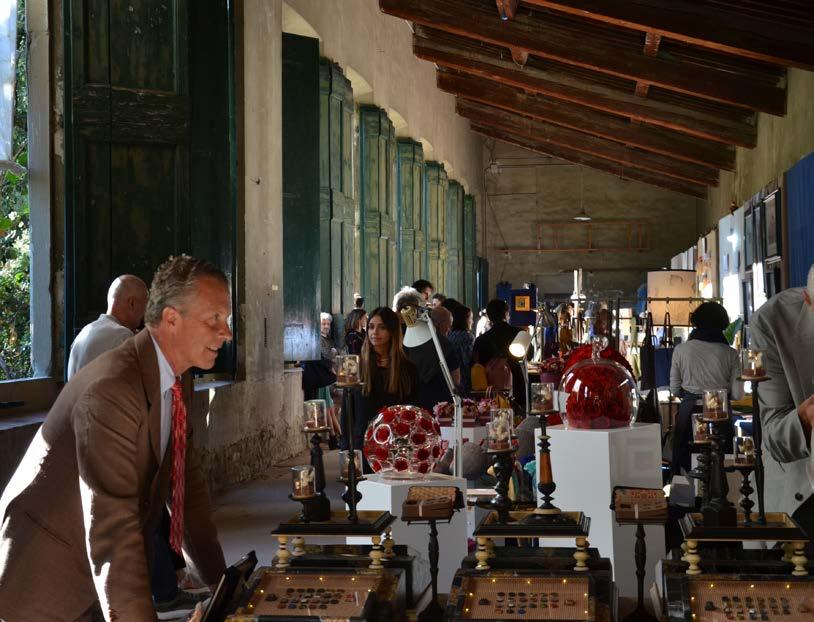
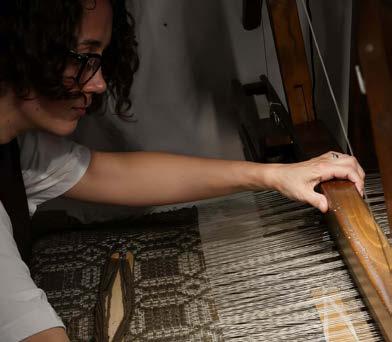
The programme includes exhibitions, awards, guided tours, workshops, meetings, debates and a mouth-watering food area

On these pages: some
THE UNIVERSE OF HOMO FABER: A JOURNEY INTO THE BEAUTY OF EUROPE’S CRAFTSMANSHIP

GESTI PROFONDI.
L‘UNIVERSO DI HOMO FABER: UN VIAGGIO NELLA BELLEZZA
DEI MESTIERI D’ARTE D’EUROPA

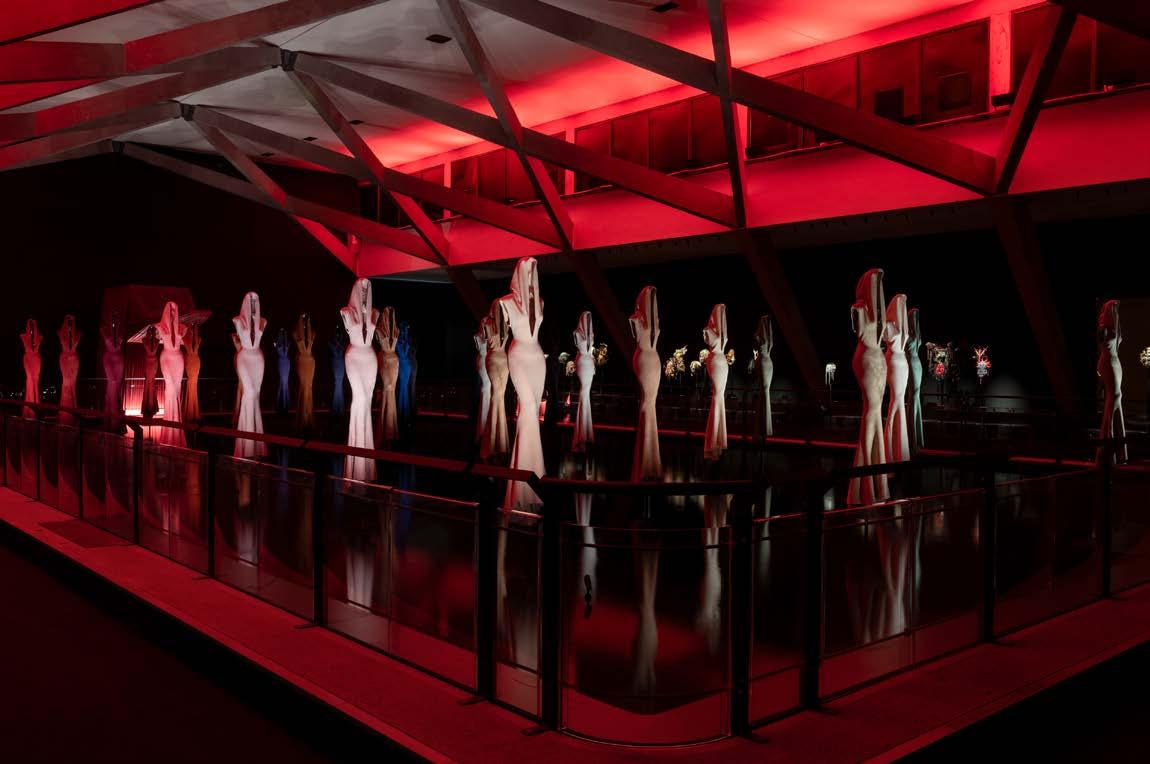
“When you start breathing beauty, it becomes as necessary as oxygen.” This is the driving force behind the ever-growing success of Homo Faber, the great biennial event dedicated to the art professions of Europe. Back in Venice, in the prestigious setting of the Giorgio Cini Foundation, this extraordinary edition is staged for the entire month of September, with renowned director Luca Guadagnino serving as artistic director alongside architect Nicolò Rosmarini. We spoke with Alberto Cavalli, executive director of the Michelangelo Foundation for Creativity and Craftsmanship, the organising body of Homo Faber, and general manager of the Fondazione Cologni dei Mestieri d’Arte, coordinator of the Homo Faber in Città project, which has opened the doors of seventy temples of artisanry to visitors for this 2024. What is the deep meaning of an event such as Homo Faber?
The uniqueness of Homo Faber comes from several factors. The values it embodies, for instance: Homo Faber aims to celebrate a more human, profound, and authentic way of showcasing artisan talent, bringing craftmanship back to the heart of our lives to emphasise how hands, gazes and emotional intelligence can transform the world in wonderful ways. Then there are the numbers: ten exhibitions, eight hundred objects, fve hundred craftsmen, sixty-fve Young Ambassadors, tens of thousands of visitors. And the goals: to restore value and visibility to these often unknown heroes who, every day, create the forms of beauty that make us fall in love, and accompany every phase of our lives. Where did the inspiration for this edition’s theme come from?
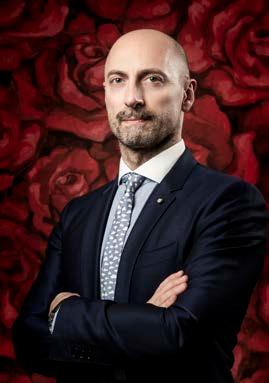
“Quando si inizia a respirare la bellezza, diventa necessaria come l’ossigeno”. È questo il motore del successo sempre crescente di Homo Faber, grande evento biennale dedicato ai mestieri d’arte d’Europa tornato a Venezia, nella prestigiosa cornice della Fondazione Giorgio Cini, per una nuova straordinaria edizione in scena per tutto il mese di settembre, con il regista Luca Guadagnino alla direzione artistica insieme all’architetto Nicolò Rosmarini. A parlarcene è Alberto Cavalli, executive director della Michelangelo Foundation for Creativity and Craftsmanship, ente organizzatore di Homo Faber, e general manager della Fondazione Cologni dei Mestieri d’Arte, coordinatrice del progetto Homo Faber in Città, che per questo 2024 ha aperto ai visitatori le porte di settanta templi del saper fare. Qual è il signifcato profondo di una manifestazione come Homo Faber?
L’unicità di Homo Faber è data da diversi fattori. I valori che la animano, per esempio: Homo Faber nasce per valorizzare un modo più umano, più profondo e più autentico di celebrare il talento artigiano, riportando i mestieri d’arte al centro delle nostre vite per sottolineare come le mani, gli sguardi, le intelligenze emotive siano sempre in grado di trasformare il mondo in maniera meravigliosa. Ci sono poi i numeri: dieci mostre, ottocento oggetti, cinquecento artigiani, sessantacinque Young Ambassadors, decine di migliaia di visitatori. E le fnalità: ridare valore e visibilità a questi eroi spesso sconosciuti che, ogni giorno, creano le forme della bellezza che ci fanno innamorare, e che accompagnano ogni fase della nostra vita.
Da dove viene l’ispirazione per il tema di questa edizione?
‘The Journey of Life’ is the theme chosen
‘Il viaggio della vita’ è il tema scelto per que-
‘HOMO FABER AIMS TO CELEBRATE A MORE HUMAN, PROFOUND, AND AUTHENTIC WAY OF SHOWCASING ARTISAN TALENT, BRINGING CRAFTMANSHIP BACK TO THE HEART OF OUR LIVES TO EMPHASISE
CAN TRANSFORM
for this edition by Hanneli Rupert, Executive Vice-President of the Michelangelo Foundation, to highlight the role that artisans play in the most important moments of human life: from birth to death, passing through love, dreams, nature, travel... Moments marked by special objects, profound gestures, meaningful human changes, that transcend different cultures. Objects crafted by artisans, made to last and gain value over time, precisely because they are rich in emotional values that tell the story of what we hold most precious: life itself.
What was the contribution of director Luca Guadagnino, artistic director for 2024?
Luca Guadagnino, together with architect Nicolò Rosmarini, has created an unforgettable experience. Working like a true master craftsman, he has put his visionary talent to work to transform each exhibition space into a true celebration of mastery. This ‘journey of a lifetime,’ thanks to their talent, is also a journey into beauty and wonder.
What are the other main initiatives of the Michelangelo Foundation?
The Foundation, created by Johann Rupert and Franco Cologni, promotes, and protects the art professions internationally. Besides the biennial event in Venice, it has enriched the Homo Faber constellation with two other projects: the Homo Faber Guide, a free downloadable app that features nearly 3000 artisans in over 40 countries in Europe and the rest of the world, and the Homo Faber Fellowship, a project aimed at young artisans, which supports and fnances the artisans of the future through international training internships.
sta edizione da Hanneli Rupert, vicepresidente esecutiva della Michelangelo Foundation, per mettere in luce il ruolo che gli artigiani rivestono nei momenti più importanti della vita umana: dalla nascita alla morte, passando per l’amore, i sogni, la natura, i viaggi… Momenti scanditi da oggetti speciali, da gesti profondi, da scambi umanamente signifcativi, al di là delle diverse culture. Oggetti realizzati da artigiani, fatti per durare e per assumere valore nel tempo, proprio perché ricchi di valori affettivi che raccontano ciò che abbiamo di più prezioso: la vita stessa.
Qual è stato il contributo del regista Luca Guadagnino, direttore artistico per questo 2024?
Luca Guadagnino, insieme all’architetto Nicolò Rosmarini, ha creato un’esperienza indimenticabile. Lavorando come un vero maestro artigiano, ha messo il suo talento visionario all’opera per trasformare ogni spazio espositivo in una vera e propria celebrazione della maestria. Questo ‘viaggio della vita’, grazie al loro talento, è anche un viaggio nella bellezza e nella meraviglia.
Quali sono le altre principali iniziative di cui si occupa la Michelangelo Foundation?
La Fondazione, creata da Johann Rupert e Franco Cologni, promuove e protegge i mestieri d’arte a livello internazionale. Oltre all’evento biennale di Venezia, ha arricchito la costellazione Homo Faber con altri due progetti: la Homo Faber Guide, una app scaricabile gratuitamente, che presenta quasi 3000 artigiani in più di 40 paesi, tra l’Europa e il resto del mondo, e la Homo Faber Fellowship, un progetto rivolto ai giovani artigiani, che sostiene e fnanzia gli artigiani del futuro grazie a dei tirocini formativi a livello internazionale.
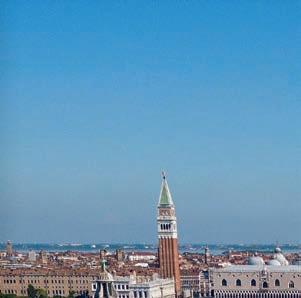

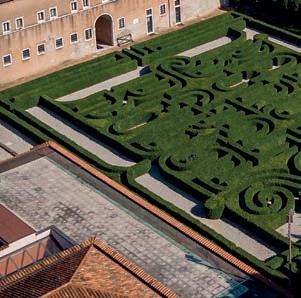
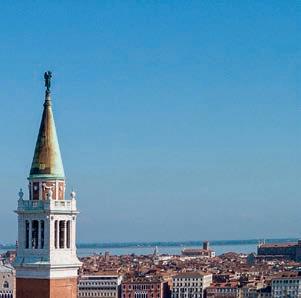
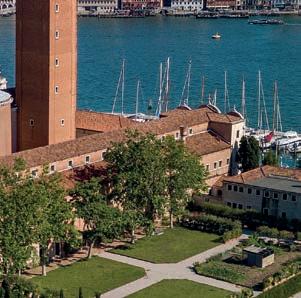
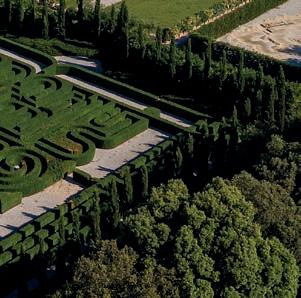


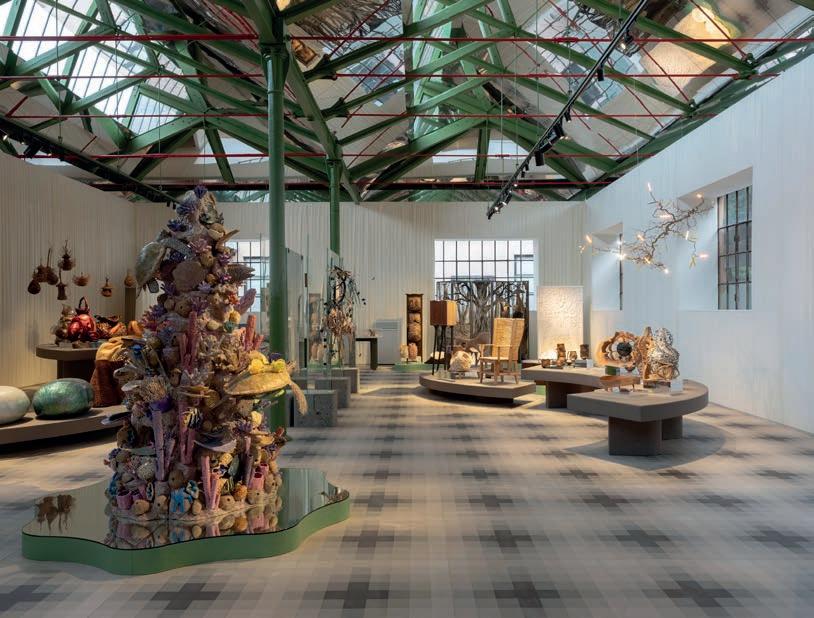

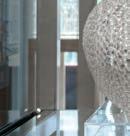



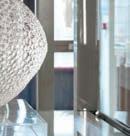


This extraordinary edition is staged for the entire month of September, with renowned director Luca Guadagnino serving as artistic director alongside architect Nicolò
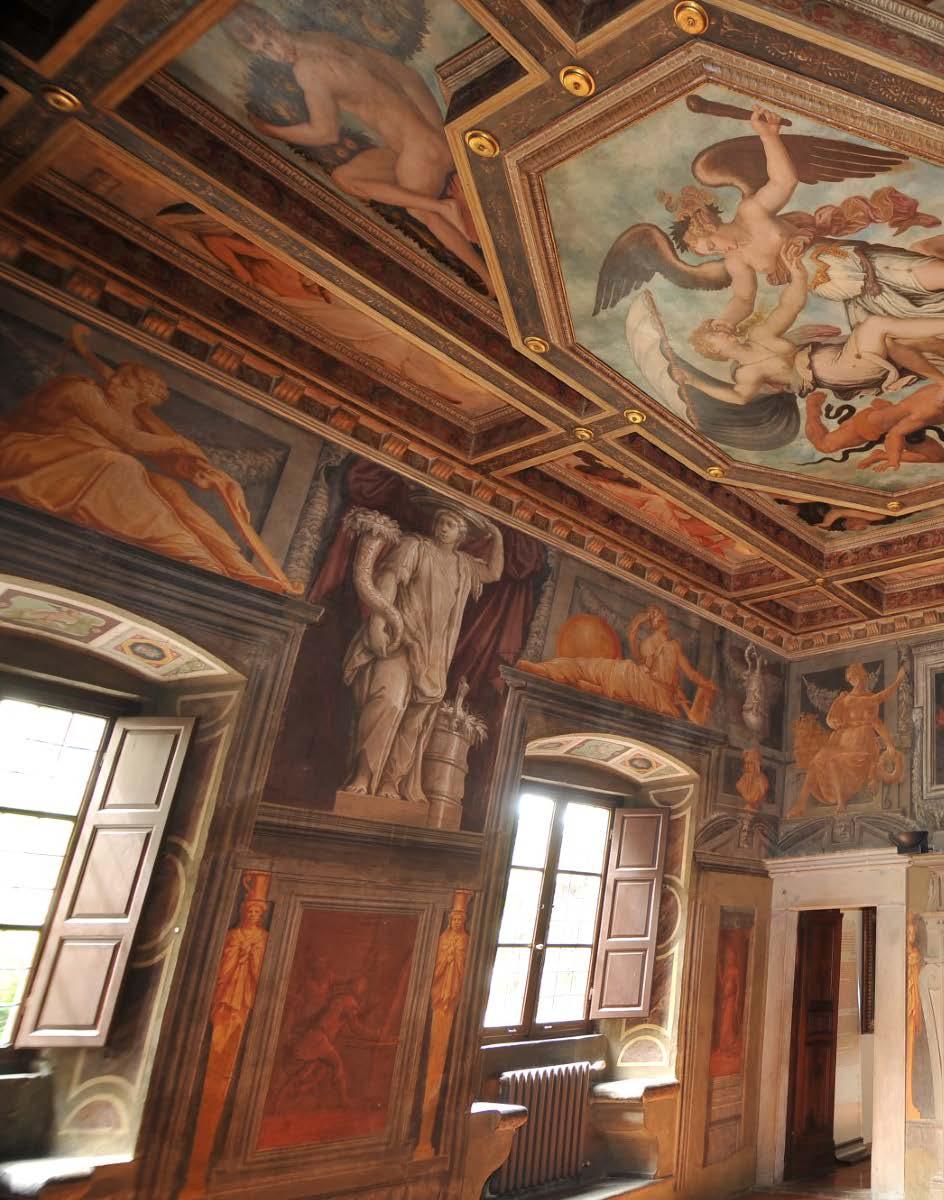
ON THE 450TH ANNIVERSARY OF VASARI’S DEATH, AREZZO CELEBRATES ONE OF ITS MOST ILLUSTRIOUS CITIZENS

ECCELLENTE TRA GLI ECCELLENTI. SULLE ORME DI VASARI A AREZZO, CHE PER I 450 ANNI DALLA MORTE CELEBRA UNO DEI SUOI PIÙ ILLUSTRI CITTADINI
by Carlo Sisi
BORN IN 1511 IN AREZZO, TUSCANY, ALREADY AT A YOUNG AGE VASARI BECAME ONE OF THE PROTAGONISTS OF THE ARTISTIC SCENE AT THE COURT OF THE MEDICI AND THE AUTHOR OF THOSE ‘LIVES’ THAT WOULD BECOME A FUNDAMENTAL TEXT IN THE FIELD OF INTERNATIONAL HISTORIOGRAPHY
Arezzo. La città di Vasari: the choice of this title, the City of Vasari, is a great way to summarise in an organic project the series of events and exhibitions which from June 2024 to February 2025 will narrate the biography and the artistic activity of one of the greatest artists of the 16th century. Born in 1511 in Arezzo, Tuscany, already at a young age Vasari became one of the protagonists of the artistic scene at the court of the Medici and the author of those ‘Lives’ that would become a fundamental text in the feld of international historiography (the cycle of biographies written by Vasari about - as the title states - the most excellent painters, sculptors, and architects, from Cimabue to our day). On the occasion of the 450th anniversary of Vasari’s death, the city’s museums and archives which preserve his works and documents acquire further relevance through a series of ‘dossier exhibitions’. These will revolve around themes of particular interest and signifcance so as to reach a wider audience and form a detailed picture of Vasari’s activity with relation to Arezzo and its territory, but also the historical and cultural environment where he lived. The exhibition Vasari e gli arretina vasa is an opportunity to see the new layout of the room dedicated to the famous terra-sigillata pottery in the National Archaeological Museum; Roman vases and jars richly ornate and decorated with mythological themes that were discovered and made popular by the artist’s grandfather who was a potter, Giorgio di Lazzaro Taldi. The
Arezzo. La città di Vasari: un titolo che è anche viatico per riassumere, in un organico progetto, la collana di eventi che da giugno 2024 a febbraio 2025 narra, attraverso mostre ed eventi scalati in questo arco di tempo, la biografa e l’attività artistica di uno dei massimi protagonisti dell’arte del Cinquecento, nato nella città toscana nel 1511 e divenuto ben presto regista delle scenografe medicee e autore di quelle ‘Vite’ che rappresenteranno un apice letterario nell’ambito della storiografa internazionale (il ciclo di biografe scritto da Vasari sui, come prosegue il titolo: più eccellenti architetti, pittori, et scultori italiani, da Cimabue insino a’ tempi nostri). In occasione dei 450 anni dalla morte di Vasari, i musei e gli archivi della città che ne conservano opere e documenti acquistano ulteriore rilievo attraverso ‘mostre dossier’ dedicate a temi di particolare interesse e suggestione, così da garantire un’estesa condivisione indirizzata a comporre un quadro esauriente dell’attività di Vasari riferita ad Arezzo, al suo territorio ed anche al più vasto ambito storico e culturale nel quale egli si trovò ad operare.
Un’occasione per visitare il recente allestimento della sala dedicata ai celebri vasi in terra sigillata nel Museo Archeologico Nazionale è la mostra Vasari e gli arretina vasa, quei reperti ricchi di ornati e temi mitologici che chiamano in causa il nonno vasaio dell’artista, Giorgio di Lazzaro Taldi, al cui nome è legata la scoperta e la fortuna di quella antica manifattura. L’
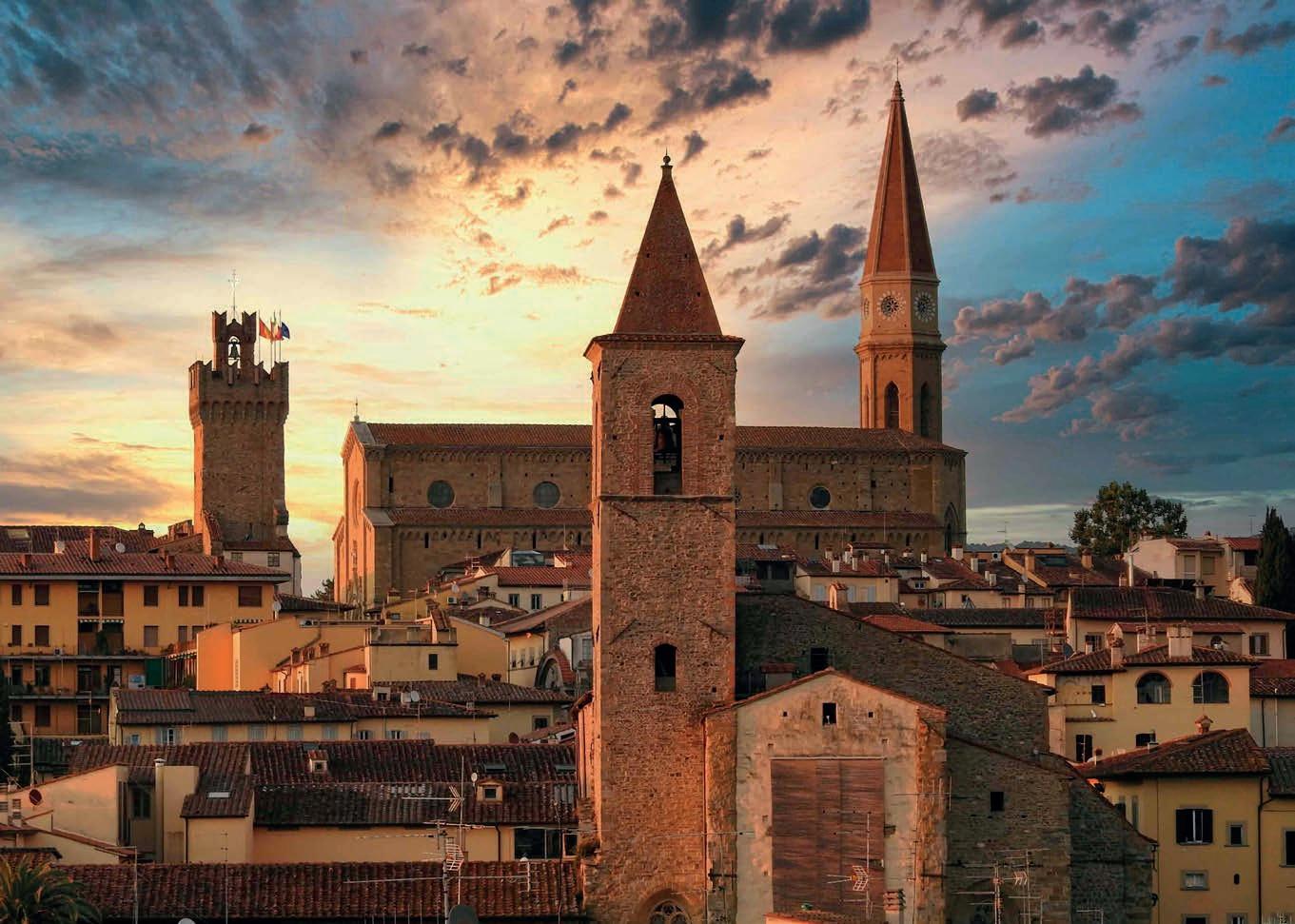
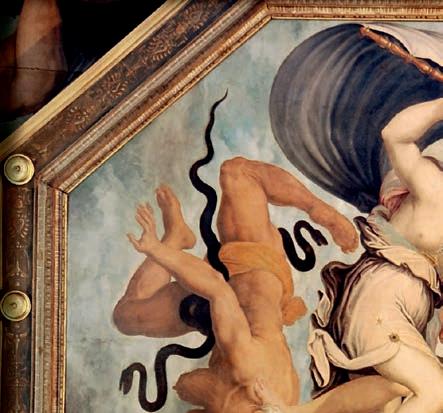



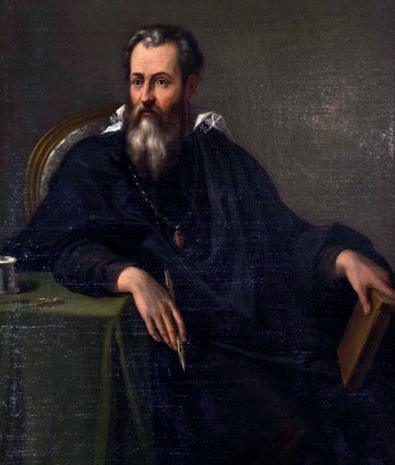
The artistic programme inaugurated in Arezzo consists of a series of exhibitions of various artworks and rare documents. The city was the birthplace of Giorgio Vasari, and it is here that the artist and his wife chose to settle, immersed in its surroundings and the broad historical and cultural environment which shaped his works.
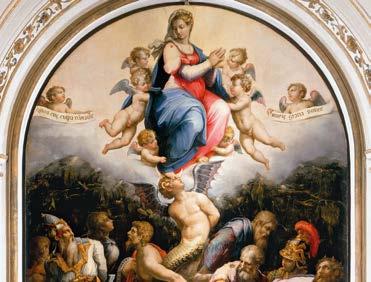
VASARI. THE THEATRE OF VIRTUES
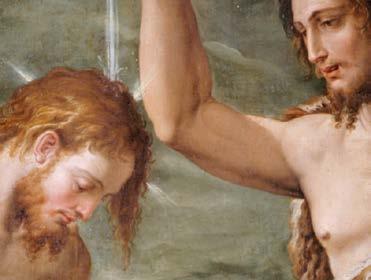
SI È MANGIATO ALTRO
CHE PANE E MESSER GIORGIO
Critical reception and new research on the Peducci Banner
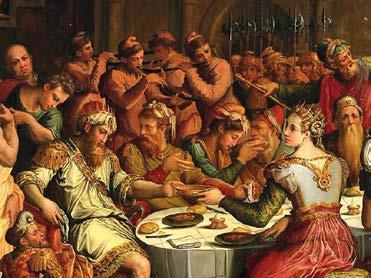
ALCUNA COSA FUOR
DELL’USO COMUNE
The banquet for the wedding of Esther and Ahasuerus by Giorgio Vasari
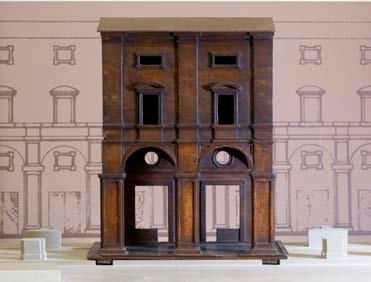
HONORATA E GRATIOSA
The Loggia of Giorgio Vasari

BUILDING A SELF-IMAGE
Giorgio Vasari through his papers

... MI POSI ALL’OREFICE HOMAGE TO VASARI
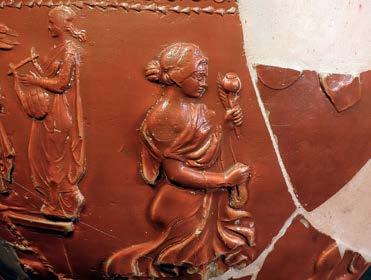
THE VASARI ‘VASAI’ and the Arezzo ceramic production in ancient times

IL DISEGNO FU LO IMITARE IL PIÙ BELLO DELLA NATURA
The house, the drawings, the ideas: Vasari and the fgure of the intellectual architect
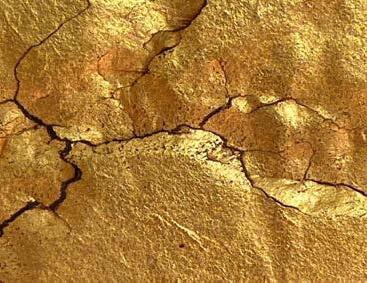
GOLD. TREASURE, BEAUTY, LIGHT, LIFE
Filippo Rossi Solo Exhibition
THE VASARI HOUSE MUSEUM CAN BE SEEN AS THE SETTING AND THE MANIFESTO OF THIS MULTIFACETED PAINTER, ARCHITECT AND WRITER. IT ALSO OFFERS A VERY POWERFUL VISUAL REPRESENTATION OF ALLEGORY, A FAVOURITE THEME
ARTISTS
archive of the Fraternità dei Laici exhibits a wooden model of the Logge of Piazza Grande, an urban project of great importance, along with equally important documents such as Vasari’s baptism certifcate and a copy of his will signed in front of a notary on 25 May 1568. On display, there are also documents relating to the monumental painting depicting the Banquet for the wedding of Esther and Ahasuerus, preserved in the National Museum of Medieval and Modern Art. They provide valuable information about the origin of this artwork, the preparatory drawings and some ornamental objects that can be related to the artistic scene that was developing within the artist’s ‘workshop’.
The Vasari House Museum can be seen as the setting and the manifesto of this multifaceted painter, architect and writer. It also offers a very powerful visual representation of allegory, a favourite theme of Mannerist artists. With this premise, the exhibition highlights through many relevant drawings and sculptures two main aspects of Vasari’s identity: his intellectual nature and the dialogue between architecture and painting. Starting from the canvas painted in 1549 for the Compagnia di San Giovanni, the exhibition, set up in the Diocesan Museum of Sacred Art, celebrates the iconographic fortune of sacred furnishings through documents and comparison with the other canvases preserved in the Abbey of St Flora and Lucilla, purposely restored for this occasion. In the State Archive, instead, there are the famous Pa-
archivio della Fraternita dei Laici espone il modellino in legno delle Logge di piazza Grande, intervento urbanistico di grande rilievo, insieme a documenti altrettanto importanti come l’atto di battesimo di Vasari e la copia del testamento rogato il 25 maggio 1568. In relazione al monumentale dipinto rafgurante il Convito per le nozze di Ester e Assuero, conservato nel Museo Nazionale d’Arte Medievale e Moderna, vengono esposti i documenti che attestano la genesi dell’opera, i disegni preparatori e alcuni oggetti ornamentali riferibili al contesto di gusto entro il quale si veniva formando il ‘laboratorio’ estetico dell’artista.
La Casa Vasari, letta quale scenario e manifesto di una poliedrica fgura di pittore, architetto e scrittore, è già di per sé una potentissima narrazione visuale anche del tema dell’allegoria, prediletta dalla cultura manierista. Da questo presupposto, la mostra, arricchita da disegni e sculture di riferimento, dà dunque risalto a due principali aspetti dell’identità vasariana: l’artista intellettuale e la dialettica fra architettura e opera pittorica. Partendo dallo stendardo dipinto nel 1549 per la Compagnia di San Giovanni la mostra, allestita nel Museo diocesano di Arte Sacra, illustra la fortuna iconografca dell’arredo sacro attraverso i documenti d’archivio e il confronto con le tele conservate nella Badia delle Sante Flora e Lucilla, appositamente restaurate. Mentre all’Archivio di Stato si espongono le celebri Carte relative alla famiglia insieme alla nutrita corrispondenza
ALSO
pers on display relating to the Medici along with the extensive correspondence with Michelangelo and Grand Duke Cosimo I: an unmissable opportunity to admire documents that are included in a collection of inestimable historic value and importance. This tour of the city culminates with the exhibition set up in the Municipal Gallery of Contemporary Art and in the church of Sant’Ignazio, named Vasari. The Theatre of Virtues. Thanks to loans from other national and international museums - following the theme of profane and sacred allegoryartworks by Giorgio Vasari, including monumental ones, are on display along with others by contemporary and similar artists in a series which enables us to defne the full profle of the artist beyond his infuence in the territory of Arezzo. An acute interpreter of the spirit of the time but also a remarkable innovator. In his paintings Vasari made large use of allegory - hence the title of the exhibition - adapting his art to a practice very common in the 16th century both in literature and visual arts, where the most varied objects, attributed to the most singular personifcations, created an artistic language of high symbolism. Vasari was one of the protagonists of this evocative enhancement of the semantic meaning painting, leaving a vast heritage of inventions which would contribute to the glory of Duke Cosimo I. He was his protector and passionate patron, aware of having at his service an extraordinary art director and a perfect interpreter of his own cultural and political power.
con Michelangelo e con il granduca Cosimo I: occasione straordinaria per ammirare i documenti di un nucleo documentale di inestimabile valore.
Questo itinerario attraverso la città culmina nella mostra, allestita nella Galleria d’Arte Moderna e Contemporanea e nella chiesa di sant’Ignazio, intitolata Vasari. Il teatro delle Virtù, che avvalendosi di prestiti nazionali ed internazionali espone - seguendo il tema dell’allegoria profana e sacra - opere di Giorgio Vasari, anche monumentali, afancate da altre di artisti contemporanei ed afni in una sequenza che consente di completare il proflo dell’artista oltre il perimetro del territorio aretino.
Sensibile interprete dell’aria del tempo e insieme autore di notevoli innovazioni, in pittura Vasari pratica tenacemente il ricorso all’allegoria - da qui il titolo scelto per la mostra - adeguando la propria arte ad una pratica ricorrente nel Cinquecento sia nelle creazioni letterarie, sia nell’espressione visiva dove i più svariati oggetti, attribuiti alle più singolari personifcazioni, vanno a costituire un vocabolario ad alta intensità simbolica. Di questo suggestivo potenziamento semantico della pittura Vasari è attivo protagonista, mettendo uno sterminato patrimonio di invenzioni al servizio della gloria del duca Cosimo I, suo protettore e appassionato committente consapevole di avere al suo servizio uno straordinario regista dell’immagine e un perfetto interprete della propria potenza culturale e politica.
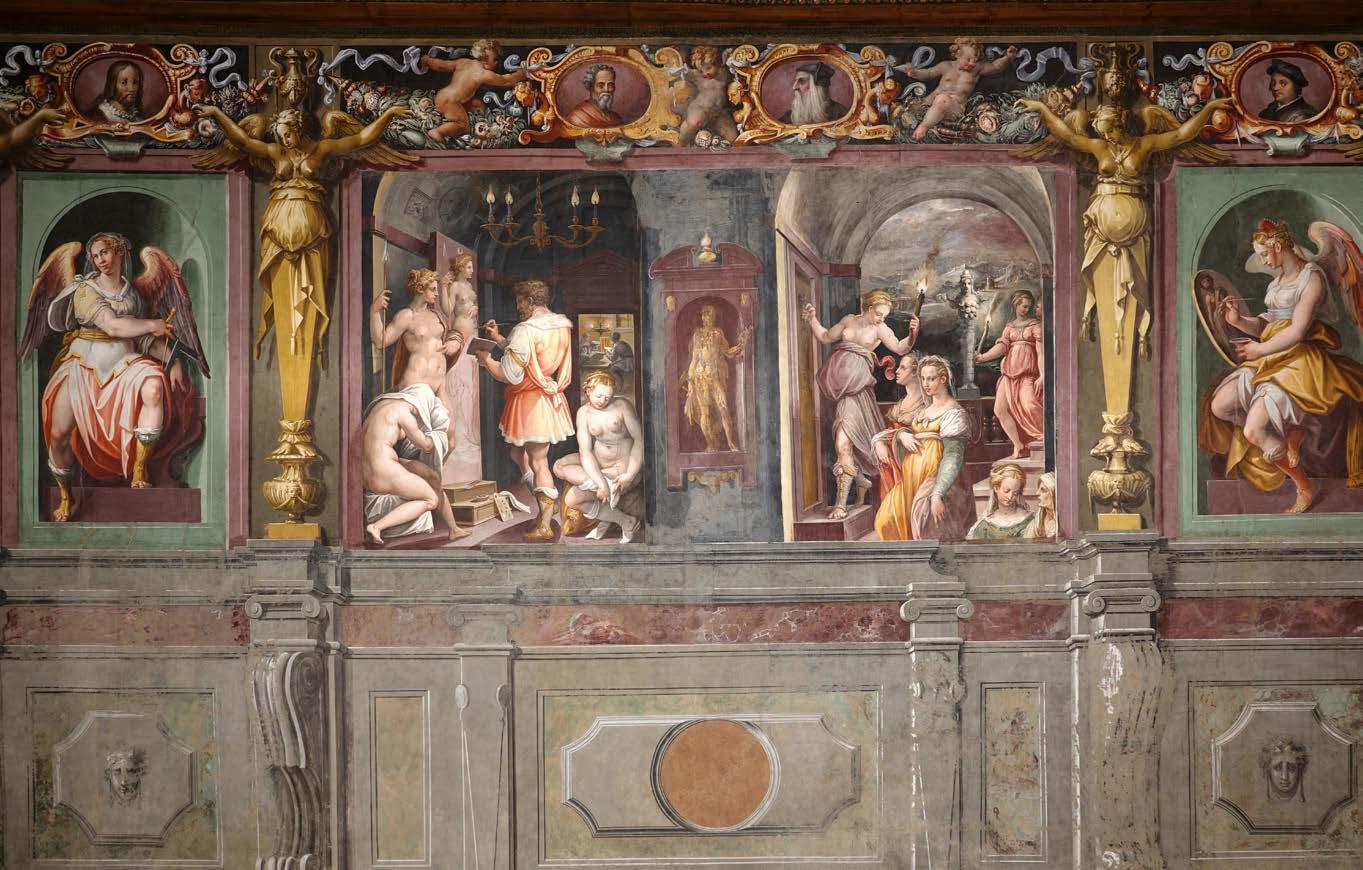
Fondazione Horne celebrates Giorgio Vasari
1574-2024
On the 450th anniversary of his death, Fondazione Horne celebrates the artist and writer with a series of special events and cultural activities running until December 2024. At the centre of the numerous events for families, adults and children is the Florentine palazzo that was the artist’s home in his later years: Casa Vasari, located in the Santa Croce quarter in the heart of Florence’s historic centre. The building was given to Vasari by Cosimo I de’ Medici, and contains the beautifully preserved Sala Grande, a magnifcent hall with frescoes depicting scenes from Pliny’s Naturalis Historia, revealing the artistic philosophy of the author of the acclaimed Lives and founder of the prestigious Accademia delle Arti del Disegno. Between 2009 and 2011 the Sala Grande underwent a complex restoration process funded by the Fondazione CR Firenze and supervised and coordinated by Fondazione Horne, with the goal of executing a project strongly endorsed by the late great art historian Umberto Baldini. Today the hall is open to the public thanks to a twenty-year agreement between the building’s owners and Fondazione Horne, which is responsible for its upkeep and promotion.

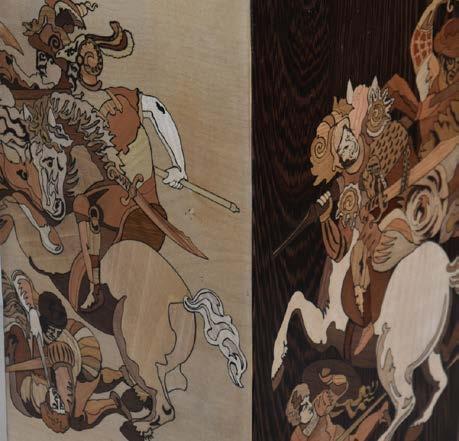
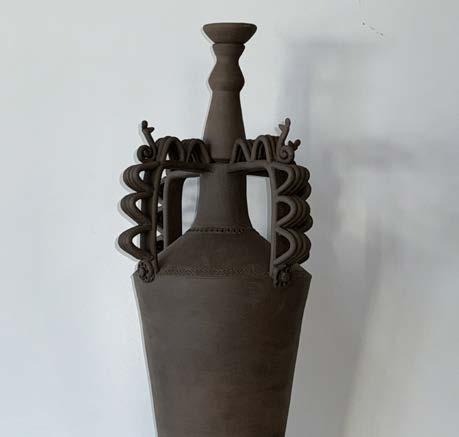
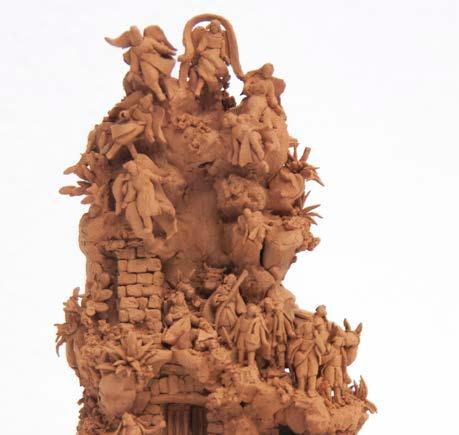
The theme of this third edition of the award takes inspiration from the fascinating world of the Grand Tour and its designer souvenirs. The 10 fnalist works (on this page) are on display during the Florentine event Artigianato e Palazzo 1 4 7 10 5 8 3 6 9 2
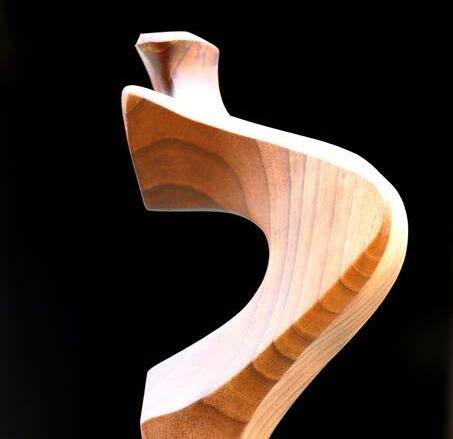
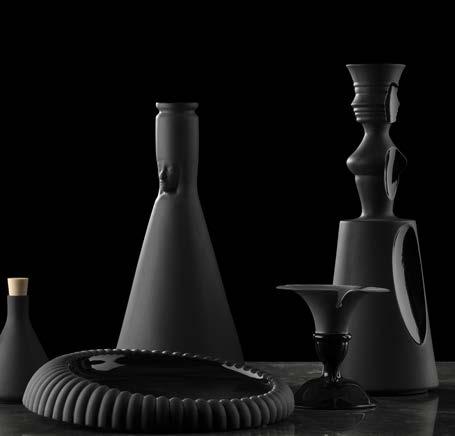

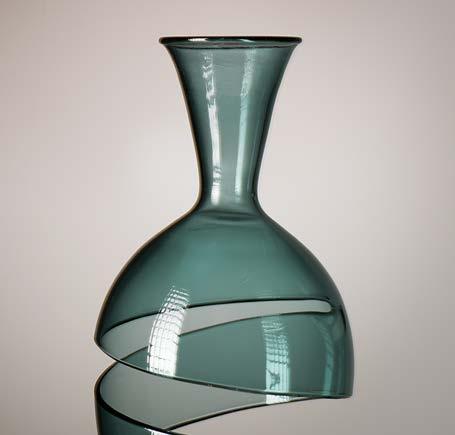
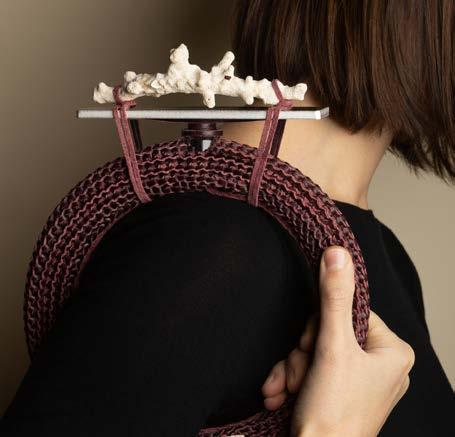
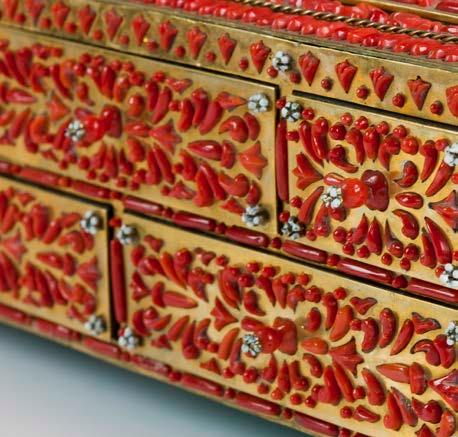
1.
2.
3.
4.
5.
6.
7.
8.
9.
SOUVENIRS OF THE GRAND TOUR. THE THIRD EDITION OF THE LA GRANDE BELLEZZA AWARD
PICCOLI GIOIELLI.
SOUVENIR DEL GRAND TOUR. LA TERZA EDIZIONE
DEL PREMIO LA GRANDE BELLEZZA
The fascinating world of the Grand Tour and its designer souvenirs is the inspiration for the third edition of the bi-annual La Grande Bellezza - The Dream Factory award, a project organised by Starhotels in collaboration with Fondazione Cologni dei Mestieri d’Arte, OMA - Osservatorio dei Mestieri d’Arte and Gruppo Editoriale. The 10 fnalists will be among the participants of Artigianato e Palazzo (13-15 September in Florence’s Corsini Gardens), with a special exhibition and the announcement of the winner, chosen by a panel of prestigious experts. These are works of exquisite craftsmanship that interpret the theme of Grand Tour Souvenirs with a combination of tradition and contemporary style. Amphora by Cecilia Rinaldi speaks of the Roman era but with an unexpected slant, while Ancient Rome meets Ancient Greece in Archetypes, from Poseidonia to Paestum by Bhumi Ceramica; Doriana Usai’s La consapevolezza takes us to the land of the Nuraghe in Sardinia, the island that is also the birthplace of the Gedda vase by Walter Usai; next we move to Venezia, which lends its name to the work of Marcello Chiarenza and is also home to Elia Toffolo, creator of the deconstructed Etereo single-fower vase, and Saverio Pastor’s Forcola da passeggio; and then to Trapani for Il Gioiello Portagioie by RossoCorallo di Rosadea e Platimiro Fiorenza; Lilliput Sorrentina. Il presepe napoletano in una mano is a wonderful new piece by Marcello Aversa, while Mastro Santi Del Sere depicts the historic Battaglia di Anghiari. A journey among the wonders of Italy and the beauty that made it one of the most popular destinations on the legendary Grand Tour.
Ha preso spunto dall’affascinante mondo del Grand Tour e dei suoi souvenir d’autore la terza edizione del Premio biennale La Grande Bellezza - The Dream Factory, progetto di Starhotels in collaborazione con Fondazione Cologni dei Mestieri d’Arte, OMA - Osservatorio dei Mestieri d’Arte e Gruppo Editoriale. I 10 fnalisti sono tra i protagonisti di Artigianato e Palazzo (dal 13 al 15 settembre nel Giardino di Palazzo Corsini di Firenze), con una speciale mostra e la proclamazione del vincitore, scelto da una giuria ricca di nomi prestigiosi. Opere di alto artigianato che hanno saputo interpretare il tema Souvenir del Grand Tour tra tradizione e gusto contemporaneo. Racconta dell’epoca romana ma con un design sorprendente Amphora di Cecilia Rinaldi, l’antica Roma incontra poi l’antica Grecia con Archetipi, da Poseidonia a Paestum di Bhumi Ceramica, mentre La consapevolezza di Doriana Usai ci porta nella terra dei Nuraghe, in Sardegna, da dove arriva anche il vaso Gedda di Walter Usai; andiamo poi a Venezia, che dà il nome all’opera di Marcello Chiarenza, ma anche con Etereo, il vaso monofore destrutturato di Elia Toffolo, e la Forcola da passeggio di Saverio Pastor, e a Trapani con Il Gioiello Portagioie di RossoCorallo di Rosadea e Platimiro Fiorenza; Lilliput Sorrentina. Il presepe napoletano in una mano è un nuovo capolavoro di Marcello Aversa, mentre Mastro Santi Del Sere ci racconta la storica Battaglia di Anghiari Un viaggio nella bellezza dell’Italia, la stessa che la rese una delle mete più ambite del leggendario Grand Tour.
CREATIONS THAT TELL OF TRADITIONAL CRAFTS AND WHERE THEY COME FROM
CREAZIONI CHE RACCONTANO TRADIZIONI E I LORO TERRITORI
CULT OBJECT
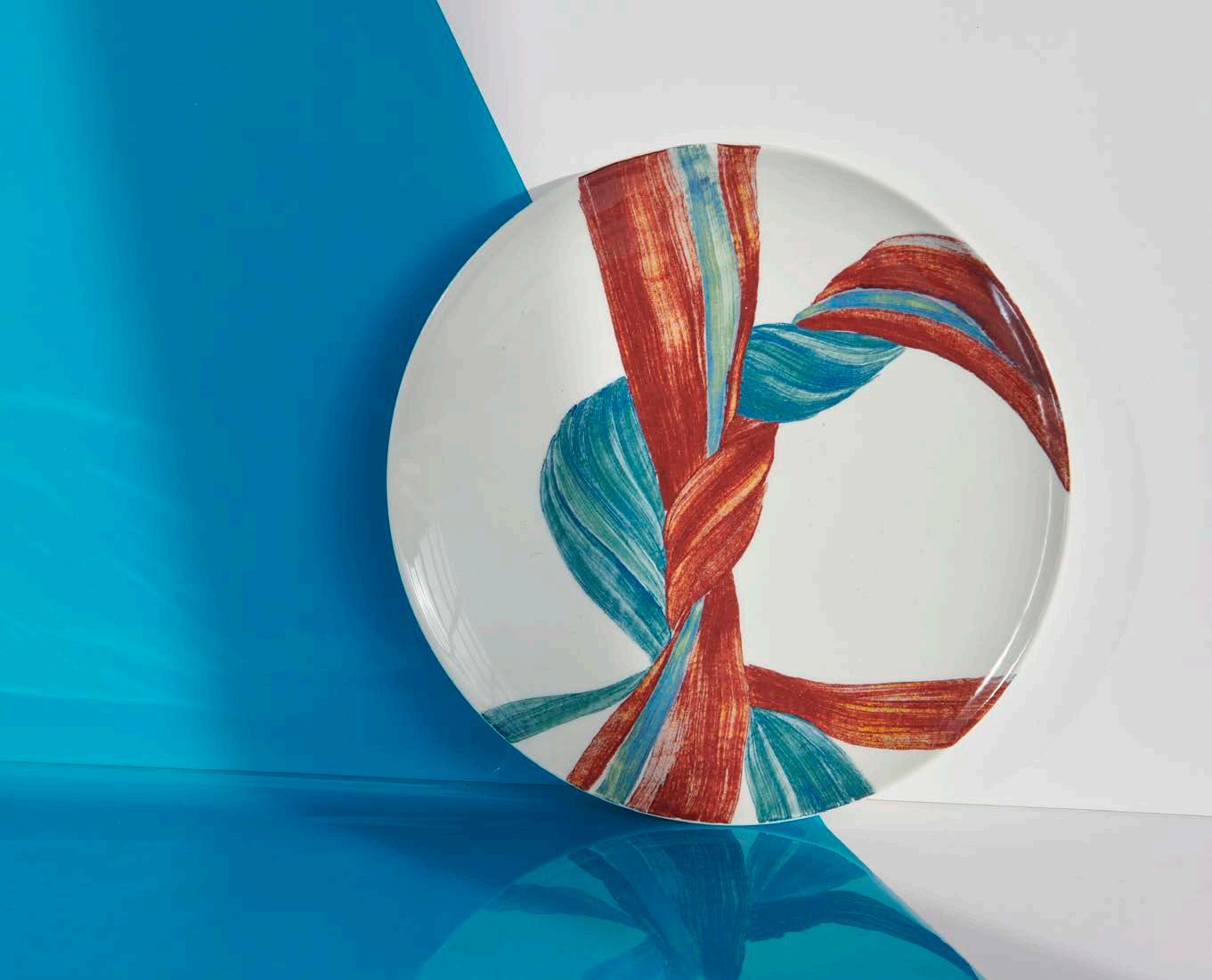
“As skilled artisans of destiny, we learn to weave knots and entanglements that go beyond mere physicality, carrying with them deep and symbolic meanings”. This is the message of Legami, a collection of white porcelain plates inspired by the theme of intertwining and knots, produced and decorated entirely by hand by Laboratorio Paravicini. Exquisite white majolica, turned and fnished one piece at a time using print or mixed techniques. For over thirty years continuous creative research and obsessive attention to every detail make Laboratorio Paravicini of Milan a unique place, both for its meticulous research and experimentation and for its innate ability to evolve over time.
“Come abili artigiani del destino, impariamo a tessere nodi e intrecci che vanno oltre la mera fsicità, portano con sé signifcati profondi e simbolici”. Questo vuole essere il messaggio di Legami, la collezione di piatti in terracotta bianca ispirati ai temi dell’intreccio e dei nodi che il Laboratorio Paravicini produce e decora interamente a mano. Pregiata maiolica bianca, tornita e rifnita pezzo per pezzo, con tecnica mista o stampa. Da oltre trent’anni la costante ricerca creativa e l’attenzione maniacale ad ogni dettaglio della produzione fanno del Laboratorio Paravicini di Milano un luogo unico per l’accurato processo di ricerca e sperimentazione e per l’innata capacità di evolvere nel tempo.


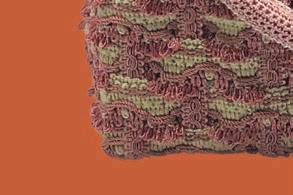




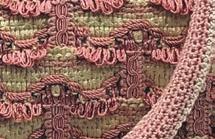




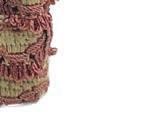
Anna is a timeless handbag. Its texture is inspired by antique passementerie elements, joined together by means of a braiding technique that’s characteristic of Borgo Solaio.
Trims are made in very fne crochet, clearly evident on the handle of the bag, which varies depending on its type, hand or shoulder.
Borgo Solaio is a small artisan company launched in Pietrasanta (province of Lucca) in 2016 by designer and maker Sabrina Mattei. Her work draws inspiration from Tuscan and its history of art and craftsmanship, and reuse, recycling and sustainability are its distinctive traits.
Anna è una borsa senza tempo. La sua texture prende vita da antiche passamanerie, unite da un intreccio, tecnica privilegiata da Borgo Solaio.
Le rifniture invece sono realizzate all’uncinetto, con una lavorazione molto fne, come ben evidenziato dal manico della borsa, che ne defnisce anche il tipo di modello, a mano e a spalla.
Borgo Solaio è una piccola realtà artigiana nata a Pietrasanta (provincia di Lucca) nel 2016, da un’idea di Sabrina Mattei. Si tratta di un progetto che trae ispirazione dalla Toscana, dalla sua storia artistica e artigianale, e che ha fatto del recupero e della sostenibilità il suo tratto distintivo.
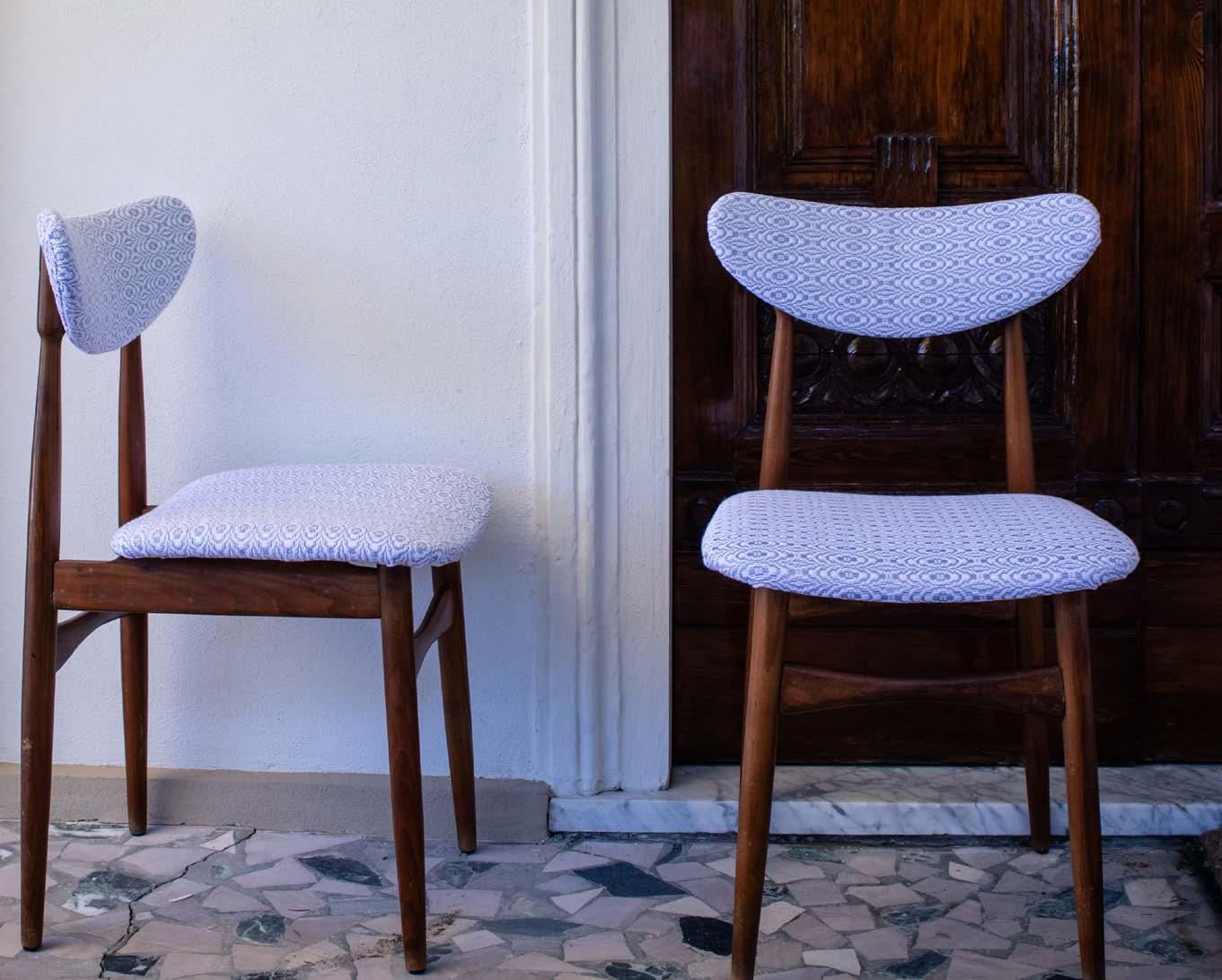
Casa Colleoni Collection was born in Tuscany - in the attic of a historic house in Forte dei Marmi, in the heart of Versilia, to be precise - thanks to an idea by Simona Pierotti, an architect by training and an expert weaver by vocation. Opened in 2017, her atelier produces entirely hand-made items for the home and the person. Simona is particularly interested in upcycling, giving a second life to any tailors’ offcuts, which are transformed on her loom into rugs, bags or embellishments for furniture or clothing. The structure of the Primula chair is made from old chair frames, which are dismantled, cleaned and re-upholstered with folk-themed fabrics.
Casa Colleoni Collection nasce in Toscana, in un sottotetto di una storica casa di Forte dei Marmi, nel cuore della Versilia, da un’idea di Simona Pierotti, di formazione architetto e esperta tessitrice. L’atelier, nato nel 2017, offre prodotti interamente realizzati a mano per la casa e la persona. L’artigiana è particolarmente attenta ai temi dell’up-cycling e dà una seconda vita a qualunque tessuto risultante da tagli di sartoria che viene trasformato per creare al telaio tappeti per la casa, borse o intarsi da applicare nell’arredo e nell’abbigliamento. La sedia Primula deriva da strutture di vecchie sedie smontate, ripulite e ritappezzate con tessuti a tema popolare.
CULT OBJECT
jewels/sculptures
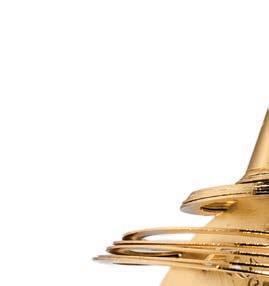
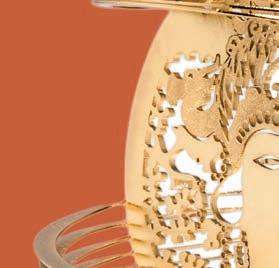
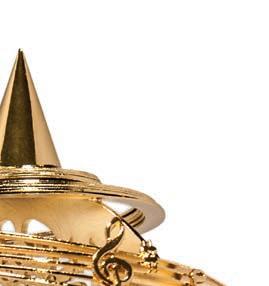


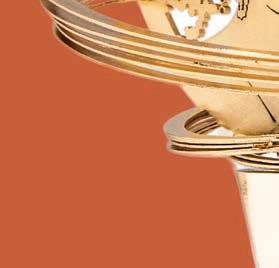





Giordano Pini | Pistoia
The sculpture is inspired by the 100th anniversary of the death of great Tuscan composer Giacomo Puccini, and presents the frst notes of Nessun Dorma as initials on the stave and the manifesto created by the painter Galileo Chini for the frst posthumous performance of Turandot, one of the most important masterpieces in opera history. Jeweller Giordano Pini, the undisputed master of lost-wax casting, repoussé, precision chiselling and mounting, observes and translates natural phenomena in his Pistoia workshop, combining metal with soft, enveloping shapes to create genuine sculptural jewellery that’s irresistibly alluring.
La scultura è ispirata ai cento anni dalla morte del grande compositore toscano Giacomo Puccini e presenta fedelmente le prime note del Nessun Dorma quali iniziali del pentagramma e il manifesto che il pittore Galileo Chini realizzò per la prima rappresentazione postuma di Turandot, uno dei più importanti capolavori della storia dell’Opera.
L’orafo Giordano Pini, maestro indiscusso della fusione a cera persa, di sbalzo, cesello e incastonatura, nel suo laboratorio a Pistoia osserva e traduce i fenomeni naturali combinando il metallo con forme morbide e avvolgenti creando delle vere e proprie sculture gioiello ricche di fascino.


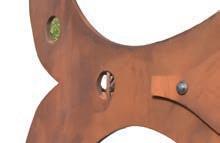
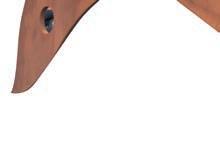






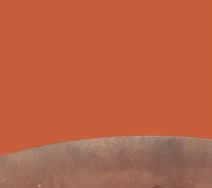
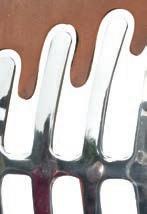
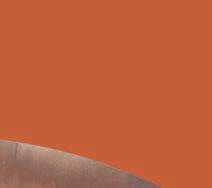



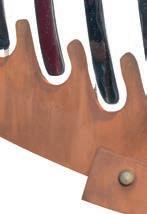





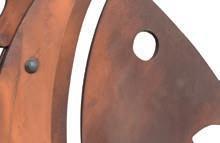

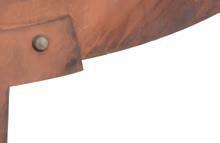

The corten steel sculpture commissioned from Quochi in 2023 by the Rosignano Marittimo municipality arises from memories of the Fish Festival that takes place every summer in Caletta di Castiglioncello. The inspiration is the seas. Their stainless steel bones highlight their construction and the studs that hold the metal sheets together. The 48 spheres scattered over the roundabout where the sculpture stands represent all the previous editions of the festival. Filippo Quochi is a master blacksmith and a descendant of a well-known family of metalworkers in Gabbro, in the province of Rosignano Marittimo. His workshop in Livorno is an important landmark for wrought iron products.
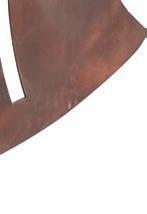




La scultura in acciaio corten e inox commissionata all’artigiano nel 2023 dal Comune di Rosignano Marittimo è nata nel ricordo della festa del pesce che ogni anno nel periodo estivo si tiene a Caletta di Castiglioncello. L’ispirazione viene dal mare. La lisca in acciaio inox risalta la lavorazione e i chiodi le lastre di acciaio. Le 48 sfere installate nel rondò rappresentano tutte le edizioni della festa. Filippo Quochi è maestro artigiano, discendente di una importante famiglia di fabbri di Gabbro, in provincia di Rosignano Marittimo, e la sua bottega a Livorno è un importante punto di riferimento per la lavorazione del ferro battuto.
CULT OBJECT paper/restoration

Since 1996, the paper and membrane restoration workshop led by Silvia Gazzina has specialised in prints, drawings and paintings on paper and parchment. The main approach is conservative restoration using reversible processes and materials, taking into account the nature of the piece without modifying its function. The workshop also creates faithful reproductions of antique bindings, and performs restorations of original bindings, wet and dry cleaning interventions and a range of stitching and binding techniques on antique and modern books. A. Persii Flacci satyrae sec. XIV is a handwritten parchment volume with red illuminated initials, belonging to the Biblioteca Guarnacci Archivio Storico Comunale of Volterra.
Dal 1996 il laboratorio di restauro materiali cartacei e membranacei diretto da Silvia Gazzina è specializzato in stampe, disegni, dipinti su carta e pergamene. L’approccio principale è quello del restauro conservativo, con interventi e materiali reversibili, tenendo conto della natura dell’opera senza modifcarne la funzione. Il laboratorio realizza anche fedeli riproduzioni di legature antiche ed esegue recuperi di legature originali, operazioni di pulitura a secco e per via umida, diverse tecniche di cucitura e legatura di libri antichi e moderni. A. Persii Flacci satyrae sec. XIV è il volume in pergamena manoscritto con capilettera in rosso, appartenente alla Biblioteca Guarnacci Archivio Storico Comunale di Volterra.
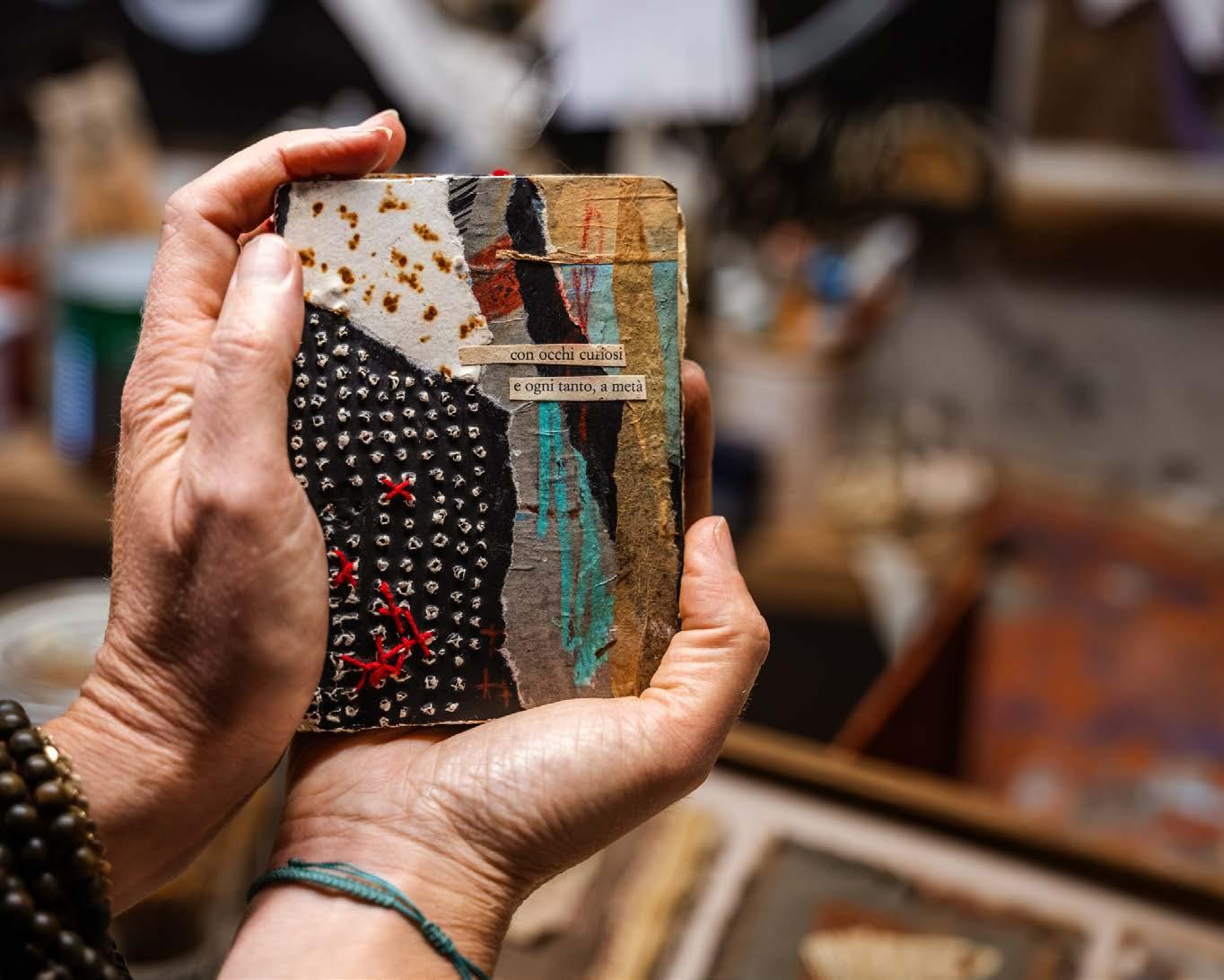
“I collect, assemble and cut out... I write imaginary journals using alphabets embellished with the rust of all the life events I’ve experienced. I sew, mend and embroider my story in an honest attempt to give back some of the beauty I’ve received along the way”. With her artist’s diary and mixed technique collage, Carlotta Parisi has returned to her artistic journey after a lengthy pause, with an intense dialogue with nature, where she has retreated to continue her work. Her self-production of natural colours using Siena soil and plants, and the juxtaposition of natural elements, rusted objects, paper, fabric, threads and words form the leitmotif of her passionate artistic storytelling.
“Raccolgo, assemblo, ritaglio… scrivo diari immaginari con alfabeti che la ruggine arricchisce di tutta la Vita che mi è passata sopra. Cucio, rammendo e ricamo la mia storia nel sincero tentativo di restituire parte della Bellezza ricevuta in dono”. Con il diario d’artista e il collage in tecnica mista, Carlotta Parisi ha ripreso il suo cammino artistico dopo una importante pausa, con una ricerca intima fatta di intenso dialogo con la Natura in cui si è ritirata a lavorare. L’autoproduzione di colori naturali a partire dal Terra di Siena e le sovrapposizioni di elementi naturali, oggetti arrugginiti, carte, stoffe, fli e parole sono il leitmotiv della sua appassionata narrazione artistica.
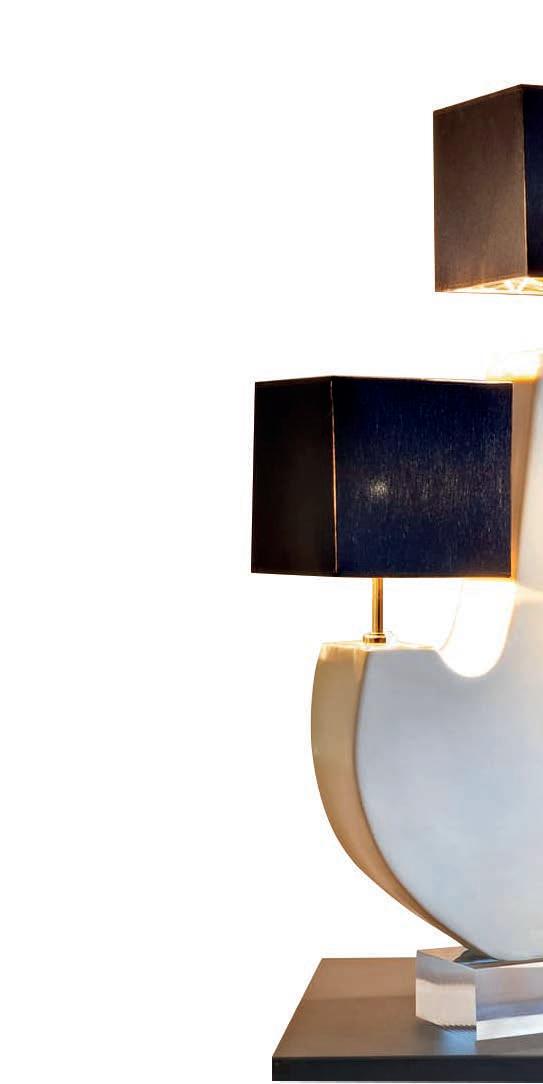

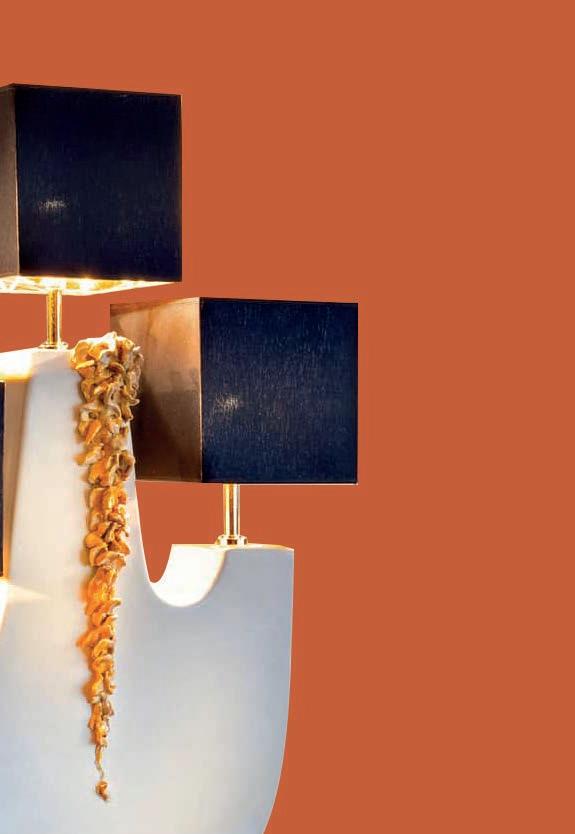




Giuliana Collu’s artistic inspiration comes from the archaic signs and symbols of Sardinia, from the colours of the sea, the textures of the land and nature. Her creations often take an irregular form, shaped by instinct or sought in geometry. Her artistic ceramics workshop is located in Selargius, a stone’s throw from Cagliari; here she creates her artefacts using paper patterns, just like those used in dressmaking. The central body of her ceramic table lamp is minimalist in style and made in robust earthenware with relief details, and rests on a transparent plexiglass base. It is hand-made in earthenware using the slab-building technique, and without the use of moulds.

La ricerca nei manufatti di Giuliana Collu trova ispirazione nei segni e simboli arcaici della Sardegna, nei colori del mare, nelle texture della terra e della natura. Le sue opere si presentano spesso di forma irregolare, plasmate d’istinto o ricercate nella geometria. Il suo laboratorio di ceramica artistica è a Selargius, a pochi minuti da Cagliari dove plasma a mano i manufatti sviluppati attraverso cartamodelli, proprio come in un lavoro sartoriale. La forma centrale della lampada in ceramica è minimale, realizzata in terraglia forte, con dettagli a rilievo e poggia su un parallelepipedo in plexiglas. È realizzata a mano con l’argilla terraglia forte con la tecnica a lastra, senza l’uso di stampi.
Iitalia-sumisura.it is the portal to embark on a digital journey to discover Italy’s artisanal excellence. A project by OMA - Osservatorio dei Mestieri d’Arte, Fondazione Cologni dei Mestieri d’Arte and Gruppo Editoriale publishing house, which aims to be a permanent observatory on the best workshops and ateliers that carry forward the great heritage of arts and crafts.
italia-sumisura.it è il portale per intraprendere un viaggio digitale alla scoperta delle eccellenze artigiane d’Italia. Un progetto di OMA - Osservatorio dei Mestieri d’Arte, Fondazione Cologni dei Mestieri d’Arte e la casa editrice Gruppo Editoriale, che vuol essere un osservatorio permanente sulle migliori botteghe e i migliori atelier che portano avanti il grande patrimonio dei mestieri d’arte.
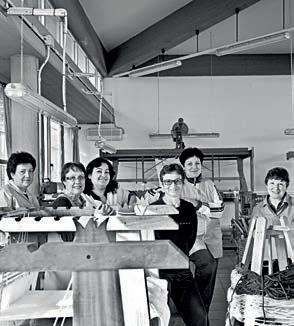
Mogoro (OR)
SU TROBASCIU
Textiles
The traditional textile arts of the women of Mogoro are brought back to life here. From trousseau fabrics for everyday use, such as tablecloths and bedcovers, to artistic items such as tapestries.
Rivive qui la tradizione, tutta al femminile, dell’arte tessile tipica di Mogoro. Dai tessuti di corredo di uso quotidiano, come tovagliati e coperte, a quelli più artistici, come gli arazzi.

Perugia
OZONA OCCHIALI
Eyewear
The Ozona brand produces tailored eyewear in a workshop and boutique opened by Sandro Gonnella in 2006, drawing on his many years of experience working with prestigious eyewear brands.
Sono occhiali sartoriali quelli del brand Ozona, prodotti nel laboratorioboutique aperto da Sandro Gonnella nel 2006, dopo lunga esperienza con grandi marchi.

Bows
One of Italy’s great master bow-makers, now a rarity. Since 1983 he has been creating bows for the violins, violas, cellos and double basses of both amateurs and well-known professional musicians.
Uno degli oramai rari maestri archettai d’Italia. Dal 1983 crea archetti su misura per violini, viole, violoncelli e contrabbassi, utilizzati sia da appassionati sia da noti musicisti.

Cavallino (LE)
Sculpture
A sculptor and designer capable of bringing lightness and softness to Lecce stone, combining innovation with skilful craftsmanship. His truly unique style is now recognised the world over.
Scultore e designer capace di dare leggerezza e morbidezza alla pietra leccese, unendo innovazione e sapienza artigiana. Uno stile inconfondibile riconosciuto ormai nel mondo.
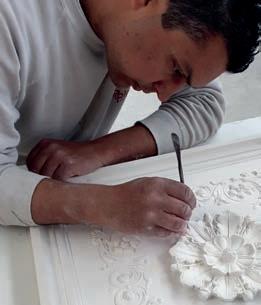
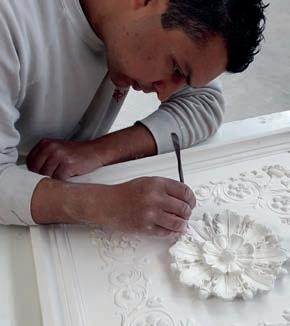
Caselle (PD)
PLASTEREGO
Decorations
Plaster interior decorations combining technical skill with artistic taste to produce innovative results, with all the uniqueness typical of a craftsman’s workshop.
Decorazioni d’interni in gesso che uniscono maestria tecnica e gusto artistico, per un risultato innovativo, ma che possiede ancora oggi l’unicità tipica della bottega artigiana.
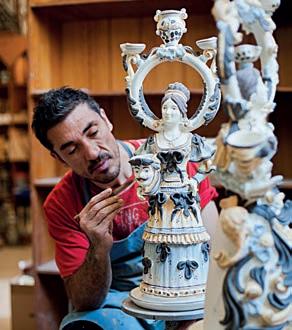
Caltagirone (CT)
Ceramic
Heir to Caltagirone’s ancient tradition of ceramics, he defines himself as a ‘curious experimenter’ in the visual arts. His works are appreciated by prominent critics and academics.
Erede dell’antica tradizione ceramica di Caltagirone, si defnisce un ‘curioso sperimentatore’ delle arti visive. Le sue opere sono apprezzate da importanti critici e studiosi.
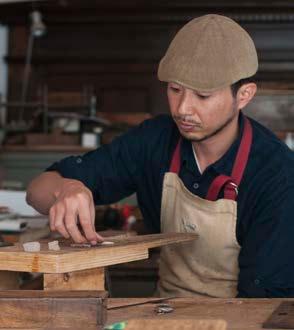


Takafumi Mochizuki, otherwise known as Zouganista (from zougan, Japanese for ‘inlay’), creates items of furniture with seductive lines, combining centuries-old Japanese traditions with Florentine art.
Takafumi Mochizuki, lo Zouganista (da zougan, ‘intarsio’ in giapponese), crea oggetti di arredo dalle linee seducenti, che uniscono millenarie tradizioni nipponiche e l’arte forentina.

For almost a century we have been able to watch the magic of wrought iron taking form, in a tradition carried on by Pierluigi, the founder’s grandson. Items of furniture both classic and modern.
È ormai da quasi un secolo che qui si può assistere alla magia del ferro battuto che prende forma. Oggi grazie a Pierluigi, nipote del fondatore. Oggetti d’arredo classici e moderni.
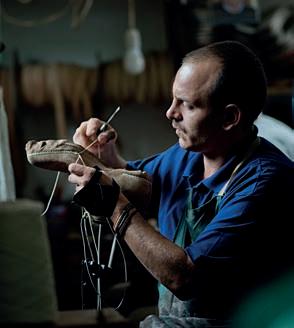
A Renaissance workshop, one of the few to have inherited the ancient Roman art of the micro-mosaic, reinterpreted in jewels with an ancient yet contemporary charm.
Un laboratorio rinascimentale tra i pochi depositare dell’arte del micromosaico romano, reinterpretato qui per dare vita a gioielli dal fascino antico e contemporaneo.
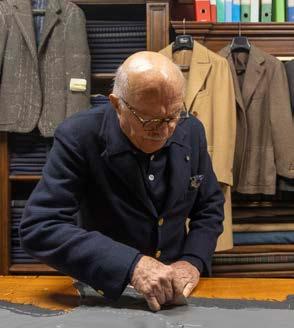
The workshop of Saverio Pastor, the doyen of Venetian forcole-makers, has been supplying Venetian gondoliers and rowers all over the world since 1981.
Damiano Chiappini comes from a shoemaking family and makes exclusive customised shoes of great class, comfortable and longlasting.
A master tailor with many experience, whose creations are characterised by soft lines and the perfect choice of fabrics, with all the casual elegance typical of Neapolitan style.
È il laboratorio di Saverio Pastor, il decano dei remeri veneziani, dal 1981 fornitore di fducia dei gondolieri e degli appassionati di voga alla veneta di tutto il mondo.
Maestro sarto di lunga esperienza, la morbidezza delle linee e l’accurata scelta del tessuto sono alla base delle sue creazioni, dall’eleganza disinvolta tipica dello stile napoletano. LE FÓRCOLE
Discende da una famiglia calzolaia, Damiano Chiappini realizza calzature esclusive e personalizzate, di classe, ma allo stesso tempo comode e durature nel tempo.
THE CHEESES AND CURED MEATS OF PIER PAOLO PIAGNERI, THE ARTISAN OF FINE FOODS IN LUNIGIANA
CIRCOLO VIRTUOSO.
by Davide Paolini
Lunigiana, known as the land in the middle (between Tuscany and Liguria) is a lesser-known territory which offers an extensive variety of local products: testaroli, panigacci, Treschietto onions, marocca bread, chestnut four, Zeri lamb, vegetable savoury tart, spongata... These delicacies are more or less easy to fnd in the area, especially in the shops in Pontremoli, but it is certainly more difcult to fnd the cheeses and cured meats produced by Naturalmente Lunigiana, the farm of Pier Paolo Piagneri, a professional cheesemaker and charcutier from Gigliana, whose products you can only buy in the shop in Pala di Scorcetoli or at the market in Sarzana (every Saturday morning). The great thing about this artisan of fne foods is that he deals with the entire cycle of production as the milk and the meat used come from his farm in Gigliana. The production techniques are natural and follow traditional methods combined with the use of the most up-to-date technologies in terms of hygiene and sterilisation. Here, cheeses are made from cow’s milk, sheep’s milk (with different aged cheeses), cow’s milk mixed with buffalo milk, buffalo mozzarella, stracchino cheese, fresh goat’s milk cheese, yogurt and also butter is produced. He also adopts a circular approach to production for his cured meats, as the pigs are bred in his farm, using a free-range system. As a result, the quality of the Lunigiana lard salami, the sausages, the lard, la testa in cassetta is excellent. A traditional farm where of course, you can also fnd farmyard animals (chickens, rabbit) ready for cooking.
La Lunigiana, defnita terra di mezzo (fra Toscana e Liguria) è un territorio poco conosciuto, a livello gastronomico ma ricco di prodotti: testaroli, panigacci, cipolla di Treschietto, marocca di Casola, farina di castagno, agnello di Zeri, torta di erbi, spongata… Queste ‘chicche’ sono più o meno fruibili nel territorio, soprattutto nei negozi di Pontremoli, ma più difcile è trovare i formaggi e i salumi di Naturalmente Lunigiana di Pier Paolo Piagneri, un colto casaro-salumiere di Gigliana, la fattoria dove produce i suoi giacimenti, che si possono acquistare solo nel punto vendita di Pala di Scorcetoli o al mercato di Sarzana (ogni sabato mattina)
Il grande plus di questo artigiano del gusto è il ciclo completo perché il latte e le carni provengono tutte dalla sua fattoria di Gigliana: le tecniche di produzione sono naturali, riprese dalla tradizione con le tecnologie più aggiornate, in fatto di igiene e sterilizzazione. Qui vengono prodotti formaggi di latte di mucca, di pecora (con diverse stagionature), di latte di mucca mescolato con quello di bufala, mozzarella di bufala, lo stracchino, il caprino fresco, lo yogurt e anche il burro. Anche i salumi sono di produzione circolare, perché i maiali sono allevati in fattoria, allo stato brado; di conseguenza la qualità del salame lardellato della Lunigiana, le salsicce, il lardo, la testa in cassetta, è di eccellenza. Una fattoria d’antan, dove ovviamente, ci sono pure gli animali di cortile (polli, conigli) pronti per la cucina.
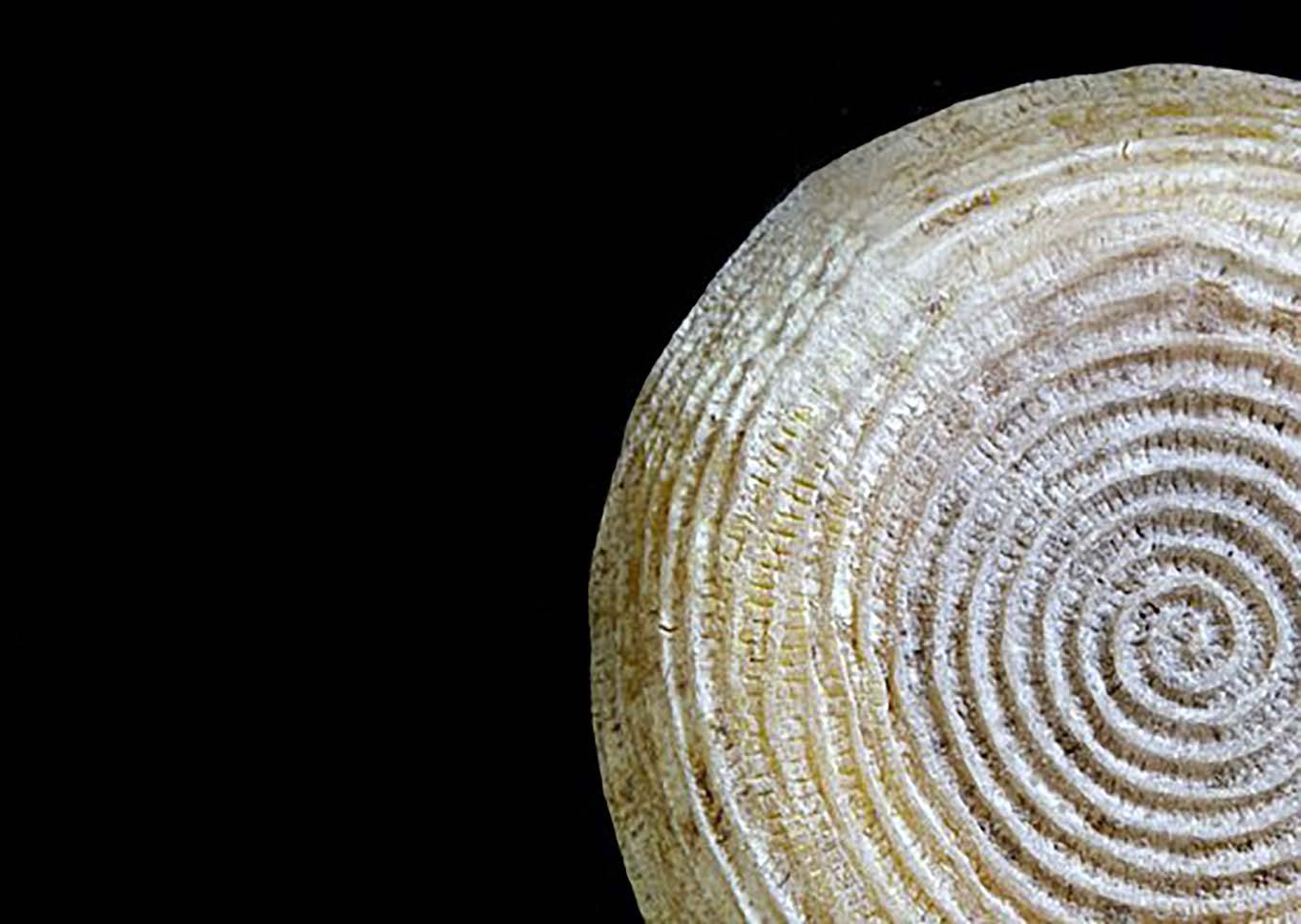
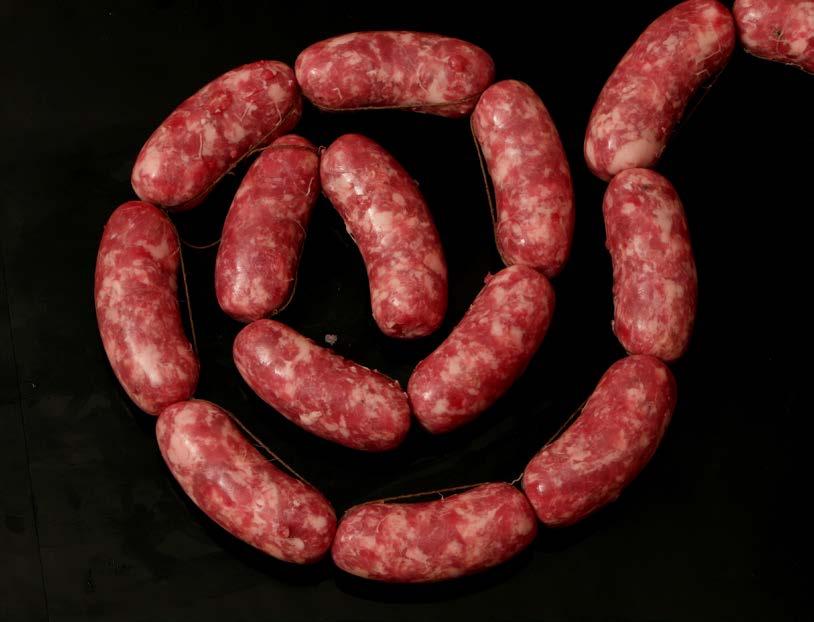
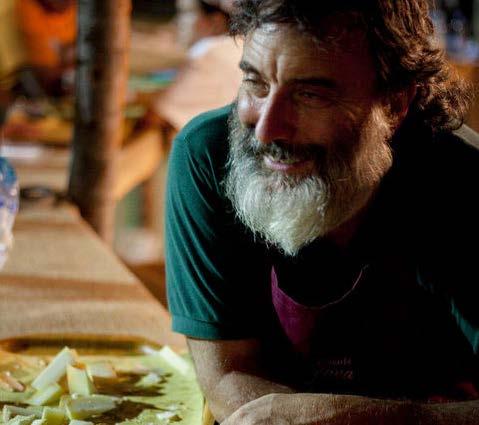
Naturalmente Lunigiana is the farm of Pier
a professional
and
from
Natural techniques and traditional method









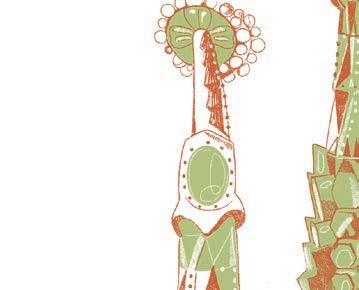
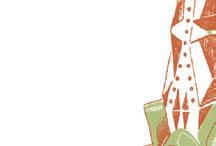







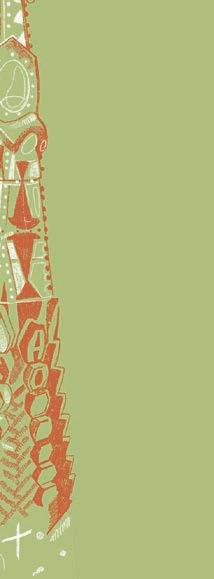

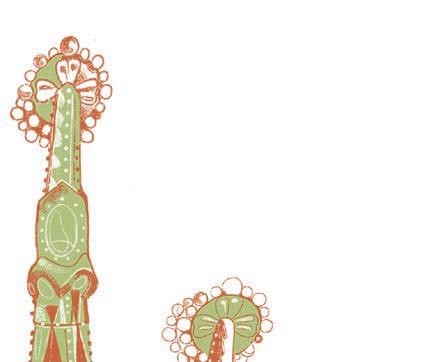
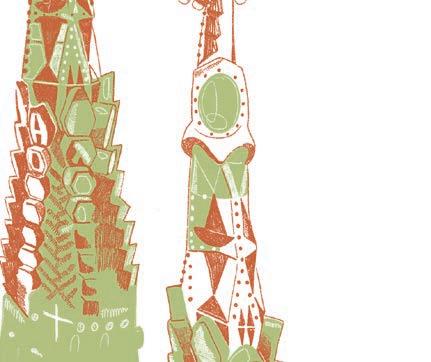






It is perhaps the architectural work with the most troubled history of all time, but it seems that (finally) the Sagrada Familia will be completed in 2026, the centenary year of the death of its creator, Antoni Gaudí. What few people know is that the coloured enamels used in this incredible project come from Italy, from Orsoni Venezia 1888 to be precise. It was in 1889, during the historic Universal Exhibition in Paris, when Gaudí came across and fell in love with Angelo Orsoni’s multi-coloured panel, a sample of hundreds of shades of coloured enamels and golds. Thus began a collaboration that continues to this day.
È forse l’opera architettonica con la storia più travagliata di tutti i tempi, ma pare che (finalmente) la Sagrada Familia sarà completata, nel 2026, l’anno del centenario dalla morte del suo ideatore, Antoni Gaudí. Quello che in pochi sanno è che gli smalti colorati che vengono impiegati in questo incredibile progetto vengono dall’Italia, per la precisione da Orsoni Venezia 1888. Era il 1889, durante la storica Esposizione Universale di Parigi, quando Gaudì s’imbatté e si innamorò del pannello multicolore di Angelo Orsoni, un campionario di centinaia tonalità di smalti e ori colorati. Iniziò così una collaborazione che continua ancora oggi.






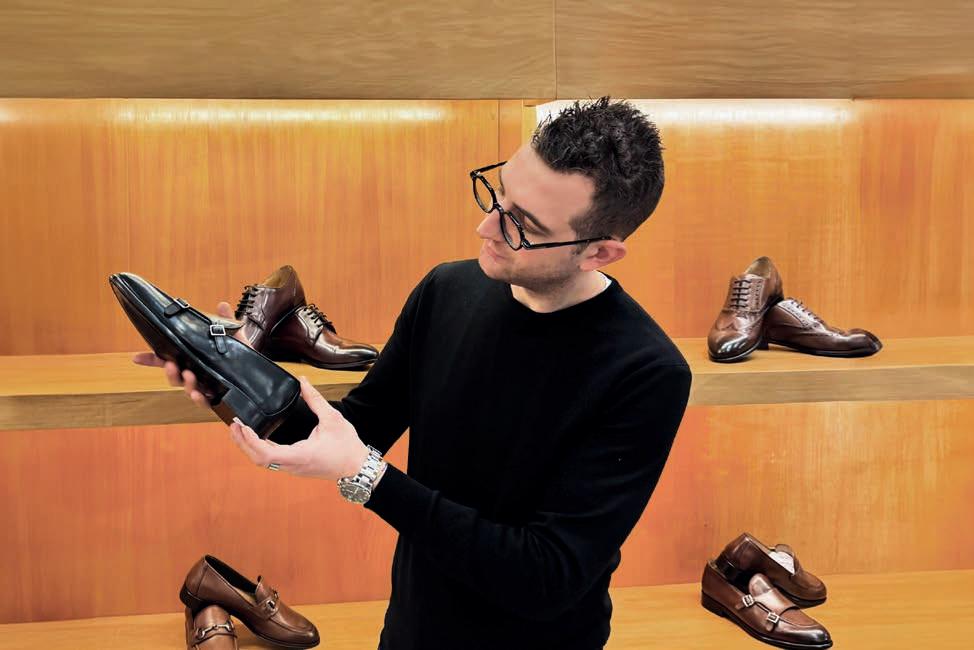
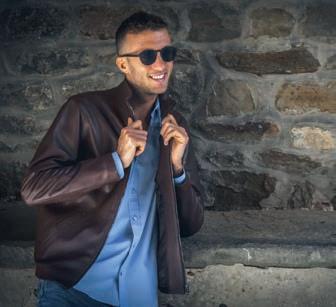


Founded in 1980 by Gabriele Mangani, Giotto is the essence of Florentine artisanship in the form of leather goods made entirely by hand using superb quality Italian hides. The company is headed by Daniele Mangani, who draw on Gabriele’s teachings and continue his tradition with dedication and enormous passion. Thanks to its many years of experience, today Giotto reflects the very best of Made in Italy values. Tradition and innovation, quality and resilience, style and comfort: these are the essential elements of every Giotto creation, alongside the excellence of the best Italian leather.
